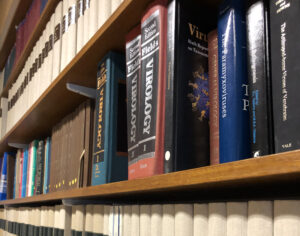Cytoskeleton dynamics and motility

Publications
3888256
ACTIN
1
chicago-author-date
50
date
desc
year
14271
https://www.i2bc.paris-saclay.fr/wp-content/plugins/zotpress/
%7B%22status%22%3A%22success%22%2C%22updateneeded%22%3Afalse%2C%22instance%22%3Afalse%2C%22meta%22%3A%7B%22request_last%22%3A50%2C%22request_next%22%3A50%2C%22used_cache%22%3Atrue%7D%2C%22data%22%3A%5B%7B%22key%22%3A%22UC5AJIBF%22%2C%22library%22%3A%7B%22id%22%3A3888256%7D%2C%22meta%22%3A%7B%22creatorSummary%22%3A%22Depierre%20et%20al.%22%2C%22parsedDate%22%3A%222025-04-18%22%2C%22numChildren%22%3A1%7D%2C%22bib%22%3A%22%3Cdiv%20class%3D%5C%22csl-bib-body%5C%22%20style%3D%5C%22line-height%3A%201.35%3B%20padding-left%3A%201em%3B%20text-indent%3A-1em%3B%5C%22%3E%5Cn%20%20%3Cdiv%20class%3D%5C%22csl-entry%5C%22%3EDepierre%2C%20Manon%2C%20Anna%20Mularski%2C%20Artur%20Ruppel%2C%20Christophe%20Le%20Clainche%2C%20Martial%20Balland%2C%20and%20Florence%20Niedergang.%202025.%20%26%23x201C%3BA%20Crosstalk%20between%20Adhesion%20and%20Phagocytosis%20Integrates%20Macrophage%20Functions%20into%20Their%20Microenvironment.%26%23x201D%3B%20%3Ci%3EIScience%3C%5C%2Fi%3E%2028%20%284%29%3A%20112067.%20%3Ca%20class%3D%27zp-DOIURL%27%20href%3D%27https%3A%5C%2F%5C%2Fdoi.org%5C%2F10.1016%5C%2Fj.isci.2025.112067%27%3Ehttps%3A%5C%2F%5C%2Fdoi.org%5C%2F10.1016%5C%2Fj.isci.2025.112067%3C%5C%2Fa%3E.%3C%5C%2Fdiv%3E%5Cn%3C%5C%2Fdiv%3E%22%2C%22data%22%3A%7B%22itemType%22%3A%22journalArticle%22%2C%22title%22%3A%22A%20crosstalk%20between%20adhesion%20and%20phagocytosis%20integrates%20macrophage%20functions%20into%20their%20microenvironment%22%2C%22creators%22%3A%5B%7B%22creatorType%22%3A%22author%22%2C%22firstName%22%3A%22Manon%22%2C%22lastName%22%3A%22Depierre%22%7D%2C%7B%22creatorType%22%3A%22author%22%2C%22firstName%22%3A%22Anna%22%2C%22lastName%22%3A%22Mularski%22%7D%2C%7B%22creatorType%22%3A%22author%22%2C%22firstName%22%3A%22Artur%22%2C%22lastName%22%3A%22Ruppel%22%7D%2C%7B%22creatorType%22%3A%22author%22%2C%22firstName%22%3A%22Christophe%22%2C%22lastName%22%3A%22Le%20Clainche%22%7D%2C%7B%22creatorType%22%3A%22author%22%2C%22firstName%22%3A%22Martial%22%2C%22lastName%22%3A%22Balland%22%7D%2C%7B%22creatorType%22%3A%22author%22%2C%22firstName%22%3A%22Florence%22%2C%22lastName%22%3A%22Niedergang%22%7D%5D%2C%22abstractNote%22%3A%22Phagocytosis%20is%20the%20process%20of%20actin-dependent%20internalization%20and%20degradation%20of%20large%20particles.%20Macrophages%2C%20which%20are%20professional%20phagocytes%2C%20are%20present%20in%20all%20tissues%20and%20are%2C%20thus%2C%20exposed%20to%20environments%20with%20different%20mechanical%20properties.%20How%20mechanical%20cues%20from%20macrophages%27%20environment%20affect%20their%20ability%20to%20phagocytose%20and%2C%20in%20turn%2C%20how%20phagocytosis%20influences%20how%20phagocytic%20cells%20interact%20with%20their%20environment%20remain%20poorly%20understood.%20We%20found%20that%20the%20ability%20of%20macrophages%20to%20perform%20phagocytosis%20varied%20with%20the%20substrate%20stiffness.%20Using%20live%20traction%20force%20microscopy%2C%20we%20showed%20that%20phagocytosing%20macrophages%20applied%20more%20dynamic%20traction%20forces%20to%20their%20substrate.%20In%20addition%2C%20integrin-mediated%20phagocytosis%20triggered%20a%20transient%20loss%20of%20podosomes%20that%20was%20associated%20with%20decreased%20degradation%20of%20the%20extracellular%20matrix%2C%20concomitantly%20with%20RhoA%20activation%20and%20F-actin%20recruitment%20at%20phagocytic%20cups.%20Overall%2C%20these%20results%20highlight%20a%20crosstalk%20between%20macrophage%20phagocytosis%20and%20cell%20adhesion.%20Mechanical%20properties%20of%20the%20microenvironment%20influence%20phagocytosis%2C%20which%2C%20in%20turn%2C%20impacts%20how%20macrophages%20interact%20with%20their%20surroundings.%22%2C%22date%22%3A%222025-04-18%22%2C%22language%22%3A%22eng%22%2C%22DOI%22%3A%2210.1016%5C%2Fj.isci.2025.112067%22%2C%22ISSN%22%3A%222589-0042%22%2C%22url%22%3A%22%22%2C%22collections%22%3A%5B%5D%2C%22dateModified%22%3A%222025-04-07T08%3A27%3A03Z%22%7D%7D%2C%7B%22key%22%3A%22C9ZGW5NN%22%2C%22library%22%3A%7B%22id%22%3A3888256%7D%2C%22meta%22%3A%7B%22creatorSummary%22%3A%22James%20et%20al.%22%2C%22parsedDate%22%3A%222025-02%22%2C%22numChildren%22%3A1%7D%2C%22bib%22%3A%22%3Cdiv%20class%3D%5C%22csl-bib-body%5C%22%20style%3D%5C%22line-height%3A%201.35%3B%20padding-left%3A%201em%3B%20text-indent%3A-1em%3B%5C%22%3E%5Cn%20%20%3Cdiv%20class%3D%5C%22csl-entry%5C%22%3EJames%2C%20John%2C%20Artem%20I.%20Fokin%2C%20Dmitry%20Y.%20Guschin%2C%20Hong%20Wang%2C%20Anna%20Polesskaya%2C%20Svetlana%20N.%20Rubtsova%2C%20Christophe%20Le%20Clainche%2C%20Pascal%20Silberzan%2C%20Alexis%20M.%20Gautreau%2C%20and%20St%26%23xE9%3Bphane%20Romero.%202025.%20%26%23x201C%3BVinculin-Arp2%5C%2F3%20Interaction%20Inhibits%20Branched%20Actin%20Assembly%20to%20Control%20Migration%20and%20Proliferation.%26%23x201D%3B%20%3Ci%3ELife%20Science%20Alliance%3C%5C%2Fi%3E%208%20%282%29%3A%20e202402583.%20%3Ca%20class%3D%27zp-DOIURL%27%20href%3D%27https%3A%5C%2F%5C%2Fdoi.org%5C%2F10.26508%5C%2Flsa.202402583%27%3Ehttps%3A%5C%2F%5C%2Fdoi.org%5C%2F10.26508%5C%2Flsa.202402583%3C%5C%2Fa%3E.%3C%5C%2Fdiv%3E%5Cn%3C%5C%2Fdiv%3E%22%2C%22data%22%3A%7B%22itemType%22%3A%22journalArticle%22%2C%22title%22%3A%22Vinculin-Arp2%5C%2F3%20interaction%20inhibits%20branched%20actin%20assembly%20to%20control%20migration%20and%20proliferation%22%2C%22creators%22%3A%5B%7B%22creatorType%22%3A%22author%22%2C%22firstName%22%3A%22John%22%2C%22lastName%22%3A%22James%22%7D%2C%7B%22creatorType%22%3A%22author%22%2C%22firstName%22%3A%22Artem%20I.%22%2C%22lastName%22%3A%22Fokin%22%7D%2C%7B%22creatorType%22%3A%22author%22%2C%22firstName%22%3A%22Dmitry%20Y.%22%2C%22lastName%22%3A%22Guschin%22%7D%2C%7B%22creatorType%22%3A%22author%22%2C%22firstName%22%3A%22Hong%22%2C%22lastName%22%3A%22Wang%22%7D%2C%7B%22creatorType%22%3A%22author%22%2C%22firstName%22%3A%22Anna%22%2C%22lastName%22%3A%22Polesskaya%22%7D%2C%7B%22creatorType%22%3A%22author%22%2C%22firstName%22%3A%22Svetlana%20N.%22%2C%22lastName%22%3A%22Rubtsova%22%7D%2C%7B%22creatorType%22%3A%22author%22%2C%22firstName%22%3A%22Christophe%20Le%22%2C%22lastName%22%3A%22Clainche%22%7D%2C%7B%22creatorType%22%3A%22author%22%2C%22firstName%22%3A%22Pascal%22%2C%22lastName%22%3A%22Silberzan%22%7D%2C%7B%22creatorType%22%3A%22author%22%2C%22firstName%22%3A%22Alexis%20M.%22%2C%22lastName%22%3A%22Gautreau%22%7D%2C%7B%22creatorType%22%3A%22author%22%2C%22firstName%22%3A%22St%5Cu00e9phane%22%2C%22lastName%22%3A%22Romero%22%7D%5D%2C%22abstractNote%22%3A%22Vinculin%20is%20a%20mechanotransducer%20that%20reinforces%20links%20between%20cell%20adhesions%20and%20linear%20arrays%20of%20actin%20filaments%20upon%20myosin-mediated%20contractility.%20Both%20adhesions%20to%20the%20substratum%20and%20neighboring%20cells%2C%20however%2C%20are%20initiated%20within%20membrane%20protrusions%20that%20originate%20from%20Arp2%5C%2F3-nucleated%20branched%20actin%20networks.%20Vinculin%20has%20been%20reported%20to%20interact%20with%20the%20Arp2%5C%2F3%20complex%2C%20but%20the%20role%20of%20this%20interaction%20remains%20poorly%20understood.%20Here%2C%20we%20compared%20the%20phenotypes%20of%20vinculin%20knock-out%20%28KO%29%20cells%20with%20those%20of%20knock-in%20%28KI-P878A%29%20cells%2C%20where%20the%20point%20mutation%20P878A%20that%20impairs%20the%20Arp2%5C%2F3%20interaction%20is%20introduced%20in%20the%20two%20vinculin%20alleles%20of%20MCF10A%20mammary%20epithelial%20cells.%20The%20interaction%20of%20vinculin%20with%20Arp2%5C%2F3%20inhibits%20actin%20polymerization%20at%20membrane%20protrusions%20and%20decreases%20migration%20persistence%20of%20single%20cells.%20In%20cell%20monolayers%2C%20vinculin%20recruits%20Arp2%5C%2F3%20and%20the%20vinculin-Arp2%5C%2F3%20interaction%20participates%20in%20cell-cell%20junction%20plasticity.%20Through%20this%20interaction%2C%20vinculin%20controls%20the%20decision%20to%20enter%20a%20new%20cell%20cycle%20as%20a%20function%20of%20cell%20density.%22%2C%22date%22%3A%222025-02%22%2C%22language%22%3A%22eng%22%2C%22DOI%22%3A%2210.26508%5C%2Flsa.202402583%22%2C%22ISSN%22%3A%222575-1077%22%2C%22url%22%3A%22%22%2C%22collections%22%3A%5B%5D%2C%22dateModified%22%3A%222024-11-18T07%3A36%3A24Z%22%7D%7D%2C%7B%22key%22%3A%22VS88CNBW%22%2C%22library%22%3A%7B%22id%22%3A3888256%7D%2C%22meta%22%3A%7B%22creatorSummary%22%3A%22Ciobanasu%20et%20al.%22%2C%22parsedDate%22%3A%222023-11-10%22%2C%22numChildren%22%3A1%7D%2C%22bib%22%3A%22%3Cdiv%20class%3D%5C%22csl-bib-body%5C%22%20style%3D%5C%22line-height%3A%201.35%3B%20padding-left%3A%201em%3B%20text-indent%3A-1em%3B%5C%22%3E%5Cn%20%20%3Cdiv%20class%3D%5C%22csl-entry%5C%22%3ECiobanasu%2C%20Corina%2C%20Julien%20Pernier%2C%20and%20Christophe%20Le%20Clainche.%202023.%20%26%23x201C%3BIntegrin%20Facilitates%20the%20Internalization%20of%20TAT%20Peptide%20Conjugated%20to%20RGD%20Motif%20in%20Model%20Lipid%20Membranes.%26%23x201D%3B%20%3Ci%3EChembiochem%3A%20A%20European%20Journal%20of%20Chemical%20Biology%3C%5C%2Fi%3E%2C%20November%2C%20e202300642.%20%3Ca%20class%3D%27zp-DOIURL%27%20href%3D%27https%3A%5C%2F%5C%2Fdoi.org%5C%2F10.1002%5C%2Fcbic.202300642%27%3Ehttps%3A%5C%2F%5C%2Fdoi.org%5C%2F10.1002%5C%2Fcbic.202300642%3C%5C%2Fa%3E.%3C%5C%2Fdiv%3E%5Cn%3C%5C%2Fdiv%3E%22%2C%22data%22%3A%7B%22itemType%22%3A%22journalArticle%22%2C%22title%22%3A%22Integrin%20Facilitates%20the%20Internalization%20of%20TAT%20Peptide%20Conjugated%20to%20RGD%20Motif%20in%20Model%20Lipid%20Membranes%22%2C%22creators%22%3A%5B%7B%22creatorType%22%3A%22author%22%2C%22firstName%22%3A%22Corina%22%2C%22lastName%22%3A%22Ciobanasu%22%7D%2C%7B%22creatorType%22%3A%22author%22%2C%22firstName%22%3A%22Julien%22%2C%22lastName%22%3A%22Pernier%22%7D%2C%7B%22creatorType%22%3A%22author%22%2C%22firstName%22%3A%22Christophe%22%2C%22lastName%22%3A%22Le%20Clainche%22%7D%5D%2C%22abstractNote%22%3A%22In%20recent%20years%2C%20targeted%20drug%20delivery%20has%20attracted%20a%20great%20interest%20for%20enhanced%20therapeutic%20efficiency%2C%20with%20diminished%20side%20effects%2C%20especially%20in%20cancer%20therapy.%20Cell%20penetrating%20peptides%20like%20HIV1-TAT%20peptide%2C%20appear%20to%20be%20the%20perfect%20vectors%20for%20translocating%20drugs%20or%20other%20cargoes%20across%20the%20plasma%20membrane%2C%20but%20their%20application%20is%20limited%20mostly%20due%20to%20insufficient%20specificity%20for%20intended%20targets.%20The%20tripeptide%20motif%20RGD%20%28arginine-glycine-aspartate%29%2C%20found%20in%20extracellular%20matrix%20proteins%20has%20high%20affinity%20for%20integrin%20receptors%20overexpressed%20in%20cancer%20and%20it%20is%20involved%20in%20different%20phases%20of%20disease%20progression%2C%20including%20proliferation%2C%20invasion%20and%20migration.%20Discovery%20of%20new%20peptides%20with%20high%20binding%20affinity%20for%20disease%20receptors%20and%20permeability%20of%20plasma%20membranes%20is%20desirable%20for%20both%2C%20development%20of%20targeted%20drug%20delivery%20systems%20and%20early%20detection%20and%20diagnosis.%20To%20complement%20the%20TAT%20peptide%20with%20specific%20targeting%20ability%2C%20we%20conjugated%20it%20with%20an%20integrin-binding%20RGD%20motif.%20In%20this%20paper%5Cu00a0we%20describe%20the%20permeability%20abilities%20and%20specificity%20for%20integrin%20receptor%20of%20RGD-TAT%20peptides%20in%20model%20membranes.%20Our%20findings%20reveal%20that%20RGD-TAT%20peptide%20maintains%20its%20ability%20to%20permeate%20lipid%20membranes%20and%20exhibits%20specificity%20for%20integrin%20receptors%20embedded%20in%20giant%20unilamellar%20vesicles.%20This%20promising%20outcome%20suggests%20that%20the%5Cu00a0peptide%20has%20significant%20potential%20for%20aplications%20in%20targeted%20drug%20delivery%20systems.%22%2C%22date%22%3A%222023-11-10%22%2C%22language%22%3A%22eng%22%2C%22DOI%22%3A%2210.1002%5C%2Fcbic.202300642%22%2C%22ISSN%22%3A%221439-7633%22%2C%22url%22%3A%22%22%2C%22collections%22%3A%5B%5D%2C%22dateModified%22%3A%222023-11-13T08%3A30%3A46Z%22%7D%7D%2C%7B%22key%22%3A%2288MXBEN3%22%2C%22library%22%3A%7B%22id%22%3A3888256%7D%2C%22meta%22%3A%7B%22creatorSummary%22%3A%22Valencia-Gallardo%20et%20al.%22%2C%22parsedDate%22%3A%222023-04-17%22%2C%22numChildren%22%3A2%7D%2C%22bib%22%3A%22%3Cdiv%20class%3D%5C%22csl-bib-body%5C%22%20style%3D%5C%22line-height%3A%201.35%3B%20padding-left%3A%201em%3B%20text-indent%3A-1em%3B%5C%22%3E%5Cn%20%20%3Cdiv%20class%3D%5C%22csl-entry%5C%22%3EValencia-Gallardo%2C%20Cesar%2C%20Daniel-Isui%20Aguilar-Salvador%2C%20Hamed%20Khakzad%2C%20Benjamin%20Cocom-Chan%2C%20Charles%20Bou-Nader%2C%20Christophe%20Velours%2C%20Yosra%20Zarrouk%2C%20et%20al.%202023.%20%26%23x201C%3BShigella%20IpaA%20Mediates%20Actin%20Bundling%20through%20Diffusible%20Vinculin%20Oligomers%20with%20Activation%20Imprint.%26%23x201D%3B%20%3Ci%3ECell%20Reports%3C%5C%2Fi%3E%2042%20%284%29%3A%20112405.%20%3Ca%20class%3D%27zp-DOIURL%27%20href%3D%27https%3A%5C%2F%5C%2Fdoi.org%5C%2F10.1016%5C%2Fj.celrep.2023.112405%27%3Ehttps%3A%5C%2F%5C%2Fdoi.org%5C%2F10.1016%5C%2Fj.celrep.2023.112405%3C%5C%2Fa%3E.%3C%5C%2Fdiv%3E%5Cn%3C%5C%2Fdiv%3E%22%2C%22data%22%3A%7B%22itemType%22%3A%22journalArticle%22%2C%22title%22%3A%22Shigella%20IpaA%20mediates%20actin%20bundling%20through%20diffusible%20vinculin%20oligomers%20with%20activation%20imprint%22%2C%22creators%22%3A%5B%7B%22creatorType%22%3A%22author%22%2C%22firstName%22%3A%22Cesar%22%2C%22lastName%22%3A%22Valencia-Gallardo%22%7D%2C%7B%22creatorType%22%3A%22author%22%2C%22firstName%22%3A%22Daniel-Isui%22%2C%22lastName%22%3A%22Aguilar-Salvador%22%7D%2C%7B%22creatorType%22%3A%22author%22%2C%22firstName%22%3A%22Hamed%22%2C%22lastName%22%3A%22Khakzad%22%7D%2C%7B%22creatorType%22%3A%22author%22%2C%22firstName%22%3A%22Benjamin%22%2C%22lastName%22%3A%22Cocom-Chan%22%7D%2C%7B%22creatorType%22%3A%22author%22%2C%22firstName%22%3A%22Charles%22%2C%22lastName%22%3A%22Bou-Nader%22%7D%2C%7B%22creatorType%22%3A%22author%22%2C%22firstName%22%3A%22Christophe%22%2C%22lastName%22%3A%22Velours%22%7D%2C%7B%22creatorType%22%3A%22author%22%2C%22firstName%22%3A%22Yosra%22%2C%22lastName%22%3A%22Zarrouk%22%7D%2C%7B%22creatorType%22%3A%22author%22%2C%22firstName%22%3A%22Christophe%22%2C%22lastName%22%3A%22Le%20Clainche%22%7D%2C%7B%22creatorType%22%3A%22author%22%2C%22firstName%22%3A%22Christian%22%2C%22lastName%22%3A%22Malosse%22%7D%2C%7B%22creatorType%22%3A%22author%22%2C%22firstName%22%3A%22Diogo%20Borges%22%2C%22lastName%22%3A%22Lima%22%7D%2C%7B%22creatorType%22%3A%22author%22%2C%22firstName%22%3A%22Nicole%22%2C%22lastName%22%3A%22Quenech%27Du%22%7D%2C%7B%22creatorType%22%3A%22author%22%2C%22firstName%22%3A%22Bilal%22%2C%22lastName%22%3A%22Mazhar%22%7D%2C%7B%22creatorType%22%3A%22author%22%2C%22firstName%22%3A%22Sami%22%2C%22lastName%22%3A%22Essid%22%7D%2C%7B%22creatorType%22%3A%22author%22%2C%22firstName%22%3A%22Marc%22%2C%22lastName%22%3A%22Fontecave%22%7D%2C%7B%22creatorType%22%3A%22author%22%2C%22firstName%22%3A%22Atef%22%2C%22lastName%22%3A%22Asnacios%22%7D%2C%7B%22creatorType%22%3A%22author%22%2C%22firstName%22%3A%22Julia%22%2C%22lastName%22%3A%22Chamot-Rooke%22%7D%2C%7B%22creatorType%22%3A%22author%22%2C%22firstName%22%3A%22Lars%22%2C%22lastName%22%3A%22Malmstr%5Cu00f6m%22%7D%2C%7B%22creatorType%22%3A%22author%22%2C%22firstName%22%3A%22Guy%22%2C%22lastName%22%3A%22Tran%20Van%20Nhieu%22%7D%5D%2C%22abstractNote%22%3A%22Upon%20activation%2C%20vinculin%20reinforces%20cytoskeletal%20anchorage%20during%20cell%20adhesion.%20Activating%20ligands%20classically%20disrupt%20intramolecular%20interactions%20between%20the%20vinculin%20head%20and%20tail%20domains%20that%20bind%20to%20actin%20filaments.%20Here%2C%20we%20show%20that%20Shigella%20IpaA%20triggers%20major%20allosteric%20changes%20in%20the%20head%20domain%2C%20leading%20to%20vinculin%20homo-oligomerization.%20Through%20the%20cooperative%20binding%20of%20its%20three%20vinculin-binding%20sites%20%28VBSs%29%2C%20IpaA%20induces%20a%20striking%20reorientation%20of%20the%20D1%20and%20D2%20head%20subdomains%20associated%20with%20vinculin%20oligomerization.%20IpaA%20thus%20acts%20as%20a%20catalyst%20producing%20vinculin%20clusters%20that%20bundle%20actin%20at%20a%20distance%20from%20the%20activation%20site%20and%20trigger%20the%20formation%20of%20highly%20stable%20adhesions%20resisting%20the%20action%20of%20actin%20relaxing%20drugs.%20Unlike%20canonical%20activation%2C%20vinculin%20homo-oligomers%20induced%20by%20IpaA%20appear%20to%20keep%20a%20persistent%20imprint%20of%20the%20activated%20state%20in%20addition%20to%20their%20bundling%20activity%2C%20accounting%20for%20stable%20cell%20adhesion%20independent%20of%20force%20transduction%20and%20relevant%20to%20bacterial%20invasion.%22%2C%22date%22%3A%222023-04-17%22%2C%22language%22%3A%22eng%22%2C%22DOI%22%3A%2210.1016%5C%2Fj.celrep.2023.112405%22%2C%22ISSN%22%3A%222211-1247%22%2C%22url%22%3A%22%22%2C%22collections%22%3A%5B%5D%2C%22dateModified%22%3A%222023-04-24T11%3A38%3A09Z%22%7D%7D%2C%7B%22key%22%3A%22M4T8JZIR%22%2C%22library%22%3A%7B%22id%22%3A3888256%7D%2C%22meta%22%3A%7B%22creatorSummary%22%3A%22Pernier%20et%20al.%22%2C%22parsedDate%22%3A%222023-04-15%22%2C%22numChildren%22%3A1%7D%2C%22bib%22%3A%22%3Cdiv%20class%3D%5C%22csl-bib-body%5C%22%20style%3D%5C%22line-height%3A%201.35%3B%20padding-left%3A%201em%3B%20text-indent%3A-1em%3B%5C%22%3E%5Cn%20%20%3Cdiv%20class%3D%5C%22csl-entry%5C%22%3EPernier%2C%20Julien%2C%20Marcelina%20Cardoso%20Dos%20Santos%2C%20Mariem%20Souissi%2C%20Adrien%20Joly%2C%20Hemalatha%20Narassimprakash%2C%20Olivier%20Rossier%2C%20Gr%26%23xE9%3Bgory%20Giannone%2C%20Emmanu%26%23xE8%3Ble%20Helfer%2C%20Kheya%20Sengupta%2C%20and%20Christophe%20Le%20Clainche.%202023.%20%26%23x201C%3BTalin%20and%20Kindlin%20Cooperate%20to%20Control%20the%20Density%20of%20Integrin%20Clusters.%26%23x201D%3B%20%3Ci%3EJournal%20of%20Cell%20Science%3C%5C%2Fi%3E%20136%20%288%29%3A%20jcs260746.%20%3Ca%20class%3D%27zp-DOIURL%27%20href%3D%27https%3A%5C%2F%5C%2Fdoi.org%5C%2F10.1242%5C%2Fjcs.260746%27%3Ehttps%3A%5C%2F%5C%2Fdoi.org%5C%2F10.1242%5C%2Fjcs.260746%3C%5C%2Fa%3E.%3C%5C%2Fdiv%3E%5Cn%3C%5C%2Fdiv%3E%22%2C%22data%22%3A%7B%22itemType%22%3A%22journalArticle%22%2C%22title%22%3A%22Talin%20and%20kindlin%20cooperate%20to%20control%20the%20density%20of%20integrin%20clusters%22%2C%22creators%22%3A%5B%7B%22creatorType%22%3A%22author%22%2C%22firstName%22%3A%22Julien%22%2C%22lastName%22%3A%22Pernier%22%7D%2C%7B%22creatorType%22%3A%22author%22%2C%22firstName%22%3A%22Marcelina%20Cardoso%20Dos%22%2C%22lastName%22%3A%22Santos%22%7D%2C%7B%22creatorType%22%3A%22author%22%2C%22firstName%22%3A%22Mariem%22%2C%22lastName%22%3A%22Souissi%22%7D%2C%7B%22creatorType%22%3A%22author%22%2C%22firstName%22%3A%22Adrien%22%2C%22lastName%22%3A%22Joly%22%7D%2C%7B%22creatorType%22%3A%22author%22%2C%22firstName%22%3A%22Hemalatha%22%2C%22lastName%22%3A%22Narassimprakash%22%7D%2C%7B%22creatorType%22%3A%22author%22%2C%22firstName%22%3A%22Olivier%22%2C%22lastName%22%3A%22Rossier%22%7D%2C%7B%22creatorType%22%3A%22author%22%2C%22firstName%22%3A%22Gr%5Cu00e9gory%22%2C%22lastName%22%3A%22Giannone%22%7D%2C%7B%22creatorType%22%3A%22author%22%2C%22firstName%22%3A%22Emmanu%5Cu00e8le%22%2C%22lastName%22%3A%22Helfer%22%7D%2C%7B%22creatorType%22%3A%22author%22%2C%22firstName%22%3A%22Kheya%22%2C%22lastName%22%3A%22Sengupta%22%7D%2C%7B%22creatorType%22%3A%22author%22%2C%22firstName%22%3A%22Christophe%20Le%22%2C%22lastName%22%3A%22Clainche%22%7D%5D%2C%22abstractNote%22%3A%22Focal%20adhesions%20are%20composed%20of%20transmembrane%20integrins%2C%20linking%20the%20extracellular%20matrix%20to%20the%20actomyosin%20cytoskeleton%2C%20via%20cytoplasmic%20proteins.%20Adhesion%20depends%20on%20the%20activation%20of%20integrins.%20Talin%20and%20kindlin%20proteins%20are%20intracellular%20activators%20of%20integrins%20that%20bind%20to%20%5Cu03b2-integrin%20cytoplasmic%20tails.%20Integrin%20activation%20and%20clustering%20through%20extracellular%20ligands%20guide%20the%20organization%20of%20adhesion%20complexes.%20However%2C%20the%20roles%20of%20talin%20and%20kindlin%20in%20this%20process%20are%20poorly%20understood.%20To%20determine%20the%20contribution%20of%20talin%2C%20kindlin%2C%20lipids%20and%20actomyosin%20in%20integrin%20clustering%2C%20we%20used%20a%20biomimetic%20in%20vitro%20system%2C%20made%20of%20giant%20unilamellar%20vesicles%2C%20containing%20transmembrane%20integrins%20%28herein%20%5Cu03b1IIb%5Cu03b23%29%2C%20with%20purified%20talin%20%28talin-1%29%2C%20kindlin%20%28kindlin-2%2C%20also%20known%20as%20FERMT2%29%20and%20actomyosin.%20Here%2C%20we%20show%20that%20talin%20and%20kindlin%20individually%20have%20the%20ability%20to%20cluster%20integrins.%20Talin%20and%20kindlin%20synergize%20to%20induce%20the%20formation%20of%20larger%20integrin%20clusters%20containing%20the%20three%20proteins.%20Comparison%20of%20protein%20density%20reveals%20that%20kindlin%20increases%20talin%20and%20integrin%20density%2C%20whereas%20talin%20does%20not%20affect%20kindlin%20and%20integrin%20density.%20Finally%2C%20kindlin%20increases%20integrin-talin-actomyosin%20coupling.%20Our%20study%20unambiguously%20demonstrates%20how%20kindlin%20and%20talin%20cooperate%20to%20induce%20integrin%20clustering%2C%20which%20is%20a%20major%20parameter%20for%20cell%20adhesion.%22%2C%22date%22%3A%222023-04-15%22%2C%22language%22%3A%22eng%22%2C%22DOI%22%3A%2210.1242%5C%2Fjcs.260746%22%2C%22ISSN%22%3A%221477-9137%22%2C%22url%22%3A%22%22%2C%22collections%22%3A%5B%5D%2C%22dateModified%22%3A%222023-04-24T11%3A36%3A39Z%22%7D%7D%2C%7B%22key%22%3A%22WHZY5VQZ%22%2C%22library%22%3A%7B%22id%22%3A3888256%7D%2C%22meta%22%3A%7B%22creatorSummary%22%3A%22Tsai%20et%20al.%22%2C%22parsedDate%22%3A%222022-10-14%22%2C%22numChildren%22%3A1%7D%2C%22bib%22%3A%22%3Cdiv%20class%3D%5C%22csl-bib-body%5C%22%20style%3D%5C%22line-height%3A%201.35%3B%20padding-left%3A%201em%3B%20text-indent%3A-1em%3B%5C%22%3E%5Cn%20%20%3Cdiv%20class%3D%5C%22csl-entry%5C%22%3ETsai%2C%20Feng-Ching%2C%20J.%20Michael%20Henderson%2C%20Zack%20Jarin%2C%20Elena%20Kremneva%2C%20Yosuke%20Senju%2C%20Julien%20Pernier%2C%20Oleg%20Mikhajlov%2C%20et%20al.%202022.%20%26%23x201C%3BActivated%20I-BAR%20IRSp53%20Clustering%20Controls%20the%20Formation%20of%20VASP-Actin%26%23x2013%3BBased%20Membrane%20Protrusions.%26%23x201D%3B%20%3Ci%3EScience%20Advances%3C%5C%2Fi%3E%208%20%2841%29%3A%20eabp8677.%20%3Ca%20class%3D%27zp-DOIURL%27%20href%3D%27https%3A%5C%2F%5C%2Fdoi.org%5C%2F10.1126%5C%2Fsciadv.abp8677%27%3Ehttps%3A%5C%2F%5C%2Fdoi.org%5C%2F10.1126%5C%2Fsciadv.abp8677%3C%5C%2Fa%3E.%3C%5C%2Fdiv%3E%5Cn%3C%5C%2Fdiv%3E%22%2C%22data%22%3A%7B%22itemType%22%3A%22journalArticle%22%2C%22title%22%3A%22Activated%20I-BAR%20IRSp53%20clustering%20controls%20the%20formation%20of%20VASP-actin%5Cu2013based%20membrane%20protrusions%22%2C%22creators%22%3A%5B%7B%22creatorType%22%3A%22author%22%2C%22firstName%22%3A%22Feng-Ching%22%2C%22lastName%22%3A%22Tsai%22%7D%2C%7B%22creatorType%22%3A%22author%22%2C%22firstName%22%3A%22J.%20Michael%22%2C%22lastName%22%3A%22Henderson%22%7D%2C%7B%22creatorType%22%3A%22author%22%2C%22firstName%22%3A%22Zack%22%2C%22lastName%22%3A%22Jarin%22%7D%2C%7B%22creatorType%22%3A%22author%22%2C%22firstName%22%3A%22Elena%22%2C%22lastName%22%3A%22Kremneva%22%7D%2C%7B%22creatorType%22%3A%22author%22%2C%22firstName%22%3A%22Yosuke%22%2C%22lastName%22%3A%22Senju%22%7D%2C%7B%22creatorType%22%3A%22author%22%2C%22firstName%22%3A%22Julien%22%2C%22lastName%22%3A%22Pernier%22%7D%2C%7B%22creatorType%22%3A%22author%22%2C%22firstName%22%3A%22Oleg%22%2C%22lastName%22%3A%22Mikhajlov%22%7D%2C%7B%22creatorType%22%3A%22author%22%2C%22firstName%22%3A%22John%22%2C%22lastName%22%3A%22Manzi%22%7D%2C%7B%22creatorType%22%3A%22author%22%2C%22firstName%22%3A%22Konstantin%22%2C%22lastName%22%3A%22Kogan%22%7D%2C%7B%22creatorType%22%3A%22author%22%2C%22firstName%22%3A%22Christophe%22%2C%22lastName%22%3A%22Le%20Clainche%22%7D%2C%7B%22creatorType%22%3A%22author%22%2C%22firstName%22%3A%22Gregory%20A.%22%2C%22lastName%22%3A%22Voth%22%7D%2C%7B%22creatorType%22%3A%22author%22%2C%22firstName%22%3A%22Pekka%22%2C%22lastName%22%3A%22Lappalainen%22%7D%2C%7B%22creatorType%22%3A%22author%22%2C%22firstName%22%3A%22Patricia%22%2C%22lastName%22%3A%22Bassereau%22%7D%5D%2C%22abstractNote%22%3A%22%22%2C%22date%22%3A%222022-10-14%22%2C%22language%22%3A%22%22%2C%22DOI%22%3A%2210.1126%5C%2Fsciadv.abp8677%22%2C%22ISSN%22%3A%22%22%2C%22url%22%3A%22https%3A%5C%2F%5C%2Fwww.science.org%5C%2Fdoi%5C%2F10.1126%5C%2Fsciadv.abp8677%22%2C%22collections%22%3A%5B%227EGDQ8LV%22%5D%2C%22dateModified%22%3A%222022-10-24T06%3A11%3A48Z%22%7D%7D%2C%7B%22key%22%3A%229VCAWJKX%22%2C%22library%22%3A%7B%22id%22%3A3888256%7D%2C%22meta%22%3A%7B%22creatorSummary%22%3A%22Pernier%20et%20al.%22%2C%22parsedDate%22%3A%222022-10-07%22%2C%22numChildren%22%3A1%7D%2C%22bib%22%3A%22%3Cdiv%20class%3D%5C%22csl-bib-body%5C%22%20style%3D%5C%22line-height%3A%201.35%3B%20padding-left%3A%201em%3B%20text-indent%3A-1em%3B%5C%22%3E%5Cn%20%20%3Cdiv%20class%3D%5C%22csl-entry%5C%22%3EPernier%2C%20Julien%2C%20Marcelina%20Cardoso%20Dos%20Santos%2C%20Mariem%20Souissi%2C%20Adrien%20Joly%2C%20Hemalatha%20Narassimprakash%2C%20Olivier%20Rossier%2C%20Gr%26%23xE9%3Bgory%20Giannone%2C%20Emmanu%26%23xE8%3Ble%20Helfer%2C%20Kheya%20Sengupta%2C%20and%20Christophe%20Le%20Clainche.%202022.%20%26%23x201C%3BTalin%20and%20Kindlin%20Cooperate%20to%20Control%20the%20Density%20of%20Integrin%20Clusters.%26%23x201D%3B%20bioRxiv.%20%3Ca%20class%3D%27zp-DOIURL%27%20href%3D%27https%3A%5C%2F%5C%2Fdoi.org%5C%2F10.1101%5C%2F2022.10.07.511266%27%3Ehttps%3A%5C%2F%5C%2Fdoi.org%5C%2F10.1101%5C%2F2022.10.07.511266%3C%5C%2Fa%3E.%3C%5C%2Fdiv%3E%5Cn%3C%5C%2Fdiv%3E%22%2C%22data%22%3A%7B%22itemType%22%3A%22preprint%22%2C%22title%22%3A%22Talin%20and%20kindlin%20cooperate%20to%20control%20the%20density%20of%20integrin%20clusters%22%2C%22creators%22%3A%5B%7B%22creatorType%22%3A%22author%22%2C%22firstName%22%3A%22Julien%22%2C%22lastName%22%3A%22Pernier%22%7D%2C%7B%22creatorType%22%3A%22author%22%2C%22firstName%22%3A%22Marcelina%20Cardoso%20Dos%22%2C%22lastName%22%3A%22Santos%22%7D%2C%7B%22creatorType%22%3A%22author%22%2C%22firstName%22%3A%22Mariem%22%2C%22lastName%22%3A%22Souissi%22%7D%2C%7B%22creatorType%22%3A%22author%22%2C%22firstName%22%3A%22Adrien%22%2C%22lastName%22%3A%22Joly%22%7D%2C%7B%22creatorType%22%3A%22author%22%2C%22firstName%22%3A%22Hemalatha%22%2C%22lastName%22%3A%22Narassimprakash%22%7D%2C%7B%22creatorType%22%3A%22author%22%2C%22firstName%22%3A%22Olivier%22%2C%22lastName%22%3A%22Rossier%22%7D%2C%7B%22creatorType%22%3A%22author%22%2C%22firstName%22%3A%22Gr%5Cu00e9gory%22%2C%22lastName%22%3A%22Giannone%22%7D%2C%7B%22creatorType%22%3A%22author%22%2C%22firstName%22%3A%22Emmanu%5Cu00e8le%22%2C%22lastName%22%3A%22Helfer%22%7D%2C%7B%22creatorType%22%3A%22author%22%2C%22firstName%22%3A%22Kheya%22%2C%22lastName%22%3A%22Sengupta%22%7D%2C%7B%22creatorType%22%3A%22author%22%2C%22firstName%22%3A%22Christophe%20Le%22%2C%22lastName%22%3A%22Clainche%22%7D%5D%2C%22abstractNote%22%3A%22Focal%20adhesions%20are%20important%20mechanosensitive%20structures%2C%20composed%20of%20transmembrane%20integrins%2C%20linking%20the%20extracellular%20matrix%20to%20the%20actomyosin%20cytoskeleton%2C%20via%20cytoplasmic%20proteins.%20Cellular%20adhesion%20to%20the%20extracellular%20matrix%20depends%20on%20the%20activation%20of%20integrins%20by%20intracellular%20mechanisms.%20Talin%20and%20kindlin%20are%20major%20activators%20of%20integrins%20that%20are%20recruited%20to%20the%20inner%20membrane%20and%20bind%20to%20%5Cu03b2-integrin%20cytoplasmic%20tails.%20Many%20studies%20showed%20the%20importance%20of%20integrin%20activation%20and%20clustering%20and%20how%20the%20organization%20of%20extracellular%20ligands%20guides%20the%20nanoscale%20organization%20of%20adhesion%20complexes.%20However%2C%20the%20roles%20of%20talin%20and%20kindlin%20in%20this%20process%20are%20poorly%20understood.%20To%20determine%20the%20contribution%20of%20talin%2C%20kindlin%2C%20lipids%20and%20actomyosin%20in%20integrin%20clustering%2C%20we%20performed%20experiments%20using%20a%20biomimetic%20in%20vitro%20system%2C%20made%20of%20Giant%20Unilamellar%20Vesicles%2C%20containing%20transmembrane%20integrins%2C%20on%20which%20purified%20talin%2C%20kindlin%2C%20and%20actomyosin%20assemble.%20Here%20we%20first%20show%20that%20talin%20and%20kindlin%20individually%20have%20the%20ability%20to%20cluster%20integrins.%20When%20added%20together%2C%20talin%20and%20kindlin%20synergize%20to%20induce%20the%20formation%20of%20larger%20integrin%20clusters%20containing%20the%20three%20proteins.%20Comparison%20of%20protein%20density%20in%20the%20talin-integrin%2C%20kindlin-integrin%2C%20and%20talin-kindlin-integrin%20clusters%20reveals%20that%20kindlin%20increases%20talin%20and%20integrin%20density%2C%20whereas%20talin%20does%20not%20affect%20kindlin%20and%20integrin%20density.%20Finally%2C%20kindlin%20significantly%20enhances%20the%20segregation%20of%20talin-integrin%20clusters%20induced%20by%20actomyosin%20contractility%2C%20suggesting%20that%20it%20increases%20the%20coupling%20of%20these%20clusters%20to%20the%20actin%20cytoskeleton.%20Our%20study%20unambiguously%20demonstrates%20how%20kindlin%20and%20talin%20cooperate%20to%20induce%20integrin%20clustering%2C%20which%20is%20a%20major%20parameter%20for%20cell%20adhesion.%22%2C%22genre%22%3A%22%22%2C%22repository%22%3A%22bioRxiv%22%2C%22archiveID%22%3A%22%22%2C%22date%22%3A%222022-10-07%22%2C%22DOI%22%3A%2210.1101%5C%2F2022.10.07.511266%22%2C%22citationKey%22%3A%22%22%2C%22url%22%3A%22https%3A%5C%2F%5C%2Fwww.biorxiv.org%5C%2Fcontent%5C%2F10.1101%5C%2F2022.10.07.511266v1%22%2C%22language%22%3A%22en%22%2C%22collections%22%3A%5B%5D%2C%22dateModified%22%3A%222023-01-17T16%3A02%3A37Z%22%7D%7D%2C%7B%22key%22%3A%22DYH4BRYI%22%2C%22library%22%3A%7B%22id%22%3A3888256%7D%2C%22meta%22%3A%7B%22creatorSummary%22%3A%22Pernier%20and%20Schauer%22%2C%22parsedDate%22%3A%222022-07%22%2C%22numChildren%22%3A2%7D%2C%22bib%22%3A%22%3Cdiv%20class%3D%5C%22csl-bib-body%5C%22%20style%3D%5C%22line-height%3A%201.35%3B%20padding-left%3A%201em%3B%20text-indent%3A-1em%3B%5C%22%3E%5Cn%20%20%3Cdiv%20class%3D%5C%22csl-entry%5C%22%3EPernier%2C%20Julien%2C%20and%20Kristine%20Schauer.%202022.%20%26%23x201C%3BDoes%20the%20Actin%20Network%20Architecture%20Leverage%20Myosin-I%20Functions%3F%26%23x201D%3B%20%3Ci%3EBiology%3C%5C%2Fi%3E%2011%20%287%29%3A%20989.%20%3Ca%20class%3D%27zp-DOIURL%27%20href%3D%27https%3A%5C%2F%5C%2Fdoi.org%5C%2F10.3390%5C%2Fbiology11070989%27%3Ehttps%3A%5C%2F%5C%2Fdoi.org%5C%2F10.3390%5C%2Fbiology11070989%3C%5C%2Fa%3E.%3C%5C%2Fdiv%3E%5Cn%3C%5C%2Fdiv%3E%22%2C%22data%22%3A%7B%22itemType%22%3A%22journalArticle%22%2C%22title%22%3A%22Does%20the%20Actin%20Network%20Architecture%20Leverage%20Myosin-I%20Functions%3F%22%2C%22creators%22%3A%5B%7B%22creatorType%22%3A%22author%22%2C%22firstName%22%3A%22Julien%22%2C%22lastName%22%3A%22Pernier%22%7D%2C%7B%22creatorType%22%3A%22author%22%2C%22firstName%22%3A%22Kristine%22%2C%22lastName%22%3A%22Schauer%22%7D%5D%2C%22abstractNote%22%3A%22The%20actin%20cytoskeleton%20plays%20crucial%20roles%20in%20cell%20morphogenesis%20and%20functions.%20The%20main%20partners%20of%20cortical%20actin%20are%20molecular%20motors%20of%20the%20myosin%20superfamily.%20Although%20our%20understanding%20of%20myosin%20functions%20is%20heavily%20based%20on%20myosin-II%20and%20its%20ability%20to%20dimerize%2C%20the%20largest%20and%20most%20ancient%20class%20is%20represented%20by%20myosin-I.%20Class%201%20myosins%20are%20monomeric%2C%20actin-based%20motors%20that%20regulate%20a%20wide%20spectrum%20of%20functions%2C%20and%20whose%20dysregulation%20mediates%20multiple%20human%20diseases.%20We%20highlight%20the%20current%20challenges%20in%20identifying%20the%20%5Cu201cpantograph%5Cu201d%20for%20myosin-I%20motors%3A%20we%20need%20to%20reveal%20how%20conformational%20changes%20of%20myosin-I%20motors%20lead%20to%20diverse%20cellular%20as%20well%20as%20multicellular%20phenotypes.%20We%20review%20several%20mechanisms%20for%20scaling%2C%20and%20focus%20on%20the%20%28re-%29%20emerging%20function%20of%20class%201%20myosins%20to%20remodel%20the%20actin%20network%20architecture%2C%20a%20higher-order%20dynamic%20scaffold%20that%20has%20potential%20to%20leverage%20molecular%20myosin-I%20functions.%20Undoubtfully%2C%20understanding%20the%20molecular%20functions%20of%20myosin-I%20motors%20will%20reveal%20unexpected%20stories%20about%20its%20big%20partner%2C%20the%20dynamic%20actin%20cytoskeleton.%22%2C%22date%22%3A%222022-07%22%2C%22language%22%3A%22en%22%2C%22DOI%22%3A%2210.3390%5C%2Fbiology11070989%22%2C%22ISSN%22%3A%222079-7737%22%2C%22url%22%3A%22https%3A%5C%2F%5C%2Fwww.mdpi.com%5C%2F2079-7737%5C%2F11%5C%2F7%5C%2F989%22%2C%22collections%22%3A%5B%227EGDQ8LV%22%5D%2C%22dateModified%22%3A%222022-10-24T06%3A27%3A22Z%22%7D%7D%2C%7B%22key%22%3A%222WSTZPWM%22%2C%22library%22%3A%7B%22id%22%3A3888256%7D%2C%22meta%22%3A%7B%22creatorSummary%22%3A%22Qiu%20et%20al.%22%2C%22parsedDate%22%3A%222022-01-27%22%2C%22numChildren%22%3A0%7D%2C%22bib%22%3A%22%3Cdiv%20class%3D%5C%22csl-bib-body%5C%22%20style%3D%5C%22line-height%3A%201.35%3B%20padding-left%3A%201em%3B%20text-indent%3A-1em%3B%5C%22%3E%5Cn%20%20%3Cdiv%20class%3D%5C%22csl-entry%5C%22%3EQiu%2C%20Xue%2C%20Jingyue%20Xu%2C%20Marcelina%20Cardoso%20Dos%20Santos%2C%20and%20Niko%20Hildebrandt.%202022.%20%26%23x201C%3BMultiplexed%20Biosensing%20and%20Bioimaging%20Using%20Lanthanide-Based%20Time-Gated%20F%26%23xF6%3Brster%20Resonance%20Energy%20Transfer.%26%23x201D%3B%20%3Ci%3EAccounts%20of%20Chemical%20Research%3C%5C%2Fi%3E%2C%20January.%20%3Ca%20class%3D%27zp-ItemURL%27%20href%3D%27https%3A%5C%2F%5C%2Fdoi.org%5C%2F10.1021%5C%2Facs.accounts.1c00691%27%3Ehttps%3A%5C%2F%5C%2Fdoi.org%5C%2F10.1021%5C%2Facs.accounts.1c00691%3C%5C%2Fa%3E.%3C%5C%2Fdiv%3E%5Cn%3C%5C%2Fdiv%3E%22%2C%22data%22%3A%7B%22itemType%22%3A%22journalArticle%22%2C%22title%22%3A%22Multiplexed%20Biosensing%20and%20Bioimaging%20Using%20Lanthanide-Based%20Time-Gated%20F%5Cu00f6rster%20Resonance%20Energy%20Transfer%22%2C%22creators%22%3A%5B%7B%22creatorType%22%3A%22author%22%2C%22firstName%22%3A%22Xue%22%2C%22lastName%22%3A%22Qiu%22%7D%2C%7B%22creatorType%22%3A%22author%22%2C%22firstName%22%3A%22Jingyue%22%2C%22lastName%22%3A%22Xu%22%7D%2C%7B%22creatorType%22%3A%22author%22%2C%22firstName%22%3A%22Marcelina%22%2C%22lastName%22%3A%22Cardoso%20Dos%20Santos%22%7D%2C%7B%22creatorType%22%3A%22author%22%2C%22firstName%22%3A%22Niko%22%2C%22lastName%22%3A%22Hildebrandt%22%7D%5D%2C%22abstractNote%22%3A%22ConspectusThe%20necessity%20to%20scrutinize%20more%20and%20more%20biological%20molecules%20and%20interactions%20both%20in%20solution%20and%20on%20the%20cellular%20level%20has%20led%20to%20an%20increasing%20demand%20for%20sensitive%20and%20specific%20multiplexed%20diagnostic%20analysis.%20Photoluminescence%20%28PL%29%20detection%20is%20ideally%20suited%20for%20multiplexed%20biosensing%20and%20bioimaging%20because%20it%20is%20rapid%20and%20sensitive%20and%20there%20is%20an%20almost%20unlimited%20choice%20of%20fluorophores%20that%20provide%20a%20large%20versatility%20of%20photophysical%20properties%2C%20including%20PL%20intensities%2C%20spectra%2C%20and%20lifetimes.The%20most%20frequently%20used%20technique%20to%20detect%20multiple%20parameters%20from%20a%20single%20sample%20is%20spectral%20%28or%20color%29%20multiplexing%20with%20different%20fluorophores%2C%20such%20as%20organic%20dyes%2C%20fluorescent%20proteins%2C%20quantum%20dots%2C%20or%20lanthanide%20nanoparticles%20and%20complexes.%20In%20conventional%20PL%20biosensing%20approaches%2C%20each%20fluorophore%20requires%20a%20distinct%20detection%20channel%20and%20excitation%20wavelength.%20This%20drawback%20can%20be%20overcome%20by%20F%5Cu00f6rster%20resonance%20energy%20transfer%20%28FRET%29%20from%20lanthanide%20donors%20to%20other%20fluorophore%20acceptors.%20The%20lanthanides%5Cu2018%20multiple%20and%20spectrally%20narrow%20emission%20bands%20over%20a%20broad%20spectral%20range%20can%20overlap%20with%20several%20different%20acceptors%20at%20once%2C%20thereby%20allowing%20FRET%20from%20one%20donor%20to%20multiple%20acceptors.%20The%20lanthanides%5Cu2019%20extremely%20long%20PL%20lifetimes%20provide%20two%20important%20features.%20First%2C%20time-gated%20%28TG%29%20detection%20allows%20for%20efficient%20suppression%20of%20background%20fluorescence%20from%20the%20biological%20environment%20or%20directly%20excited%20acceptors.%20Second%2C%20temporal%20multiplexing%2C%20for%20which%20the%20PL%20lifetimes%20are%20adjusted%20by%20the%20interaction%20with%20the%20FRET%20acceptor%2C%20can%20be%20used%20to%20determine%20specific%20biomolecules%20and%5C%2For%20their%20conformation%20via%20distinct%20PL%20decays.%20The%20high%20signal-to-background%20ratios%2C%20reproducible%20and%20precise%20ratiometric%20and%20homogeneous%20%28washing-free%29%20sensing%20formats%2C%20and%20higher-order%20multiplexing%20capabilities%20of%20lanthanide-based%20TG-FRET%20have%20resulted%20in%20significant%20advances%20in%20the%20analysis%20of%20biomolecular%20recognition.%20Applications%20range%20from%20fundamental%20analysis%20of%20biomolecular%20interactions%20and%20conformations%20to%20high-throughput%20and%20point-of-care%20in%20vitro%20diagnostics%20and%20DNA%20sequencing%20to%20advanced%20optical%20encoding%2C%20using%20both%20liquid%20and%20solid%20samples%20and%20in%20situ%2C%20in%20vitro%2C%20and%20in%20vivo%20detection%20with%20high%20sensitivity%20and%20selectivity.In%20this%20Account%2C%20we%20discuss%20recent%20advances%20in%20lanthanide-based%20TG-FRET%20for%20the%20development%20and%20application%20of%20advanced%20immunoassays%2C%20nucleic%20acid%20sensing%2C%20and%20fluorescence%20imaging.%20In%20addition%20to%20the%20different%20spectral%20and%20temporal%20multiplexing%20approaches%2C%20we%20highlight%20the%20importance%20of%20the%20careful%20design%20and%20combination%20of%20different%20biological%2C%20organic%2C%20and%20inorganic%20molecules%20and%20nanomaterials%20for%20an%20adjustable%20FRET%20donor%5Cu2013acceptor%20distance%20that%20determines%20the%20ultimate%20performance%20of%20the%20diagnostic%20assays%20and%20conformational%20sensors%20in%20their%20physiological%20environment.%20We%20conclude%20by%20sharing%20our%20vision%20on%20how%20progress%20in%20the%20development%20of%20new%20sensing%20concepts%2C%20material%20combinations%2C%20and%20instrumentation%20can%20further%20advance%20TG-FRET%20multiplexing%20and%20accelerate%20its%20translation%20into%20routine%20clinical%20practice%20and%20the%20investigation%20of%20challenging%20biological%20systems.%22%2C%22date%22%3A%222022-01-27%22%2C%22language%22%3A%22%22%2C%22DOI%22%3A%2210.1021%5C%2Facs.accounts.1c00691%22%2C%22ISSN%22%3A%220001-4842%22%2C%22url%22%3A%22https%3A%5C%2F%5C%2Fdoi.org%5C%2F10.1021%5C%2Facs.accounts.1c00691%22%2C%22collections%22%3A%5B%22R7I3GKDL%22%2C%227EGDQ8LV%22%5D%2C%22dateModified%22%3A%222022-02-02T14%3A29%3A55Z%22%7D%7D%2C%7B%22key%22%3A%22WZQYMQIV%22%2C%22library%22%3A%7B%22id%22%3A3888256%7D%2C%22meta%22%3A%7B%22creatorSummary%22%3A%22Sonam%20et%20al.%22%2C%22parsedDate%22%3A%222021-07-20%22%2C%22numChildren%22%3A1%7D%2C%22bib%22%3A%22%3Cdiv%20class%3D%5C%22csl-bib-body%5C%22%20style%3D%5C%22line-height%3A%201.35%3B%20padding-left%3A%201em%3B%20text-indent%3A-1em%3B%5C%22%3E%5Cn%20%20%3Cdiv%20class%3D%5C%22csl-entry%5C%22%3ESonam%2C%20Surabhi%2C%20Cl%26%23xE9%3Bmence%20Vigouroux%2C%20Antoine%20J%26%23xE9%3Bgou%2C%20Guillaume%20Romet-Lemonne%2C%20Christophe%20Le%20Clainche%2C%20Benoit%20Ladoux%2C%20and%20Ren%26%23xE9%3B%20Marc%20M%26%23xE8%3Bge.%202021.%20%26%23x201C%3BDirect%20Measurement%20of%20Near-NanoNewton%20Forces%20Developed%20by%20Self-Organizing%20Actomyosin%20Fibres%20Bound%20%26%23x3B1%3B-Catenin.%26%23x201D%3B%20%3Ci%3EBiology%20of%20the%20Cell%3C%5C%2Fi%3E%2C%20July.%20%3Ca%20class%3D%27zp-DOIURL%27%20href%3D%27https%3A%5C%2F%5C%2Fdoi.org%5C%2F10.1111%5C%2Fboc.202100014%27%3Ehttps%3A%5C%2F%5C%2Fdoi.org%5C%2F10.1111%5C%2Fboc.202100014%3C%5C%2Fa%3E.%3C%5C%2Fdiv%3E%5Cn%3C%5C%2Fdiv%3E%22%2C%22data%22%3A%7B%22itemType%22%3A%22journalArticle%22%2C%22title%22%3A%22Direct%20measurement%20of%20near-nanoNewton%20forces%20developed%20by%20self-organizing%20actomyosin%20fibres%20bound%20%5Cu03b1-catenin%22%2C%22creators%22%3A%5B%7B%22creatorType%22%3A%22author%22%2C%22firstName%22%3A%22Surabhi%22%2C%22lastName%22%3A%22Sonam%22%7D%2C%7B%22creatorType%22%3A%22author%22%2C%22firstName%22%3A%22Cl%5Cu00e9mence%22%2C%22lastName%22%3A%22Vigouroux%22%7D%2C%7B%22creatorType%22%3A%22author%22%2C%22firstName%22%3A%22Antoine%22%2C%22lastName%22%3A%22J%5Cu00e9gou%22%7D%2C%7B%22creatorType%22%3A%22author%22%2C%22firstName%22%3A%22Guillaume%22%2C%22lastName%22%3A%22Romet-Lemonne%22%7D%2C%7B%22creatorType%22%3A%22author%22%2C%22firstName%22%3A%22Christophe%20Le%22%2C%22lastName%22%3A%22Clainche%22%7D%2C%7B%22creatorType%22%3A%22author%22%2C%22firstName%22%3A%22Benoit%22%2C%22lastName%22%3A%22Ladoux%22%7D%2C%7B%22creatorType%22%3A%22author%22%2C%22firstName%22%3A%22Ren%5Cu00e9%20Marc%22%2C%22lastName%22%3A%22M%5Cu00e8ge%22%7D%5D%2C%22abstractNote%22%3A%22Actin%20cytoskeleton%20contractility%20plays%20a%20critical%20role%20in%20morphogenetic%20processes%20by%20generating%20forces%20that%20are%20then%20transmitted%20to%20cell-cell%20and%20cell-ECM%20adhesion%20complexes.%20In%20turn%2C%20mechanical%20properties%20of%20the%20environment%20are%20sensed%20and%20transmitted%20to%20the%20cytoskeleton%20at%20cell%20adhesion%20sites%2C%20influencing%20cellular%20processes%20such%20as%20cell%20migration%2C%20differentiation%20and%20survival.%20Anchoring%20of%20the%20actomyosin%20cytoskeleton%20to%20adhesion%20sites%20is%20mediated%20by%20adaptor%20proteins%20such%20as%20talin%20or%20%5Cu03b1-catenin%20that%20link%20F-actin%20to%20transmembrane%20cell%20adhesion%20receptors%2C%20thereby%20allowing%20mechanical%20coupling%20between%20the%20intracellular%20and%20extracellular%20compartments.%20Thus%2C%20a%20key%20issue%20is%20to%20be%20able%20to%20measure%20the%20forces%20generated%20by%20actomyosin%20and%20transmitted%20to%20the%20adhesion%20complexes.%20Approaches%20developed%20in%20cells%20and%20those%20probing%20single%20molecule%20mechanical%20properties%20of%20%5Cu03b1-catenin%20molecules%20allowed%20to%20identify%20%5Cu03b1-catenin%2C%20an%20F-actin%20binding%20protein%20which%20binds%20to%20the%20cadherin%20complexes%20as%20a%20major%20player%20in%20cadherin-based%20mechanotransduction.%20However%2C%20it%20is%20still%20very%20difficult%20to%20bridge%20intercellular%20forces%20measured%20at%20cellular%20levels%20and%20those%20measured%20at%20the%20single-molecule%20level.%20Here%2C%20we%20applied%20an%20intermediate%20approach%20allowing%20reconstruction%20of%20the%20actomyosin-%5Cu03b1-catenin%20complex%20in%20acellular%20conditions%20to%20probe%20directly%20the%20transmitted%20forces.%20For%20this%2C%20we%20combined%20micropatterning%20of%20purified%20%5Cu03b1-catenin%20and%20spontaneous%20actomyosin%20network%20assembly%20in%20the%20presence%20of%20G-actin%20and%20Myosin%20II%20with%20microforce%20sensor%20arrays%20used%20so%20far%20to%20measure%20cell-generated%20forces.%20Using%20this%20method%2C%20we%20show%20that%20self-organizing%20actomyosin%20bundles%20bound%20to%20micrometric%20%5Cu03b1-catenin%20patches%20can%20apply%20near-nanoNewton%20forces%2C%20paving%20the%20way%20for%20future%20studies%20on%20molecular%5C%2Fcellular%20mechanotarnsduction%20and%20mechanosensing.%20This%20article%20is%20protected%20by%20copyright.%20All%20rights%20reserved.%22%2C%22date%22%3A%222021-07-20%22%2C%22language%22%3A%22eng%22%2C%22DOI%22%3A%2210.1111%5C%2Fboc.202100014%22%2C%22ISSN%22%3A%221768-322X%22%2C%22url%22%3A%22%22%2C%22collections%22%3A%5B%22R7I3GKDL%22%2C%227EGDQ8LV%22%5D%2C%22dateModified%22%3A%222021-07-23T11%3A52%3A50Z%22%7D%7D%2C%7B%22key%22%3A%22I59X93DX%22%2C%22library%22%3A%7B%22id%22%3A3888256%7D%2C%22meta%22%3A%7B%22creatorSummary%22%3A%22Franc%5Cu00e9s-Soriano%20et%20al.%22%2C%22parsedDate%22%3A%222021-01-26%22%2C%22numChildren%22%3A0%7D%2C%22bib%22%3A%22%3Cdiv%20class%3D%5C%22csl-bib-body%5C%22%20style%3D%5C%22line-height%3A%201.35%3B%20padding-left%3A%201em%3B%20text-indent%3A-1em%3B%5C%22%3E%5Cn%20%20%3Cdiv%20class%3D%5C%22csl-entry%5C%22%3EFranc%26%23xE9%3Bs-Soriano%2C%20Laura%2C%20Mattias%20Leino%2C%20Marcelina%20Cardoso%20Dos%20Santos%2C%20Daniel%20Kovacs%2C%20K.%20Eszter%20Borbas%2C%20Ola%20S%26%23xF6%3Bderberg%2C%20and%20Niko%20Hildebrandt.%202021.%20%26%23x201C%3BIn%20Situ%20Rolling%20Circle%20Amplification%20F%26%23xF6%3Brster%20Resonance%20Energy%20Transfer%20%28RCA-FRET%29%20for%20Washing-Free%20Real-Time%20Single-Protein%20Imaging.%26%23x201D%3B%20%3Ci%3EAnalytical%20Chemistry%3C%5C%2Fi%3E%2093%20%283%29%3A%201842%26%23x2013%3B50.%20%3Ca%20class%3D%27zp-ItemURL%27%20href%3D%27https%3A%5C%2F%5C%2Fdoi.org%5C%2F10.1021%5C%2Facs.analchem.0c04828%27%3Ehttps%3A%5C%2F%5C%2Fdoi.org%5C%2F10.1021%5C%2Facs.analchem.0c04828%3C%5C%2Fa%3E.%3C%5C%2Fdiv%3E%5Cn%3C%5C%2Fdiv%3E%22%2C%22data%22%3A%7B%22itemType%22%3A%22journalArticle%22%2C%22title%22%3A%22In%20Situ%20Rolling%20Circle%20Amplification%20F%5Cu00f6rster%20Resonance%20Energy%20Transfer%20%28RCA-FRET%29%20for%20Washing-Free%20Real-Time%20Single-Protein%20Imaging%22%2C%22creators%22%3A%5B%7B%22creatorType%22%3A%22author%22%2C%22firstName%22%3A%22Laura%22%2C%22lastName%22%3A%22Franc%5Cu00e9s-Soriano%22%7D%2C%7B%22creatorType%22%3A%22author%22%2C%22firstName%22%3A%22Mattias%22%2C%22lastName%22%3A%22Leino%22%7D%2C%7B%22creatorType%22%3A%22author%22%2C%22firstName%22%3A%22Marcelina%22%2C%22lastName%22%3A%22Cardoso%20Dos%20Santos%22%7D%2C%7B%22creatorType%22%3A%22author%22%2C%22firstName%22%3A%22Daniel%22%2C%22lastName%22%3A%22Kovacs%22%7D%2C%7B%22creatorType%22%3A%22author%22%2C%22firstName%22%3A%22K.%20Eszter%22%2C%22lastName%22%3A%22Borbas%22%7D%2C%7B%22creatorType%22%3A%22author%22%2C%22firstName%22%3A%22Ola%22%2C%22lastName%22%3A%22S%5Cu00f6derberg%22%7D%2C%7B%22creatorType%22%3A%22author%22%2C%22firstName%22%3A%22Niko%22%2C%22lastName%22%3A%22Hildebrandt%22%7D%5D%2C%22abstractNote%22%3A%22Fluorescence%20signal%20enhancement%20via%20isothermal%20nucleic%20acid%20amplification%20is%20an%20important%20approach%20for%20sensitive%20imaging%20of%20intra-%20or%20extracellular%20nucleic%20acid%20or%20protein%20biomarkers.%20Rolling%20circle%20amplification%20%28RCA%29%20is%20frequently%20applied%20for%20fluorescence%20in%20situ%20imaging%20but%20faces%20limitations%20concerning%20multiplexing%2C%20dynamic%20range%2C%20and%20the%20required%20multiple%20washing%20steps%20before%20imaging.%20Here%2C%20we%20show%20that%20F%5Cu00f6rster%20resonance%20energy%20transfer%20%28FRET%29%20between%20fluorescent%20dyes%20and%20between%20lanthanide%20%28Ln%29%20complexes%20and%20dyes%20that%20hybridize%20to%20%5Cu03b2-actin-specific%20RCA%20products%20in%20HaCaT%20cells%20can%20afford%20washing-free%20imaging%20of%20single%20%5Cu03b2-actin%20proteins.%20Proximity-dependent%20FRET%20could%20be%20monitored%20directly%20after%20or%20during%20%28real-time%20monitoring%29%20dye%20or%20Ln%20DNA%20probe%20incubation%20and%20could%20efficiently%20distinguish%20between%20photoluminescence%20from%20%5Cu03b2-actin-specific%20RCA%20and%20DNA%20probes%20freely%20diffusing%20in%20solution%20or%20nonspecifically%20attached%20to%20cells.%20Moreover%2C%20time-gated%20FRET%20imaging%20with%20the%20Ln-dye%20FRET%20pairs%20efficiently%20suppressed%20sample%20autofluorescence%20and%20improved%20the%20signal-to-background%20ratio.%20Our%20results%20present%20an%20important%20proof%20of%20concept%20of%20RCA-FRET%20imaging%20with%20a%20strong%20potential%20to%20advance%20in%20situ%20RCA%20toward%20easier%20sample%20preparation%2C%20higher-order%20multiplexing%2C%20autofluorescence-free%20detection%2C%20and%20increased%20dynamic%20range%20by%20real-time%20monitoring%20of%20in%20situ%20RCA.%22%2C%22date%22%3A%222021-01-26%22%2C%22language%22%3A%22%22%2C%22DOI%22%3A%2210.1021%5C%2Facs.analchem.0c04828%22%2C%22ISSN%22%3A%220003-2700%22%2C%22url%22%3A%22https%3A%5C%2F%5C%2Fdoi.org%5C%2F10.1021%5C%2Facs.analchem.0c04828%22%2C%22collections%22%3A%5B%5D%2C%22dateModified%22%3A%222023-01-17T16%3A10%3A41Z%22%7D%7D%2C%7B%22key%22%3A%22THAXIDQ6%22%2C%22library%22%3A%7B%22id%22%3A3888256%7D%2C%22meta%22%3A%7B%22creatorSummary%22%3A%22Fokin%20et%20al.%22%2C%22parsedDate%22%3A%222021-01-13%22%2C%22numChildren%22%3A2%7D%2C%22bib%22%3A%22%3Cdiv%20class%3D%5C%22csl-bib-body%5C%22%20style%3D%5C%22line-height%3A%201.35%3B%20padding-left%3A%201em%3B%20text-indent%3A-1em%3B%5C%22%3E%5Cn%20%20%3Cdiv%20class%3D%5C%22csl-entry%5C%22%3EFokin%2C%20Artem%20I.%2C%20Violaine%20David%2C%20Ksenia%20Oguievetskaia%2C%20Emmanuel%20Derivery%2C%20Caroline%20E.%20Stone%2C%20Luyan%20Cao%2C%20Nathalie%20Rocques%2C%20et%20al.%202021.%20%26%23x201C%3BThe%20Arp1%5C%2F11%20Minifilament%20of%20Dynactin%20Primes%20the%20Endosomal%20Arp2%5C%2F3%20Complex.%26%23x201D%3B%20%3Ci%3EScience%20Advances%3C%5C%2Fi%3E%207%20%283%29.%20%3Ca%20class%3D%27zp-DOIURL%27%20href%3D%27https%3A%5C%2F%5C%2Fdoi.org%5C%2F10.1126%5C%2Fsciadv.abd5956%27%3Ehttps%3A%5C%2F%5C%2Fdoi.org%5C%2F10.1126%5C%2Fsciadv.abd5956%3C%5C%2Fa%3E.%3C%5C%2Fdiv%3E%5Cn%3C%5C%2Fdiv%3E%22%2C%22data%22%3A%7B%22itemType%22%3A%22journalArticle%22%2C%22title%22%3A%22The%20Arp1%5C%2F11%20minifilament%20of%20dynactin%20primes%20the%20endosomal%20Arp2%5C%2F3%20complex%22%2C%22creators%22%3A%5B%7B%22creatorType%22%3A%22author%22%2C%22firstName%22%3A%22Artem%20I.%22%2C%22lastName%22%3A%22Fokin%22%7D%2C%7B%22creatorType%22%3A%22author%22%2C%22firstName%22%3A%22Violaine%22%2C%22lastName%22%3A%22David%22%7D%2C%7B%22creatorType%22%3A%22author%22%2C%22firstName%22%3A%22Ksenia%22%2C%22lastName%22%3A%22Oguievetskaia%22%7D%2C%7B%22creatorType%22%3A%22author%22%2C%22firstName%22%3A%22Emmanuel%22%2C%22lastName%22%3A%22Derivery%22%7D%2C%7B%22creatorType%22%3A%22author%22%2C%22firstName%22%3A%22Caroline%20E.%22%2C%22lastName%22%3A%22Stone%22%7D%2C%7B%22creatorType%22%3A%22author%22%2C%22firstName%22%3A%22Luyan%22%2C%22lastName%22%3A%22Cao%22%7D%2C%7B%22creatorType%22%3A%22author%22%2C%22firstName%22%3A%22Nathalie%22%2C%22lastName%22%3A%22Rocques%22%7D%2C%7B%22creatorType%22%3A%22author%22%2C%22firstName%22%3A%22Nicolas%22%2C%22lastName%22%3A%22Molinie%22%7D%2C%7B%22creatorType%22%3A%22author%22%2C%22firstName%22%3A%22V%5Cu00e9ronique%22%2C%22lastName%22%3A%22Henriot%22%7D%2C%7B%22creatorType%22%3A%22author%22%2C%22firstName%22%3A%22Magali%22%2C%22lastName%22%3A%22Aumont-Nicaise%22%7D%2C%7B%22creatorType%22%3A%22author%22%2C%22firstName%22%3A%22Maria-Victoria%22%2C%22lastName%22%3A%22Hinckelmann%22%7D%2C%7B%22creatorType%22%3A%22author%22%2C%22firstName%22%3A%22Fr%5Cu00e9d%5Cu00e9ric%22%2C%22lastName%22%3A%22Saudou%22%7D%2C%7B%22creatorType%22%3A%22author%22%2C%22firstName%22%3A%22Christophe%22%2C%22lastName%22%3A%22Le%20Clainche%22%7D%2C%7B%22creatorType%22%3A%22author%22%2C%22firstName%22%3A%22Andrew%20P.%22%2C%22lastName%22%3A%22Carter%22%7D%2C%7B%22creatorType%22%3A%22author%22%2C%22firstName%22%3A%22Guillaume%22%2C%22lastName%22%3A%22Romet-Lemonne%22%7D%2C%7B%22creatorType%22%3A%22author%22%2C%22firstName%22%3A%22Alexis%20M.%22%2C%22lastName%22%3A%22Gautreau%22%7D%5D%2C%22abstractNote%22%3A%22Dendritic%20actin%20networks%20develop%20from%20a%20first%20actin%20filament%20through%20branching%20by%20the%20Arp2%5C%2F3%20complex.%20At%20the%20surface%20of%20endosomes%2C%20the%20WASH%20complex%20activates%20the%20Arp2%5C%2F3%20complex%20and%20interacts%20with%20the%20capping%20protein%20for%20unclear%20reasons.%20Here%2C%20we%20show%20that%20the%20WASH%20complex%20interacts%20with%20dynactin%20and%20uncaps%20it%20through%20its%20FAM21%20subunit.%20In%20vitro%2C%20the%20uncapped%20Arp1%5C%2F11%20minifilament%20elongates%20an%20actin%20filament%2C%20which%20then%20primes%20the%20WASH-induced%20Arp2%5C%2F3%20branching%20reaction.%20In%20dynactin-depleted%20cells%20or%20in%20cells%20where%20the%20WASH%20complex%20is%20reconstituted%20with%20a%20FAM21%20mutant%20that%20cannot%20uncap%20dynactin%2C%20formation%20of%20branched%20actin%20at%20the%20endosomal%20surface%20is%20impaired.%20Our%20results%20reveal%20the%20importance%20of%20the%20WASH%20complex%20in%20coordinating%20two%20complexes%20containing%20actin-related%20proteins.%22%2C%22date%22%3A%222021-01-13%22%2C%22language%22%3A%22eng%22%2C%22DOI%22%3A%2210.1126%5C%2Fsciadv.abd5956%22%2C%22ISSN%22%3A%222375-2548%22%2C%22url%22%3A%22%22%2C%22collections%22%3A%5B%22R7I3GKDL%22%2C%227EGDQ8LV%22%5D%2C%22dateModified%22%3A%222025-03-14T14%3A01%3A46Z%22%7D%7D%2C%7B%22key%22%3A%22ZGCP4X5G%22%2C%22library%22%3A%7B%22id%22%3A3888256%7D%2C%22meta%22%3A%7B%22creatorSummary%22%3A%22Ltd%22%2C%22parsedDate%22%3A%222020-09-15%22%2C%22numChildren%22%3A3%7D%2C%22bib%22%3A%22%3Cdiv%20class%3D%5C%22csl-bib-body%5C%22%20style%3D%5C%22line-height%3A%201.35%3B%20padding-left%3A%201em%3B%20text-indent%3A-1em%3B%5C%22%3E%5Cn%20%20%3Cdiv%20class%3D%5C%22csl-entry%5C%22%3ELtd%2C%20The%20Company%20of%20Biologists.%202020.%20%26%23x201C%3BFirst%20Person%20%26%23x2013%3B%20Julien%20Pernier.%26%23x201D%3B%20%3Ci%3EJournal%20of%20Cell%20Science%3C%5C%2Fi%3E%20133%20%2818%29.%20%3Ca%20class%3D%27zp-DOIURL%27%20href%3D%27https%3A%5C%2F%5C%2Fdoi.org%5C%2F10.1242%5C%2Fjcs.253930%27%3Ehttps%3A%5C%2F%5C%2Fdoi.org%5C%2F10.1242%5C%2Fjcs.253930%3C%5C%2Fa%3E.%3C%5C%2Fdiv%3E%5Cn%3C%5C%2Fdiv%3E%22%2C%22data%22%3A%7B%22itemType%22%3A%22journalArticle%22%2C%22title%22%3A%22First%20person%20%5Cu2013%20Julien%20Pernier%22%2C%22creators%22%3A%5B%7B%22creatorType%22%3A%22author%22%2C%22firstName%22%3A%22The%20Company%20of%20Biologists%22%2C%22lastName%22%3A%22Ltd%22%7D%5D%2C%22abstractNote%22%3A%22Skip%20to%20Next%20Section%5CnFirst%20Person%20is%20a%20series%20of%20interviews%20with%20the%20first%20authors%20of%20a%20selection%20of%20papers%20published%20in%20Journal%20of%20Cell%20Science%2C%20helping%20early-career%20researchers%20promote%20themselves%20alongside%20their%20papers.%20Julien%20Pernier%20is%20first%20author%20on%20%5Cu2018Myosin%201b%20flattens%20and%20prunes%20branched%20actin%20filaments%5Cu2019%2C%20published%20in%20JCS.%20Julien%20conducted%20the%20research%20described%20in%20this%20article%20while%20a%20postdoc%20in%20Patricia%20Bassereau%27s%20lab%20at%20the%20Institut%20Curie%2C%20Paris%2C%20France.%20He%20is%20now%20a%20postdoc%20in%20the%20lab%20of%20Christophe%20Le%20Clainche%20at%20the%20Institute%20for%20Integrative%20Biology%20of%20the%20Cell%20%28I2BC%29%2C%20Gif-sur-Yvette%2C%20France%2C%20investigating%20the%20roles%20of%20actin-binding%20proteins%20in%20actin%20network%20dynamics%20and%20organization.%22%2C%22date%22%3A%222020%5C%2F09%5C%2F15%22%2C%22language%22%3A%22en%22%2C%22DOI%22%3A%2210.1242%5C%2Fjcs.253930%22%2C%22ISSN%22%3A%220021-9533%2C%201477-9137%22%2C%22url%22%3A%22http%3A%5C%2F%5C%2Fjcs.biologists.org%5C%2Fcontent%5C%2F133%5C%2F18%5C%2Fjcs253930%22%2C%22collections%22%3A%5B%22R7I3GKDL%22%2C%227EGDQ8LV%22%5D%2C%22dateModified%22%3A%222020-12-01T15%3A29%3A29Z%22%7D%7D%2C%7B%22key%22%3A%22V8KE54FT%22%2C%22library%22%3A%7B%22id%22%3A3888256%7D%2C%22meta%22%3A%7B%22creatorSummary%22%3A%22Cardoso%20Dos%20Santos%20et%20al.%22%2C%22parsedDate%22%3A%222020-08-16%22%2C%22numChildren%22%3A1%7D%2C%22bib%22%3A%22%3Cdiv%20class%3D%5C%22csl-bib-body%5C%22%20style%3D%5C%22line-height%3A%201.35%3B%20padding-left%3A%201em%3B%20text-indent%3A-1em%3B%5C%22%3E%5Cn%20%20%3Cdiv%20class%3D%5C%22csl-entry%5C%22%3ECardoso%20Dos%20Santos%2C%20Marcelina%2C%20Ingrid%20Colin%2C%20Gabriel%20Ribeiro%20Dos%20Santos%2C%20Kimihiro%20Susumu%2C%20Micha%26%23xEB%3Bl%20Demarque%2C%20Igor%20L.%20Medintz%2C%20and%20Niko%20Hildebrandt.%202020.%20%26%23x201C%3BTime-Gated%20FRET%20Nanoprobes%20for%20Autofluorescence-Free%20Long-Term%20In%20Vivo%20Imaging%20of%20Developing%20Zebrafish.%26%23x201D%3B%20%3Ci%3EAdvanced%20Materials%20%28Deerfield%20Beach%2C%20Fla.%29%3C%5C%2Fi%3E%2032%20%2839%29%3A%20e2003912.%20%3Ca%20class%3D%27zp-DOIURL%27%20href%3D%27https%3A%5C%2F%5C%2Fdoi.org%5C%2F10.1002%5C%2Fadma.202003912%27%3Ehttps%3A%5C%2F%5C%2Fdoi.org%5C%2F10.1002%5C%2Fadma.202003912%3C%5C%2Fa%3E.%3C%5C%2Fdiv%3E%5Cn%3C%5C%2Fdiv%3E%22%2C%22data%22%3A%7B%22itemType%22%3A%22journalArticle%22%2C%22title%22%3A%22Time-Gated%20FRET%20Nanoprobes%20for%20Autofluorescence-Free%20Long-Term%20In%20Vivo%20Imaging%20of%20Developing%20Zebrafish%22%2C%22creators%22%3A%5B%7B%22creatorType%22%3A%22author%22%2C%22firstName%22%3A%22Marcelina%22%2C%22lastName%22%3A%22Cardoso%20Dos%20Santos%22%7D%2C%7B%22creatorType%22%3A%22author%22%2C%22firstName%22%3A%22Ingrid%22%2C%22lastName%22%3A%22Colin%22%7D%2C%7B%22creatorType%22%3A%22author%22%2C%22firstName%22%3A%22Gabriel%22%2C%22lastName%22%3A%22Ribeiro%20Dos%20Santos%22%7D%2C%7B%22creatorType%22%3A%22author%22%2C%22firstName%22%3A%22Kimihiro%22%2C%22lastName%22%3A%22Susumu%22%7D%2C%7B%22creatorType%22%3A%22author%22%2C%22firstName%22%3A%22Micha%5Cu00ebl%22%2C%22lastName%22%3A%22Demarque%22%7D%2C%7B%22creatorType%22%3A%22author%22%2C%22firstName%22%3A%22Igor%20L.%22%2C%22lastName%22%3A%22Medintz%22%7D%2C%7B%22creatorType%22%3A%22author%22%2C%22firstName%22%3A%22Niko%22%2C%22lastName%22%3A%22Hildebrandt%22%7D%5D%2C%22abstractNote%22%3A%22The%20zebrafish%20is%20an%20important%20vertebrate%20model%20for%20disease%2C%20drug%20discovery%2C%20toxicity%2C%20embryogenesis%2C%20and%20neuroscience.%20In%20vivo%20fluorescence%20microscopy%20can%20reveal%20cellular%20and%20subcellular%20details%20down%20to%20the%20molecular%20level%20with%20fluorescent%20proteins%20%28FPs%29%20currently%20the%20main%20tool%20for%20zebrafish%20imaging.%20However%2C%20long%20maturation%20times%2C%20low%20brightness%2C%20photobleaching%2C%20broad%20emission%20spectra%2C%20and%20sample%20autofluorescence%20are%20disadvantages%20that%20cannot%20be%20easily%20overcome%20by%20FPs.%20Here%2C%20a%20bright%20and%20photostable%20terbium-to-quantum%20dot%20%28QD%29%20F%5Cu00f6rster%20resonance%20energy%20transfer%20%28FRET%29%20nanoprobe%20with%20narrow%20and%20tunable%20emission%20bands%20for%20intracellular%20in%20vivo%20imaging%20is%20presented.%20The%20long%20photoluminescence%20%28PL%29%20lifetime%20enables%20time-gated%20%28TG%29%20detection%20without%20autofluorescence%20background.%20Intracellular%20four-color%20multiplexing%20with%20a%20single%20excitation%20wavelength%20and%20in%20situ%20assembly%20and%20FRET%20to%20mCherry%20demonstrate%20the%20versatility%20of%20the%20TG-FRET%20nanoprobes%20and%20the%20possibility%20of%20in%20vivo%20bioconjugation%20to%20FPs%20and%20combined%20nanoprobe-FP%20FRET%20sensing.%20Upon%20injection%20at%20the%20one-cell%20stage%2C%20FRET%20nanoprobes%20can%20be%20imaged%20in%20developing%20zebrafish%20embryos%20over%20seven%20days%20with%20toxicity%20similar%20to%20injected%20RNA%20and%20strongly%20improved%20signal-to-background%20ratios%20compared%20to%20non-TG%20imaging.%20This%20work%20provides%20a%20strategy%20for%20advancing%20in%20vivo%20fluorescence%20imaging%20applications%20beyond%20the%20capabilities%20of%20FPs.%22%2C%22date%22%3A%222020-08-16%22%2C%22language%22%3A%22en%22%2C%22DOI%22%3A%2210.1002%5C%2Fadma.202003912%22%2C%22ISSN%22%3A%221521-4095%22%2C%22url%22%3A%22%22%2C%22collections%22%3A%5B%22R7I3GKDL%22%2C%227EGDQ8LV%22%5D%2C%22dateModified%22%3A%222023-01-17T16%3A14%3A13Z%22%7D%7D%2C%7B%22key%22%3A%225MJPP2GQ%22%2C%22library%22%3A%7B%22id%22%3A3888256%7D%2C%22meta%22%3A%7B%22creatorSummary%22%3A%22Vigouroux%20et%20al.%22%2C%22parsedDate%22%3A%222020-06-19%22%2C%22numChildren%22%3A2%7D%2C%22bib%22%3A%22%3Cdiv%20class%3D%5C%22csl-bib-body%5C%22%20style%3D%5C%22line-height%3A%201.35%3B%20padding-left%3A%201em%3B%20text-indent%3A-1em%3B%5C%22%3E%5Cn%20%20%3Cdiv%20class%3D%5C%22csl-entry%5C%22%3EVigouroux%2C%20Cl%26%23xE9%3Bmence%2C%20V%26%23xE9%3Bronique%20Henriot%2C%20and%20Christophe%20Le%20Clainche.%202020.%20%26%23x201C%3BTalin%20Dissociates%20from%20RIAM%20and%20Associates%20to%20Vinculin%20Sequentially%20in%20Response%20to%20the%20Actomyosin%20Force.%26%23x201D%3B%20%3Ci%3ENature%20Communications%3C%5C%2Fi%3E%2011%20%281%29%3A%203116.%20%3Ca%20class%3D%27zp-DOIURL%27%20href%3D%27https%3A%5C%2F%5C%2Fdoi.org%5C%2F10.1038%5C%2Fs41467-020-16922-1%27%3Ehttps%3A%5C%2F%5C%2Fdoi.org%5C%2F10.1038%5C%2Fs41467-020-16922-1%3C%5C%2Fa%3E.%3C%5C%2Fdiv%3E%5Cn%3C%5C%2Fdiv%3E%22%2C%22data%22%3A%7B%22itemType%22%3A%22journalArticle%22%2C%22title%22%3A%22Talin%20dissociates%20from%20RIAM%20and%20associates%20to%20vinculin%20sequentially%20in%20response%20to%20the%20actomyosin%20force%22%2C%22creators%22%3A%5B%7B%22creatorType%22%3A%22author%22%2C%22firstName%22%3A%22Cl%5Cu00e9mence%22%2C%22lastName%22%3A%22Vigouroux%22%7D%2C%7B%22creatorType%22%3A%22author%22%2C%22firstName%22%3A%22V%5Cu00e9ronique%22%2C%22lastName%22%3A%22Henriot%22%7D%2C%7B%22creatorType%22%3A%22author%22%2C%22firstName%22%3A%22Christophe%22%2C%22lastName%22%3A%22Le%20Clainche%22%7D%5D%2C%22abstractNote%22%3A%22Cells%20reinforce%20adhesion%20strength%20and%20cytoskeleton%20anchoring%20in%20response%20to%20the%20actomyosin%20force.%20The%20mechanical%20stretching%20of%20talin%2C%20which%20exposes%20cryptic%20vinculin-binding%20sites%2C%20triggers%20this%20process.%20The%20binding%20of%20RIAM%20to%20talin%20could%20regulate%20this%20mechanism.%20However%2C%20the%20mechanosensitivity%20of%20the%20talin-RIAM%20complex%20has%20never%20been%20tested.%20It%20is%20also%20not%20known%20whether%20RIAM%20controls%20the%20mechanosensitivity%20of%20the%20talin-vinculin%20complex.%20To%20address%20these%20issues%2C%20we%20designed%20an%20in%20vitro%20microscopy%20assay%20with%20purified%20proteins%20in%20which%20the%20actomyosin%20force%20controls%20RIAM%20and%20vinculin-binding%20to%20talin.%20We%20demonstrate%20that%20actomyosin%20triggers%20RIAM%20dissociation%20from%20several%20talin%20domains.%20Actomyosin%20also%20provokes%20the%20sequential%20exchange%20of%20RIAM%20for%20vinculin%20on%20talin.%20The%20effect%20of%20RIAM%20on%20this%20force-dependent%20binding%20of%20vinculin%20to%20talin%20varies%20from%20one%20talin%20domain%20to%20another.%20This%20mechanism%20could%20allow%20talin%20to%20biochemically%20code%20a%20wide%20range%20of%20forces%20by%20selecting%20different%20combinations%20of%20partners.%22%2C%22date%22%3A%22Jun%2019%2C%202020%22%2C%22language%22%3A%22eng%22%2C%22DOI%22%3A%2210.1038%5C%2Fs41467-020-16922-1%22%2C%22ISSN%22%3A%222041-1723%22%2C%22url%22%3A%22%22%2C%22collections%22%3A%5B%22R7I3GKDL%22%2C%227EGDQ8LV%22%2C%22D373TGAV%22%5D%2C%22dateModified%22%3A%222020-07-06T11%3A01%3A55Z%22%7D%7D%2C%7B%22key%22%3A%22RIXUV7BI%22%2C%22library%22%3A%7B%22id%22%3A3888256%7D%2C%22meta%22%3A%7B%22creatorSummary%22%3A%22Charpentier%20et%20al.%22%2C%22parsedDate%22%3A%222020-06-05%22%2C%22numChildren%22%3A6%7D%2C%22bib%22%3A%22%3Cdiv%20class%3D%5C%22csl-bib-body%5C%22%20style%3D%5C%22line-height%3A%201.35%3B%20padding-left%3A%201em%3B%20text-indent%3A-1em%3B%5C%22%3E%5Cn%20%20%3Cdiv%20class%3D%5C%22csl-entry%5C%22%3ECharpentier%2C%20Cyrille%2C%20Vjona%20Cifliku%2C%20Joan%20Goetz%2C%20Aline%20Nonat%2C%20Cl%26%23xE9%3Bmence%20Cheignon%2C%20Marcelina%20Cardoso%20Dos%20Santos%2C%20Laura%20Franc%26%23xE9%3Bs-Soriano%2C%20Ka-Leung%20Wong%2C%20Lo%26%23xEF%3Bc%20J.%20Charbonni%26%23xE8%3Bre%2C%20and%20Niko%20Hildebrandt.%202020.%20%26%23x201C%3BUltrabright%20Terbium%20Nanoparticles%20for%20FRET%20Biosensing%20and%20in%20Situ%20Imaging%20of%20Epidermal%20Growth%20Factor%20Receptors.%26%23x201D%3B%20%3Ci%3EChemistry%20%26%23x2013%3B%20A%20European%20Journal%3C%5C%2Fi%3E%2026%20%2864%29%3A%2014602%26%23x2013%3B11.%20%3Ca%20class%3D%27zp-DOIURL%27%20href%3D%27https%3A%5C%2F%5C%2Fdoi.org%5C%2F10.1002%5C%2Fchem.202002007%27%3Ehttps%3A%5C%2F%5C%2Fdoi.org%5C%2F10.1002%5C%2Fchem.202002007%3C%5C%2Fa%3E.%3C%5C%2Fdiv%3E%5Cn%3C%5C%2Fdiv%3E%22%2C%22data%22%3A%7B%22itemType%22%3A%22journalArticle%22%2C%22title%22%3A%22Ultrabright%20Terbium%20Nanoparticles%20for%20FRET%20Biosensing%20and%20in%20Situ%20Imaging%20of%20Epidermal%20Growth%20Factor%20Receptors%22%2C%22creators%22%3A%5B%7B%22creatorType%22%3A%22author%22%2C%22firstName%22%3A%22Cyrille%22%2C%22lastName%22%3A%22Charpentier%22%7D%2C%7B%22creatorType%22%3A%22author%22%2C%22firstName%22%3A%22Vjona%22%2C%22lastName%22%3A%22Cifliku%22%7D%2C%7B%22creatorType%22%3A%22author%22%2C%22firstName%22%3A%22Joan%22%2C%22lastName%22%3A%22Goetz%22%7D%2C%7B%22creatorType%22%3A%22author%22%2C%22firstName%22%3A%22Aline%22%2C%22lastName%22%3A%22Nonat%22%7D%2C%7B%22creatorType%22%3A%22author%22%2C%22firstName%22%3A%22Cl%5Cu00e9mence%22%2C%22lastName%22%3A%22Cheignon%22%7D%2C%7B%22creatorType%22%3A%22author%22%2C%22firstName%22%3A%22Marcelina%22%2C%22lastName%22%3A%22Cardoso%20Dos%20Santos%22%7D%2C%7B%22creatorType%22%3A%22author%22%2C%22firstName%22%3A%22Laura%22%2C%22lastName%22%3A%22Franc%5Cu00e9s-Soriano%22%7D%2C%7B%22creatorType%22%3A%22author%22%2C%22firstName%22%3A%22Ka-Leung%22%2C%22lastName%22%3A%22Wong%22%7D%2C%7B%22creatorType%22%3A%22author%22%2C%22firstName%22%3A%22Lo%5Cu00efc%20J.%22%2C%22lastName%22%3A%22Charbonni%5Cu00e8re%22%7D%2C%7B%22creatorType%22%3A%22author%22%2C%22firstName%22%3A%22Niko%22%2C%22lastName%22%3A%22Hildebrandt%22%7D%5D%2C%22abstractNote%22%3A%22Abstract%20Lanthanide-doped%20nanoparticles%20%28LnNPs%29%20have%20become%20an%20important%20class%20of%20fluorophores%20for%20advanced%20biosensing%20and%20bioimaging.%20LnNPs%20that%20are%20photosensitized%20by%20surface-attached%20antenna%20ligands%20can%20possess%20exceptional%20brightness.%20However%2C%20their%20functional%20bioconjugation%20remains%20an%20important%20challenge%20for%20their%20translation%20into%20bioanalytical%20applications.%20To%20solve%20this%20problem%2C%20we%20designed%20a%20ligand%20that%20can%20be%20simultaneously%20applied%20as%20efficient%20light%20harvesting%20antenna%20for%20Tb%20surface%20ions%20and%20strong%20linker%20of%20biomolecules%20to%20the%20LnNPs%20surfaces.%20To%20demonstrate%20generic%20applicability%20of%20the%20photosensitized%20TbNP-bioconjugates%2C%20we%20applied%20them%20in%20two%20prototypical%20applications%20for%20biosensing%20and%20bioimaging.%20First%2C%20in-solution%20biorecognition%20was%20shown%20by%20time-resolved%20F%5Cu00f6rster%20resonance%20energy%20transfer%20%28FRET%29%20between%20streptavidin-functionalized%20TbNPs%20to%20biotinylated%20dyes%20%28ATTO%20610%29.%20Second%2C%20in%20situ%20detection%20of%20ligand%3Freceptor%20binding%20on%20cells%20was%20accomplished%20with%20TbNP-antibody%20%28Matuzumab%29%20conjugates%20that%20could%20specifically%20bind%20to%20transmembrane%20epidermal%20growth%20factor%20receptors%20%28EGFR%29.%20High%20specificity%20and%20sensitivity%20were%20demonstrated%20by%20time-gated%20imaging%20of%20EGFR%20on%20both%20strongly%20%28A431%29%20and%20weakly%20%28HeLa%20and%20Cos7%29%20EGFR-expressing%20cell%20lines%2C%20whereas%20non-expressing%20cell%20lines%20%28NIH3T3%29%20and%20EGFR-passivated%20A431%20cells%20did%20not%20show%20any%20signals.%20Despite%20the%20relatively%20large%20size%20of%20TbNP-antibody%20conjugates%2C%20they%20could%20be%20internalized%20by%20A431%20cells%20upon%20binding%20to%20extracellular%20EGFR%2C%20which%20showed%20their%20potential%20as%20bright%20and%20stable%20luminescence%20markers%20for%20intracellular%20signaling.%22%2C%22date%22%3A%22June%205%2C%202020%22%2C%22language%22%3A%22en%22%2C%22DOI%22%3A%2210.1002%5C%2Fchem.202002007%22%2C%22ISSN%22%3A%220947-6539%22%2C%22url%22%3A%22http%3A%5C%2F%5C%2Fchemistry.europe.onlinelibrary.wiley.com%5C%2Fdoi%5C%2F10.1002%5C%2Fchem.202002007%22%2C%22collections%22%3A%5B%22R7I3GKDL%22%2C%227EGDQ8LV%22%5D%2C%22dateModified%22%3A%222021-03-22T16%3A39%3A10Z%22%7D%7D%2C%7B%22key%22%3A%22MWPMGT2Z%22%2C%22library%22%3A%7B%22id%22%3A3888256%7D%2C%22meta%22%3A%7B%22creatorSummary%22%3A%22Cardoso%20Dos%20Santos%20et%20al.%22%2C%22parsedDate%22%3A%222020-04%22%2C%22numChildren%22%3A0%7D%2C%22bib%22%3A%22%3Cdiv%20class%3D%5C%22csl-bib-body%5C%22%20style%3D%5C%22line-height%3A%201.35%3B%20padding-left%3A%201em%3B%20text-indent%3A-1em%3B%5C%22%3E%5Cn%20%20%3Cdiv%20class%3D%5C%22csl-entry%5C%22%3ECardoso%20Dos%20Santos%2C%20Marcelina%2C%20W.%20Russ%20Algar%2C%20Igor%20L.%20Medintz%2C%20and%20Niko%20Hildebrandt.%202020.%20%26%23x201C%3BQuantum%20Dots%20for%20Forster%20Resonance%20Energy%20Transfer%20FRET.%26%23x201D%3B%20%3Ci%3ETrac-Trends%20in%20Analytical%20Chemistry%3C%5C%2Fi%3E%20125%20%28April%29%3A115819.%20%3Ca%20class%3D%27zp-DOIURL%27%20href%3D%27https%3A%5C%2F%5C%2Fdoi.org%5C%2F10.1016%5C%2Fj.trac.2020.115819%27%3Ehttps%3A%5C%2F%5C%2Fdoi.org%5C%2F10.1016%5C%2Fj.trac.2020.115819%3C%5C%2Fa%3E.%3C%5C%2Fdiv%3E%5Cn%3C%5C%2Fdiv%3E%22%2C%22data%22%3A%7B%22itemType%22%3A%22journalArticle%22%2C%22title%22%3A%22Quantum%20dots%20for%20Forster%20Resonance%20Energy%20Transfer%20FRET%22%2C%22creators%22%3A%5B%7B%22creatorType%22%3A%22author%22%2C%22firstName%22%3A%22Marcelina%22%2C%22lastName%22%3A%22Cardoso%20Dos%20Santos%22%7D%2C%7B%22creatorType%22%3A%22author%22%2C%22firstName%22%3A%22W.%20Russ%22%2C%22lastName%22%3A%22Algar%22%7D%2C%7B%22creatorType%22%3A%22author%22%2C%22firstName%22%3A%22Igor%20L.%22%2C%22lastName%22%3A%22Medintz%22%7D%2C%7B%22creatorType%22%3A%22author%22%2C%22firstName%22%3A%22Niko%22%2C%22lastName%22%3A%22Hildebrandt%22%7D%5D%2C%22abstractNote%22%3A%22The%20analysis%20of%20biomolecular%20interactions%20using%20quantum%20dots%20%28QDs%29%20as%20both%20FRET%20donors%20and%20acceptors%20has%20become%20an%20established%20technique%20in%20the%20life%20sciences.%20This%20development%20has%20been%20driven%20by%20the%20unique%20properties%20of%20QDs%2C%20which%20include%20large%20surfaces%20for%20the%20attachment%20of%20biomolecules%2C%20high%20brightness%20and%20photostability%2C%20strong%20and%20spectrally%20broad%20absorption%2C%20and%20color-tunability%20via%20QD%20size%2C%20shape%2C%20and%20material.%20Applications%20include%20molecular%20rulers%20for%20structural%20analysis%2C%20small-molecule%20sensors%2C%20immunoassays%2C%20enzyme%20assays%2C%20nucleic%20acid%20assays%2C%20fluorescence%20imaging%20in-vitro%20and%20in-vivo%2C%20and%20molecular%20logic%20gates.%20Here%2C%20we%20will%20explain%20the%20theory%20of%20QD-based%20FRET%2C%20review%20some%20aspects%20of%20QD%20surface%20functionalization%20that%20are%20important%20for%20FRET%2C%20and%20highlight%20and%20discuss%20the%20advantages%20and%20disadvantages%20of%20QDs%20in%20FRET-biosensing%20using%20both%20spectroscopy%20and%20imaging%20techniques.%20Crown%20Copyright%20%28c%29%202020%20Published%20by%20Elsevier%20B.V.%20All%20rights%20reserved.%22%2C%22date%22%3A%22APR%202020%22%2C%22language%22%3A%22English%22%2C%22DOI%22%3A%2210.1016%5C%2Fj.trac.2020.115819%22%2C%22ISSN%22%3A%220165-9936%22%2C%22url%22%3A%22%22%2C%22collections%22%3A%5B%22R7I3GKDL%22%2C%227EGDQ8LV%22%5D%2C%22dateModified%22%3A%222020-09-03T11%3A09%3A35Z%22%7D%7D%2C%7B%22key%22%3A%22FN6GRFAQ%22%2C%22library%22%3A%7B%22id%22%3A3888256%7D%2C%22meta%22%3A%7B%22creatorSummary%22%3A%22Huber%20et%20al.%22%2C%22parsedDate%22%3A%222020-02%22%2C%22numChildren%22%3A1%7D%2C%22bib%22%3A%22%3Cdiv%20class%3D%5C%22csl-bib-body%5C%22%20style%3D%5C%22line-height%3A%201.35%3B%20padding-left%3A%201em%3B%20text-indent%3A-1em%3B%5C%22%3E%5Cn%20%20%3Cdiv%20class%3D%5C%22csl-entry%5C%22%3EHuber%2C%20Monika%2C%20Willy%20V.%20Bienvenut%2C%20Eric%20Linster%2C%20Iwona%20Stephan%2C%20Laura%20Armbruster%2C%20Carsten%20Sticht%2C%20Dominik%20Layer%2C%20et%20al.%202020.%20%26%23x201C%3BNatB-Mediated%20N-Terminal%20Acetylation%20Affects%20Growth%20and%20Biotic%20Stress%20Responses.%26%23x201D%3B%20%3Ci%3EPlant%20Physiology%3C%5C%2Fi%3E%20182%20%282%29%3A%20792%26%23x2013%3B806.%20%3Ca%20class%3D%27zp-DOIURL%27%20href%3D%27https%3A%5C%2F%5C%2Fdoi.org%5C%2F10.1104%5C%2Fpp.19.00792%27%3Ehttps%3A%5C%2F%5C%2Fdoi.org%5C%2F10.1104%5C%2Fpp.19.00792%3C%5C%2Fa%3E.%3C%5C%2Fdiv%3E%5Cn%3C%5C%2Fdiv%3E%22%2C%22data%22%3A%7B%22itemType%22%3A%22journalArticle%22%2C%22title%22%3A%22NatB-Mediated%20N-Terminal%20Acetylation%20Affects%20Growth%20and%20Biotic%20Stress%20Responses%22%2C%22creators%22%3A%5B%7B%22creatorType%22%3A%22author%22%2C%22firstName%22%3A%22Monika%22%2C%22lastName%22%3A%22Huber%22%7D%2C%7B%22creatorType%22%3A%22author%22%2C%22firstName%22%3A%22Willy%20V.%22%2C%22lastName%22%3A%22Bienvenut%22%7D%2C%7B%22creatorType%22%3A%22author%22%2C%22firstName%22%3A%22Eric%22%2C%22lastName%22%3A%22Linster%22%7D%2C%7B%22creatorType%22%3A%22author%22%2C%22firstName%22%3A%22Iwona%22%2C%22lastName%22%3A%22Stephan%22%7D%2C%7B%22creatorType%22%3A%22author%22%2C%22firstName%22%3A%22Laura%22%2C%22lastName%22%3A%22Armbruster%22%7D%2C%7B%22creatorType%22%3A%22author%22%2C%22firstName%22%3A%22Carsten%22%2C%22lastName%22%3A%22Sticht%22%7D%2C%7B%22creatorType%22%3A%22author%22%2C%22firstName%22%3A%22Dominik%22%2C%22lastName%22%3A%22Layer%22%7D%2C%7B%22creatorType%22%3A%22author%22%2C%22firstName%22%3A%22Karine%22%2C%22lastName%22%3A%22Lapouge%22%7D%2C%7B%22creatorType%22%3A%22author%22%2C%22firstName%22%3A%22Thierry%22%2C%22lastName%22%3A%22Meinnel%22%7D%2C%7B%22creatorType%22%3A%22author%22%2C%22firstName%22%3A%22Irmgard%22%2C%22lastName%22%3A%22Sinning%22%7D%2C%7B%22creatorType%22%3A%22author%22%2C%22firstName%22%3A%22Carmela%22%2C%22lastName%22%3A%22Giglione%22%7D%2C%7B%22creatorType%22%3A%22author%22%2C%22firstName%22%3A%22Ruediger%22%2C%22lastName%22%3A%22Hell%22%7D%2C%7B%22creatorType%22%3A%22author%22%2C%22firstName%22%3A%22Markus%22%2C%22lastName%22%3A%22Wirtz%22%7D%5D%2C%22abstractNote%22%3A%22N-proportional%20to-terminal%20acetylation%20%28NTA%29%20is%20one%20of%20the%20most%20abundant%20protein%20modifications%20in%20eukaryotes.%20In%20humans%2C%20NTA%20is%20catalyzed%20by%20seven%20N-alpha-acetyltransferases%20%28NatA-F%20and%20NatH%29.%20Remarkably%2C%20the%20plant%20Nat%20machinery%20and%20its%20biological%20relevance%20remain%20poorly%20understood%2C%20although%20NTA%20has%20gained%20recognition%20as%20a%20key%20regulator%20of%20crucial%20processes%20such%20as%20protein%20turnover%2C%20protein-protein%20interaction%2C%20and%20protein%20targeting.%20In%20this%20study%2C%20we%20combined%20in%20vitro%20assays%2C%20reverse%20genetics%2C%20quantitative%20N-terminomics%2C%20transcriptomics%2C%20and%20physiological%20assays%20to%20characterize%20the%20Arabidopsis%20%28Arabidopsis%20thaliana%29%20NatB%20complex.%20We%20show%20that%20the%20plant%20NatB%20catalytic%20%28NAA20%29%20and%20auxiliary%20subunit%20%28NAA25%29%20form%20a%20stable%20heterodimeric%20complex%20that%20accepts%20canonical%20NatB-type%20substrates%20in%20vitro.%20In%20planta%2C%20NatB%20complex%20formation%20was%20essential%20for%20enzymatic%20activity.%20Depletion%20of%20NatB%20subunits%20to%2030%25%20of%20the%20wild-type%20level%20in%20three%20Arabidopsis%20T-DNA%20insertion%20mutants%20%28naa20-1%2C%20naa20-2%2C%20and%20naa25-1%29%20caused%20a%2050%25%20decrease%20in%20plant%20growth.%20A%20complementation%20approach%20revealed%20functional%20conservation%20between%20plant%20and%20human%20catalytic%20NatB%20subunits%2C%20whereas%20yeast%20NAA20%20failed%20to%20complement%20naa20-1.%20Quantitative%20N-terminomics%20of%20approximately%201000%20peptides%20identified%2032%20bona%20fide%20substrates%20of%20the%20plant%20NatB%20complex.%20In%20vivo%2C%20NatB%20was%20seen%20to%20preferentially%20acetylate%20N%20termini%20starting%20with%20the%20initiator%20Met%20followed%20by%20acidic%20amino%20acids%20and%20contributed%2020%25%20of%20the%20acetylation%20marks%20in%20the%20detected%20plant%20proteome.%20Global%20transcriptome%20and%20proteome%20analyses%20of%20NatB-depleted%20mutants%20suggested%20a%20function%20of%20NatB%20in%20multiple%20stress%20responses.%20Indeed%2C%20loss%20of%20NatB%20function%2C%20but%20not%20NatA%2C%20increased%20plant%20sensitivity%20toward%20osmotic%20and%20high-salt%20stress%2C%20indicating%20that%20NatB%20is%20required%20for%20tolerance%20of%20these%20abiotic%20stressors.%22%2C%22date%22%3A%22FEB%202020%22%2C%22language%22%3A%22English%22%2C%22DOI%22%3A%2210.1104%5C%2Fpp.19.00792%22%2C%22ISSN%22%3A%220032-0889%22%2C%22url%22%3A%22%22%2C%22collections%22%3A%5B%22R7I3GKDL%22%2C%222FBUFWW8%22%5D%2C%22dateModified%22%3A%222021-01-08T16%3A33%3A12Z%22%7D%7D%2C%7B%22key%22%3A%22A5FCKPF9%22%2C%22library%22%3A%7B%22id%22%3A3888256%7D%2C%22meta%22%3A%7B%22creatorSummary%22%3A%22Romero%20et%20al.%22%2C%22parsedDate%22%3A%222020-01-17%22%2C%22numChildren%22%3A1%7D%2C%22bib%22%3A%22%3Cdiv%20class%3D%5C%22csl-bib-body%5C%22%20style%3D%5C%22line-height%3A%201.35%3B%20padding-left%3A%201em%3B%20text-indent%3A-1em%3B%5C%22%3E%5Cn%20%20%3Cdiv%20class%3D%5C%22csl-entry%5C%22%3ERomero%2C%20St%26%23xE9%3Bphane%2C%20Christophe%20Le%20Clainche%2C%20and%20Alexis%20M.%20Gautreau.%202020.%20%26%23x201C%3BActin%20Polymerization%20Downstream%20of%20Integrins%3A%20Signaling%20Pathways%20and%20Mechanotransduction.%26%23x201D%3B%20%3Ci%3EThe%20Biochemical%20Journal%3C%5C%2Fi%3E%20477%20%281%29%3A%201%26%23x2013%3B21.%20%3Ca%20class%3D%27zp-DOIURL%27%20href%3D%27https%3A%5C%2F%5C%2Fdoi.org%5C%2F10.1042%5C%2FBCJ20170719%27%3Ehttps%3A%5C%2F%5C%2Fdoi.org%5C%2F10.1042%5C%2FBCJ20170719%3C%5C%2Fa%3E.%3C%5C%2Fdiv%3E%5Cn%3C%5C%2Fdiv%3E%22%2C%22data%22%3A%7B%22itemType%22%3A%22journalArticle%22%2C%22title%22%3A%22Actin%20polymerization%20downstream%20of%20integrins%3A%20signaling%20pathways%20and%20mechanotransduction%22%2C%22creators%22%3A%5B%7B%22creatorType%22%3A%22author%22%2C%22firstName%22%3A%22St%5Cu00e9phane%22%2C%22lastName%22%3A%22Romero%22%7D%2C%7B%22creatorType%22%3A%22author%22%2C%22firstName%22%3A%22Christophe%22%2C%22lastName%22%3A%22Le%20Clainche%22%7D%2C%7B%22creatorType%22%3A%22author%22%2C%22firstName%22%3A%22Alexis%20M.%22%2C%22lastName%22%3A%22Gautreau%22%7D%5D%2C%22abstractNote%22%3A%22A%20cell%20constantly%20adapts%20to%20its%20environment.%20Cell%20decisions%20to%20survive%2C%20to%20proliferate%20or%20to%20migrate%20are%20dictated%20not%20only%20by%20soluble%20growth%20factors%2C%20but%20also%20through%20the%20direct%20interaction%20of%20the%20cell%20with%20the%20surrounding%20extracellular%20matrix%20%28ECM%29.%20Integrins%20and%20their%20connections%20to%20the%20actin%20cytoskeleton%20are%20crucial%20for%20monitoring%20cell%20attachment%20and%20the%20physical%20properties%20of%20the%20substratum.%20Cell%20adhesion%20dynamics%20are%20modulated%20in%20complex%20ways%20by%20the%20polymerization%20of%20branched%20and%20linear%20actin%20arrays%2C%20which%20in%20turn%20reinforce%20ECM-cytoskeleton%20connection.%20This%20review%20describes%20the%20major%20actin%20regulators%2C%20Ena%5C%2FVASP%20proteins%2C%20formins%20and%20Arp2%5C%2F3%20complexes%2C%20in%20the%20context%20of%20signaling%20pathways%20downstream%20of%20integrins.%20We%20focus%20on%20the%20specific%20signaling%20pathways%20that%20transduce%20the%20rigidity%20of%20the%20substrate%20and%20which%20control%20durotaxis%2C%20i.e.%20directed%20migration%20of%20cells%20towards%20increased%20ECM%20rigidity.%20By%20doing%20so%2C%20we%20highlight%20several%20recent%20findings%20on%20mechanotransduction%20and%20put%20them%20into%20a%20broad%20integrative%20perspective%20that%20is%20the%20result%20of%20decades%20of%20intense%20research%20on%20the%20actin%20cytoskeleton%20and%20its%20regulation.%22%2C%22date%22%3A%22Jan%2017%2C%202020%22%2C%22language%22%3A%22eng%22%2C%22DOI%22%3A%2210.1042%5C%2FBCJ20170719%22%2C%22ISSN%22%3A%221470-8728%22%2C%22url%22%3A%22%22%2C%22collections%22%3A%5B%22R7I3GKDL%22%2C%227EGDQ8LV%22%5D%2C%22dateModified%22%3A%222020-01-13T14%3A27%3A47Z%22%7D%7D%2C%7B%22key%22%3A%22LQG4LB9M%22%2C%22library%22%3A%7B%22id%22%3A3888256%7D%2C%22meta%22%3A%7B%22creatorSummary%22%3A%22Carlier%22%2C%22parsedDate%22%3A%222020-01-08%22%2C%22numChildren%22%3A3%7D%2C%22bib%22%3A%22%3Cdiv%20class%3D%5C%22csl-bib-body%5C%22%20style%3D%5C%22line-height%3A%201.35%3B%20padding-left%3A%201em%3B%20text-indent%3A-1em%3B%5C%22%3E%5Cn%20%20%3Cdiv%20class%3D%5C%22csl-entry%5C%22%3ECarlier%2C%20Marie-France.%202020.%20%26%23x201C%3BActin%20Self-Assembly%3A%20From%20Filament%20Structure%20and%20Mechanics%20to%20Motile%20and%20Morphogenetic%20Processes.%26%23x201D%3B%20%3Ci%3ESeminars%20in%20Cell%20%26amp%3B%20Developmental%20Biology%3C%5C%2Fi%3E%20102%20%28January%29%3A48%26%23x2013%3B50.%20%3Ca%20class%3D%27zp-DOIURL%27%20href%3D%27https%3A%5C%2F%5C%2Fdoi.org%5C%2F10.1016%5C%2Fj.semcdb.2020.01.001%27%3Ehttps%3A%5C%2F%5C%2Fdoi.org%5C%2F10.1016%5C%2Fj.semcdb.2020.01.001%3C%5C%2Fa%3E.%3C%5C%2Fdiv%3E%5Cn%3C%5C%2Fdiv%3E%22%2C%22data%22%3A%7B%22itemType%22%3A%22journalArticle%22%2C%22title%22%3A%22Actin%20self-assembly%3A%20from%20filament%20structure%20and%20mechanics%20to%20motile%20and%20morphogenetic%20processes%22%2C%22creators%22%3A%5B%7B%22creatorType%22%3A%22author%22%2C%22firstName%22%3A%22Marie-France%22%2C%22lastName%22%3A%22Carlier%22%7D%5D%2C%22abstractNote%22%3A%22%22%2C%22date%22%3A%22Jan%2008%2C%202020%22%2C%22language%22%3A%22eng%22%2C%22DOI%22%3A%2210.1016%5C%2Fj.semcdb.2020.01.001%22%2C%22ISSN%22%3A%221096-3634%22%2C%22url%22%3A%22https%3A%5C%2F%5C%2Fwww.sciencedirect.com%5C%2Fscience%5C%2Farticle%5C%2Fpii%5C%2FS108495212030001X%22%2C%22collections%22%3A%5B%22R7I3GKDL%22%2C%227EGDQ8LV%22%5D%2C%22dateModified%22%3A%222021-03-22T16%3A36%3A53Z%22%7D%7D%2C%7B%22key%22%3A%22MUU9FTFR%22%2C%22library%22%3A%7B%22id%22%3A3888256%7D%2C%22meta%22%3A%7B%22creatorSummary%22%3A%22Macia%20et%20al.%22%2C%22parsedDate%22%3A%222019-12-16%22%2C%22numChildren%22%3A3%7D%2C%22bib%22%3A%22%3Cdiv%20class%3D%5C%22csl-bib-body%5C%22%20style%3D%5C%22line-height%3A%201.35%3B%20padding-left%3A%201em%3B%20text-indent%3A-1em%3B%5C%22%3E%5Cn%20%20%3Cdiv%20class%3D%5C%22csl-entry%5C%22%3EMacia%2C%20Eric%2C%20Mariagrazia%20Partisani%2C%20Hong%20Wang%2C%20Sandra%20Lacas-Gervais%2C%20Christophe%20Le%20Clainche%2C%20Frederic%20Luton%2C%20and%20Michel%20Franco.%202019.%20%26%23x201C%3BThe%20C-Terminal%20Domain%20of%20EFA6A%20Interacts%20Directly%20with%20F-Actin%20and%20Assembles%20F-Actin%20Bundles.%26%23x201D%3B%20%3Ci%3EScientific%20Reports%3C%5C%2Fi%3E%209%20%281%29%3A%2019209.%20%3Ca%20class%3D%27zp-DOIURL%27%20href%3D%27https%3A%5C%2F%5C%2Fdoi.org%5C%2F10.1038%5C%2Fs41598-019-55630-9%27%3Ehttps%3A%5C%2F%5C%2Fdoi.org%5C%2F10.1038%5C%2Fs41598-019-55630-9%3C%5C%2Fa%3E.%3C%5C%2Fdiv%3E%5Cn%3C%5C%2Fdiv%3E%22%2C%22data%22%3A%7B%22itemType%22%3A%22journalArticle%22%2C%22title%22%3A%22The%20C-terminal%20domain%20of%20EFA6A%20interacts%20directly%20with%20F-actin%20and%20assembles%20F-actin%20bundles%22%2C%22creators%22%3A%5B%7B%22creatorType%22%3A%22author%22%2C%22firstName%22%3A%22Eric%22%2C%22lastName%22%3A%22Macia%22%7D%2C%7B%22creatorType%22%3A%22author%22%2C%22firstName%22%3A%22Mariagrazia%22%2C%22lastName%22%3A%22Partisani%22%7D%2C%7B%22creatorType%22%3A%22author%22%2C%22firstName%22%3A%22Hong%22%2C%22lastName%22%3A%22Wang%22%7D%2C%7B%22creatorType%22%3A%22author%22%2C%22firstName%22%3A%22Sandra%22%2C%22lastName%22%3A%22Lacas-Gervais%22%7D%2C%7B%22creatorType%22%3A%22author%22%2C%22firstName%22%3A%22Christophe%22%2C%22lastName%22%3A%22Le%20Clainche%22%7D%2C%7B%22creatorType%22%3A%22author%22%2C%22firstName%22%3A%22Frederic%22%2C%22lastName%22%3A%22Luton%22%7D%2C%7B%22creatorType%22%3A%22author%22%2C%22firstName%22%3A%22Michel%22%2C%22lastName%22%3A%22Franco%22%7D%5D%2C%22abstractNote%22%3A%22The%20Arf6-specific%20exchange%20factor%20EFA6%20is%20involved%20in%20the%20endocytic%5C%2Frecycling%20pathway%20for%20different%20cargos.%20In%20addition%20EFA6%20acts%20as%20a%20powerful%20actin%20cytoskeleton%20organizer%2C%20a%20function%20required%20for%20its%20role%20in%20the%20establishment%20of%20the%20epithelial%20cell%20polarity%20and%20in%20neuronal%20morphogenesis.%20We%20previously%20showed%20that%20the%20C-terminus%20of%20EFA6%20%28EFA6-Ct%29%20is%20the%20main%20domain%20which%20contributes%20to%20actin%20reorganization.%20Here%2C%20by%20in%20vitro%20and%20in%20vivo%20experiments%2C%20we%20sought%20to%20decipher%2C%20at%20the%20molecular%20level%2C%20how%20EFA6%20controls%20the%20dynamic%20and%20structuring%20of%20actin%20filaments.%20We%20showed%20that%20EFA6-Ct%20interferes%20with%20actin%20polymerization%20by%20interacting%20with%20and%20capping%20actin%20filament%20barbed%20ends.%20Further%2C%20in%20the%20presence%20of%20actin%20mono-filaments%2C%20the%20addition%20of%20EFA6-Ct%20triggered%20the%20formation%20of%20actin%20bundles.%20In%20cells%2C%20when%20the%20EFA6-Ct%20was%20directed%20to%20the%20plasma%20membrane%2C%20as%20is%20the%20case%20for%20the%20full-length%20protein%2C%20its%20expression%20induced%20the%20formation%20of%20membrane%20protrusions%20enriched%20in%20actin%20cables.%20Collectively%20our%20data%20explain%2C%20at%20least%20in%20part%2C%20how%20EFA6%20plays%20an%20essential%20role%20in%20actin%20organization%20by%20interacting%20with%20and%20bundling%20F-actin.%22%2C%22date%22%3A%222019-12-16%22%2C%22language%22%3A%22en%22%2C%22DOI%22%3A%2210.1038%5C%2Fs41598-019-55630-9%22%2C%22ISSN%22%3A%222045-2322%22%2C%22url%22%3A%22https%3A%5C%2F%5C%2Fwww.nature.com%5C%2Farticles%5C%2Fs41598-019-55630-9%22%2C%22collections%22%3A%5B%22R7I3GKDL%22%2C%227EGDQ8LV%22%5D%2C%22dateModified%22%3A%222020-04-01T14%3A13%3A36Z%22%7D%7D%2C%7B%22key%22%3A%229YTWHRIR%22%2C%22library%22%3A%7B%22id%22%3A3888256%7D%2C%22meta%22%3A%7B%22creatorSummary%22%3A%22Essawy%20et%20al.%22%2C%22parsedDate%22%3A%222019-06-10%22%2C%22numChildren%22%3A1%7D%2C%22bib%22%3A%22%3Cdiv%20class%3D%5C%22csl-bib-body%5C%22%20style%3D%5C%22line-height%3A%201.35%3B%20padding-left%3A%201em%3B%20text-indent%3A-1em%3B%5C%22%3E%5Cn%20%20%3Cdiv%20class%3D%5C%22csl-entry%5C%22%3EEssawy%2C%20Nada%2C%20Camille%20Samson%2C%20Ambre%20Petitalot%2C%20Sophie%20Moog%2C%20Anne%20Bigot%2C%20Isaline%20Herrada%2C%20Agathe%20Marcelot%2C%20Ana-Andreea%20Arteni%2C%20Catherine%20Coirault%2C%20and%20Sophie%20Zinn-Justin.%202019.%20%26%23x201C%3BAn%20Emerin%20LEM-Domain%20Mutation%20Impairs%20Cell%20Response%20to%20Mechanical%20Stress.%26%23x201D%3B%20%3Ci%3ECells%3C%5C%2Fi%3E%208%20%286%29%3A%20570.%20%3Ca%20class%3D%27zp-DOIURL%27%20href%3D%27https%3A%5C%2F%5C%2Fdoi.org%5C%2F10.3390%5C%2Fcells8060570%27%3Ehttps%3A%5C%2F%5C%2Fdoi.org%5C%2F10.3390%5C%2Fcells8060570%3C%5C%2Fa%3E.%3C%5C%2Fdiv%3E%5Cn%3C%5C%2Fdiv%3E%22%2C%22data%22%3A%7B%22itemType%22%3A%22journalArticle%22%2C%22title%22%3A%22An%20Emerin%20LEM-Domain%20Mutation%20Impairs%20Cell%20Response%20to%20Mechanical%20Stress%22%2C%22creators%22%3A%5B%7B%22creatorType%22%3A%22author%22%2C%22firstName%22%3A%22Nada%22%2C%22lastName%22%3A%22Essawy%22%7D%2C%7B%22creatorType%22%3A%22author%22%2C%22firstName%22%3A%22Camille%22%2C%22lastName%22%3A%22Samson%22%7D%2C%7B%22creatorType%22%3A%22author%22%2C%22firstName%22%3A%22Ambre%22%2C%22lastName%22%3A%22Petitalot%22%7D%2C%7B%22creatorType%22%3A%22author%22%2C%22firstName%22%3A%22Sophie%22%2C%22lastName%22%3A%22Moog%22%7D%2C%7B%22creatorType%22%3A%22author%22%2C%22firstName%22%3A%22Anne%22%2C%22lastName%22%3A%22Bigot%22%7D%2C%7B%22creatorType%22%3A%22author%22%2C%22firstName%22%3A%22Isaline%22%2C%22lastName%22%3A%22Herrada%22%7D%2C%7B%22creatorType%22%3A%22author%22%2C%22firstName%22%3A%22Agathe%22%2C%22lastName%22%3A%22Marcelot%22%7D%2C%7B%22creatorType%22%3A%22author%22%2C%22firstName%22%3A%22Ana-Andreea%22%2C%22lastName%22%3A%22Arteni%22%7D%2C%7B%22creatorType%22%3A%22author%22%2C%22firstName%22%3A%22Catherine%22%2C%22lastName%22%3A%22Coirault%22%7D%2C%7B%22creatorType%22%3A%22author%22%2C%22firstName%22%3A%22Sophie%22%2C%22lastName%22%3A%22Zinn-Justin%22%7D%5D%2C%22abstractNote%22%3A%22Emerin%20is%20a%20nuclear%20envelope%20protein%20that%20contributes%20to%20genome%20organization%20and%20cell%20mechanics.%20Through%20its%20N-terminal%20LAP2-emerin-MAN1%20%28LEM%29-domain%2C%20emerin%20interacts%20with%20the%20DNA-binding%20protein%20barrier-to-autointegration%20%28BAF%29.%20Emerin%20also%20binds%20to%20members%20of%20the%20linker%20of%20the%20nucleoskeleton%20and%20cytoskeleton%20%28LINC%29%20complex.%20Mutations%20in%20the%20gene%20encoding%20emerin%20are%20responsible%20for%20the%20majority%20of%20cases%20of%20X-linked%20Emery-Dreifuss%20muscular%20dystrophy%20%28X-EDMD%29.%20Most%20of%20these%20mutations%20lead%20to%20an%20absence%20of%20emerin.%20A%20few%20missense%20and%20short%20deletion%20mutations%20in%20the%20disordered%20region%20of%20emerin%20are%20also%20associated%20with%20X-EDMD.%20More%20recently%2C%20missense%20and%20short%20deletion%20mutations%20P22L%2C%20%5Cu2206K37%20and%20T43I%20were%20discovered%20in%20emerin%20LEM-domain%2C%20associated%20with%20isolated%20atrial%20cardiac%20defects%20%28ACD%29.%20Here%20we%20reveal%20which%20defects%2C%20at%20both%20the%20molecular%20and%20cellular%20levels%2C%20are%20elicited%20by%20these%20LEM-domain%20mutations.%20Whereas%20K37%20mutation%20impaired%20the%20correct%20folding%20of%20the%20LEM-domain%2C%20P22L%20and%20T43I%20had%20no%20impact%20on%20the%203D%20structure%20of%20emerin.%20Surprisingly%2C%20all%20three%20mutants%20bound%20to%20BAF%2C%20albeit%20with%20a%20weaker%20affinity%20in%20the%20case%20of%20K37.%20In%20human%20myofibroblasts%20derived%20from%20a%20patient%27s%20fibroblasts%2C%20emerin%20%5Cu2206K37%20was%20correctly%20localized%20at%20the%20inner%20nuclear%20membrane%2C%20but%20was%20present%20at%20a%20significantly%20lower%20level%2C%20indicating%20that%20this%20mutant%20is%20abnormally%20degraded.%20Moreover%2C%20SUN2%20was%20reduced%2C%20and%20these%20cells%20were%20defective%20in%20producing%20actin%20stress%20fibers%20when%20grown%20on%20a%20stiff%20substrate%20and%20after%20cyclic%20stretches.%20Altogether%2C%20our%20data%20suggest%20that%20the%20main%20effect%20of%20mutation%20K37%20is%20to%20perturb%20emerin%20function%20within%20the%20LINC%20complex%20in%20response%20to%20mechanical%20stress.%22%2C%22date%22%3A%22Jun%2010%2C%202019%22%2C%22language%22%3A%22eng%22%2C%22DOI%22%3A%2210.3390%5C%2Fcells8060570%22%2C%22ISSN%22%3A%222073-4409%22%2C%22url%22%3A%22%22%2C%22collections%22%3A%5B%22R7I3GKDL%22%2C%227EGDQ8LV%22%5D%2C%22dateModified%22%3A%222020-03-11T13%3A16%3A53Z%22%7D%7D%2C%7B%22key%22%3A%22QAZXH9LS%22%2C%22library%22%3A%7B%22id%22%3A3888256%7D%2C%22meta%22%3A%7B%22creatorSummary%22%3A%22Arawi%20et%20al.%22%2C%22parsedDate%22%3A%222019-04-01%22%2C%22numChildren%22%3A0%7D%2C%22bib%22%3A%22%3Cdiv%20class%3D%5C%22csl-bib-body%5C%22%20style%3D%5C%22line-height%3A%201.35%3B%20padding-left%3A%201em%3B%20text-indent%3A-1em%3B%5C%22%3E%5Cn%20%20%3Cdiv%20class%3D%5C%22csl-entry%5C%22%3EArawi%2C%20Dalia%20El%2C%20Marcelina%20Cardoso%20Dos%20Santos%2C%20Cyrille%20V%26%23xE9%3Bzy%2C%20and%20Rodolphe%20Jaffiol.%202019.%20%26%23x201C%3BIncidence%20Angle%20Calibration%20for%20Prismless%20Total%20Internal%20Reflection%20Fluorescence%20Microscopy.%26%23x201D%3B%20%3Ci%3EOptics%20Letters%3C%5C%2Fi%3E%2044%20%287%29%3A%201710%26%23x2013%3B13.%20%3Ca%20class%3D%27zp-DOIURL%27%20href%3D%27https%3A%5C%2F%5C%2Fdoi.org%5C%2F10.1364%5C%2FOL.44.001710%27%3Ehttps%3A%5C%2F%5C%2Fdoi.org%5C%2F10.1364%5C%2FOL.44.001710%3C%5C%2Fa%3E.%3C%5C%2Fdiv%3E%5Cn%3C%5C%2Fdiv%3E%22%2C%22data%22%3A%7B%22itemType%22%3A%22journalArticle%22%2C%22title%22%3A%22Incidence%20angle%20calibration%20for%20prismless%20total%20internal%20reflection%20fluorescence%20microscopy%22%2C%22creators%22%3A%5B%7B%22creatorType%22%3A%22author%22%2C%22firstName%22%3A%22Dalia%20El%22%2C%22lastName%22%3A%22Arawi%22%7D%2C%7B%22creatorType%22%3A%22author%22%2C%22firstName%22%3A%22Marcelina%20Cardoso%20Dos%22%2C%22lastName%22%3A%22Santos%22%7D%2C%7B%22creatorType%22%3A%22author%22%2C%22firstName%22%3A%22Cyrille%22%2C%22lastName%22%3A%22V%5Cu00e9zy%22%7D%2C%7B%22creatorType%22%3A%22author%22%2C%22firstName%22%3A%22Rodolphe%22%2C%22lastName%22%3A%22Jaffiol%22%7D%5D%2C%22abstractNote%22%3A%22We%20propose%20a%20calibration%20routine%20useful%20to%20evaluate%20the%20incident%20angle%20in%20total%20internal%20reflection%20fluorescence%20%28TIRF%29%20microscopy.%20This%20procedure%20is%20based%20on%20critical%20angle%20measurements%20conducted%20in%20the%20back%20focal%20plane%20%28BFP%29%20of%20the%20objective.%20Such%20BFP%20imaging%20can%20be%20easily%20implemented%20on%20any%20TIRF%20setup%2C%20making%20this%20technique%20very%20attractive.%20Calibration%20exactitude%20was%20demonstrated%20by%20comparing%20the%20theoretical%20angular%20dependence%20of%20the%20electric%20field%20intensity%20%7CE%7C2%20at%20glass%5C%2Fwater%20interface%20to%20experimental%20observations.%22%2C%22date%22%3A%222019%5C%2F04%5C%2F01%22%2C%22language%22%3A%22EN%22%2C%22DOI%22%3A%2210.1364%5C%2FOL.44.001710%22%2C%22ISSN%22%3A%221539-4794%22%2C%22url%22%3A%22https%3A%5C%2F%5C%2Fopg.optica.org%5C%2Fol%5C%2Fabstract.cfm%3Furi%3Dol-44-7-1710%22%2C%22collections%22%3A%5B%5D%2C%22dateModified%22%3A%222023-01-17T16%3A24%3A45Z%22%7D%7D%2C%7B%22key%22%3A%22H7H33WFN%22%2C%22library%22%3A%7B%22id%22%3A3888256%7D%2C%22meta%22%3A%7B%22creatorSummary%22%3A%22Belyy%20et%20al.%22%2C%22parsedDate%22%3A%222018-12-21%22%2C%22numChildren%22%3A1%7D%2C%22bib%22%3A%22%3Cdiv%20class%3D%5C%22csl-bib-body%5C%22%20style%3D%5C%22line-height%3A%201.35%3B%20padding-left%3A%201em%3B%20text-indent%3A-1em%3B%5C%22%3E%5Cn%20%20%3Cdiv%20class%3D%5C%22csl-entry%5C%22%3EBelyy%2C%20Alexander%2C%20Ignacio%20Santecchia%2C%20Louis%20Renault%2C%20Blandine%20Bourigault%2C%20Daniel%20Ladant%2C%20and%20Undine%20Mechold.%202018.%20%26%23x201C%3BThe%20Extreme%20C%20Terminus%20of%20the%20Pseudomonas%20Aeruginosa%20Effector%20ExoY%20Is%20Crucial%20for%20Binding%20to%20Its%20Eukaryotic%20Activator%2C%20F-Actin.%26%23x201D%3B%20%3Ci%3EJournal%20of%20Biological%20Chemistry%3C%5C%2Fi%3E%20293%20%2851%29%3A%2019785%26%23x2013%3B96.%20%3Ca%20class%3D%27zp-DOIURL%27%20href%3D%27https%3A%5C%2F%5C%2Fdoi.org%5C%2F10.1074%5C%2Fjbc.RA118.003784%27%3Ehttps%3A%5C%2F%5C%2Fdoi.org%5C%2F10.1074%5C%2Fjbc.RA118.003784%3C%5C%2Fa%3E.%3C%5C%2Fdiv%3E%5Cn%3C%5C%2Fdiv%3E%22%2C%22data%22%3A%7B%22itemType%22%3A%22journalArticle%22%2C%22title%22%3A%22The%20extreme%20C%20terminus%20of%20the%20Pseudomonas%20aeruginosa%20effector%20ExoY%20is%20crucial%20for%20binding%20to%20its%20eukaryotic%20activator%2C%20F-actin%22%2C%22creators%22%3A%5B%7B%22creatorType%22%3A%22author%22%2C%22firstName%22%3A%22Alexander%22%2C%22lastName%22%3A%22Belyy%22%7D%2C%7B%22creatorType%22%3A%22author%22%2C%22firstName%22%3A%22Ignacio%22%2C%22lastName%22%3A%22Santecchia%22%7D%2C%7B%22creatorType%22%3A%22author%22%2C%22firstName%22%3A%22Louis%22%2C%22lastName%22%3A%22Renault%22%7D%2C%7B%22creatorType%22%3A%22author%22%2C%22firstName%22%3A%22Blandine%22%2C%22lastName%22%3A%22Bourigault%22%7D%2C%7B%22creatorType%22%3A%22author%22%2C%22firstName%22%3A%22Daniel%22%2C%22lastName%22%3A%22Ladant%22%7D%2C%7B%22creatorType%22%3A%22author%22%2C%22firstName%22%3A%22Undine%22%2C%22lastName%22%3A%22Mechold%22%7D%5D%2C%22abstractNote%22%3A%22Bacterial%20nucleotidyl%20cyclase%20toxins%20are%20potent%20virulence%20factors%20that%20upon%20entry%20into%20eukaryotic%20cells%20are%20stimulated%20by%20endogenous%20cofactors%20to%20catalyze%20the%20production%20of%20large%20amounts%20of%2035-cyclic%20nucleoside%20monophosphates.%20The%20activity%20of%20the%20effector%20ExoY%20from%20Pseudomonas%20aeruginosa%20is%20stimulated%20by%20the%20filamentous%20form%20of%20actin%20%28F-actin%29.%20Utilizing%20yeast%20phenotype%20analysis%2C%20site-directed%20mutagenesis%2C%20functional%20biochemical%20assays%2C%20and%20confocal%20microscopy%2C%20we%20demonstrate%20that%20the%20last%20nine%20amino%20acids%20of%20the%20C%20terminus%20of%20ExoY%20are%20crucial%20for%20the%20interaction%20with%20F-actin%20and%2C%20consequently%2C%20for%20ExoY%27s%20enzymatic%20activity%20in%20vitro%20and%20toxicity%20in%20a%20yeast%20model.%20We%20observed%20that%20isolated%20C-terminal%20sequences%20of%20P.%20aeruginosa%20ExoY%20that%20had%20been%20fused%20to%20a%20carrier%20protein%20bind%20to%20F-actin%20and%20that%20synthetic%20peptides%20corresponding%20to%20the%20extreme%20ExoY%20C%20terminus%20inhibit%20ExoY%20enzymatic%20activity%20in%20vitro%20and%20compete%20with%20the%20full-length%20enzyme%20for%20F-actin%20binding.%20Interestingly%2C%20we%20noted%20that%20various%20P.%20aeruginosa%20isolates%20of%20the%20PA14%20family%2C%20including%20highly%20virulent%20strains%2C%20harbor%20ExoY%20variants%20with%20a%20mutation%20altering%20the%20C%20terminus%20of%20this%20effector.%20We%20found%20that%20these%20naturally%20occurring%20ExoY%20variants%20display%20drastically%20reduced%20enzymatic%20activity%20and%20toxicity.%20Our%20findings%20shed%20light%20on%20the%20molecular%20basis%20of%20the%20ExoY-F-actin%20interaction%2C%20revealing%20that%20the%20extreme%20C%20terminus%20of%20ExoY%20is%20critical%20for%20binding%20to%20F-actin%20in%20target%20cells%20and%20that%20some%20P.%20aeruginosa%20isolates%20carry%20C-terminally%20mutated%2C%20low-activity%20ExoY%20variants.%22%2C%22date%22%3A%22DEC%2021%202018%22%2C%22language%22%3A%22English%22%2C%22DOI%22%3A%2210.1074%5C%2Fjbc.RA118.003784%22%2C%22ISSN%22%3A%220021-9258%22%2C%22url%22%3A%22%22%2C%22collections%22%3A%5B%22R7I3GKDL%22%2C%227EGDQ8LV%22%5D%2C%22dateModified%22%3A%222019-01-14T11%3A06%3A22Z%22%7D%7D%2C%7B%22key%22%3A%22DSAH8VS2%22%2C%22library%22%3A%7B%22id%22%3A3888256%7D%2C%22meta%22%3A%7B%22creatorSummary%22%3A%22Petreto%20et%20al.%22%2C%22parsedDate%22%3A%222018-12%22%2C%22numChildren%22%3A0%7D%2C%22bib%22%3A%22%3Cdiv%20class%3D%5C%22csl-bib-body%5C%22%20style%3D%5C%22line-height%3A%201.35%3B%20padding-left%3A%201em%3B%20text-indent%3A-1em%3B%5C%22%3E%5Cn%20%20%3Cdiv%20class%3D%5C%22csl-entry%5C%22%3EPetreto%2C%20Alexandra%2C%20Marcelina%20Cardoso%20Dos%20Santos%2C%20Olivier%20Lefebvre%2C%20Gabriel%20Ribeiro%20Dos%20Santos%2C%20Paolo%20Ponzellini%2C%20Denis%20Garoli%2C%20Francesco%20De%20Angelis%2C%20Mehdi%20Ammar%2C%20and%20Niko%20Hildebrandt.%202018.%20%26%23x201C%3BOptimizing%20FRET%20on%20Aluminum%20Surfaces%20via%20Controlled%20Attachment%20of%20Fluorescent%20Dyes.%26%23x201D%3B%20%3Ci%3EAcs%20Omega%3C%5C%2Fi%3E%203%20%2812%29%3A%2018867%26%23x2013%3B76.%20%3Ca%20class%3D%27zp-DOIURL%27%20href%3D%27https%3A%5C%2F%5C%2Fdoi.org%5C%2F10.1021%5C%2Facsomega.8b02774%27%3Ehttps%3A%5C%2F%5C%2Fdoi.org%5C%2F10.1021%5C%2Facsomega.8b02774%3C%5C%2Fa%3E.%3C%5C%2Fdiv%3E%5Cn%3C%5C%2Fdiv%3E%22%2C%22data%22%3A%7B%22itemType%22%3A%22journalArticle%22%2C%22title%22%3A%22Optimizing%20FRET%20on%20Aluminum%20Surfaces%20via%20Controlled%20Attachment%20of%20Fluorescent%20Dyes%22%2C%22creators%22%3A%5B%7B%22creatorType%22%3A%22author%22%2C%22firstName%22%3A%22Alexandra%22%2C%22lastName%22%3A%22Petreto%22%7D%2C%7B%22creatorType%22%3A%22author%22%2C%22firstName%22%3A%22Marcelina%22%2C%22lastName%22%3A%22Cardoso%20Dos%20Santos%22%7D%2C%7B%22creatorType%22%3A%22author%22%2C%22firstName%22%3A%22Olivier%22%2C%22lastName%22%3A%22Lefebvre%22%7D%2C%7B%22creatorType%22%3A%22author%22%2C%22firstName%22%3A%22Gabriel%22%2C%22lastName%22%3A%22Ribeiro%20Dos%20Santos%22%7D%2C%7B%22creatorType%22%3A%22author%22%2C%22firstName%22%3A%22Paolo%22%2C%22lastName%22%3A%22Ponzellini%22%7D%2C%7B%22creatorType%22%3A%22author%22%2C%22firstName%22%3A%22Denis%22%2C%22lastName%22%3A%22Garoli%22%7D%2C%7B%22creatorType%22%3A%22author%22%2C%22firstName%22%3A%22Francesco%22%2C%22lastName%22%3A%22De%20Angelis%22%7D%2C%7B%22creatorType%22%3A%22author%22%2C%22firstName%22%3A%22Mehdi%22%2C%22lastName%22%3A%22Ammar%22%7D%2C%7B%22creatorType%22%3A%22author%22%2C%22firstName%22%3A%22Niko%22%2C%22lastName%22%3A%22Hildebrandt%22%7D%5D%2C%22abstractNote%22%3A%22Forster%20resonance%20energy%20transfer%20%28FRET%29%20between%20fluorescent%20dyes%20is%20a%20frequently%20applied%20technique%20for%20analyzing%20concentrations%20and%20conformations%20of%20biomolecules.%20Optimizing%20FRET%20by%20controlled%20dye-surface%20functionalization%20is%20an%20important%20requirement%20to%20develop%20sensors%20based%20on%20surface-biomolecule%20interactions.%20Here%2C%20we%20investigate%20the%20silanization%20of%20silica%20with%20aminosilanes%20%28%283-aminopropyl%29-triethoxysilane%2C%20APTES%29%20and%20their%20subsequent%20functionalization%20with%20commercial%20organic%20fluorophores%20%28ATTO-550%20and%20ATTO-647N%29%20for%20controlling%20the%20fluorescence%20intensity%20and%20FRET%20interaction%20between%20the%20dyes.%20Owing%20to%20the%20growing%20application%20of%20aluminum%20in%20plasmonics%20and%20the%20possibility%20to%20enhance%20FRET%20with%20aluminum%20nanostructures%2C%20we%20used%20plasma-enhanced%20atomic%20layer%20deposition%20%28PEALD%29%20to%20cover%20aluminum%20layers%20with%20thin%20silica%20coatings%20%28similar%20to%204%20nm%29%20as%20a%20prototypical%20system%20to%20apply%20and%20characterize%20our%20controlled%20APTES-dye%20functionalization%20procedure.%20Detailed%20spectroscopic%20and%20fluorescence%20imaging%20analyses%20were%20used%20to%20optimize%20the%20silanization%2C%20control%20the%20dye%20functionalization%2C%20and%20rule%20out%20aluminum-related%20fluorescence%20quenching.%20The%20optimized%20protocol%20was%20then%20used%20to%20attach%20both%20dyes%20on%20the%20same%20surface%2C%20which%20enabled%20efficient%20FRET.%20As%20PEALD%20is%20in%20principle%20applicable%20to%20different%20substrates%2C%20we%20believe%20that%20our%20controlled%20FRET-functionalization%20approach%20may%20be%20adaptable%20to%20many%20other%20surfaces%20and%20nanostructures%20and%20may%20become%20a%20useful%20tool%20to%20advance%20the%20development%20of%20fluorescence%20biosensors.%22%2C%22date%22%3A%22DEC%202018%22%2C%22language%22%3A%22English%22%2C%22DOI%22%3A%2210.1021%5C%2Facsomega.8b02774%22%2C%22ISSN%22%3A%222470-1343%22%2C%22url%22%3A%22%22%2C%22collections%22%3A%5B%22R7I3GKDL%22%2C%227EGDQ8LV%22%5D%2C%22dateModified%22%3A%222019-04-01T15%3A43%3A55Z%22%7D%7D%2C%7B%22key%22%3A%2245SQIXQQ%22%2C%22library%22%3A%7B%22id%22%3A3888256%7D%2C%22meta%22%3A%7B%22creatorSummary%22%3A%22Georgess%20et%20al.%22%2C%22parsedDate%22%3A%222018-09-24%22%2C%22numChildren%22%3A4%7D%2C%22bib%22%3A%22%3Cdiv%20class%3D%5C%22csl-bib-body%5C%22%20style%3D%5C%22line-height%3A%201.35%3B%20padding-left%3A%201em%3B%20text-indent%3A-1em%3B%5C%22%3E%5Cn%20%20%3Cdiv%20class%3D%5C%22csl-entry%5C%22%3EGeorgess%2C%20Dan%2C%20Pirjo%20Spuul%2C%20Christophe%20Le%20Clainche%2C%20Damien%20Le%20Nihouannen%2C%20Isabelle%20Fremaux%2C%20Thierry%20Dakhli%2C%20Daniela%20Melanie%20Delannoy%20L%26%23xF3%3Bpez%2C%20et%20al.%202018.%20%26%23x201C%3BAnti-Osteoclastic%20Effects%20of%20C-Glucosidic%20Ellagitannins%20Mediated%20by%20Actin%20Perturbation.%26%23x201D%3B%20%3Ci%3EEuropean%20Journal%20of%20Cell%20Biology%3C%5C%2Fi%3E%2097%20%288%29%3A%20533%26%23x2013%3B45.%20%3Ca%20class%3D%27zp-DOIURL%27%20href%3D%27https%3A%5C%2F%5C%2Fdoi.org%5C%2F10.1016%5C%2Fj.ejcb.2018.09.003%27%3Ehttps%3A%5C%2F%5C%2Fdoi.org%5C%2F10.1016%5C%2Fj.ejcb.2018.09.003%3C%5C%2Fa%3E.%3C%5C%2Fdiv%3E%5Cn%3C%5C%2Fdiv%3E%22%2C%22data%22%3A%7B%22itemType%22%3A%22journalArticle%22%2C%22title%22%3A%22Anti-osteoclastic%20effects%20of%20C-glucosidic%20ellagitannins%20mediated%20by%20actin%20perturbation%22%2C%22creators%22%3A%5B%7B%22creatorType%22%3A%22author%22%2C%22firstName%22%3A%22Dan%22%2C%22lastName%22%3A%22Georgess%22%7D%2C%7B%22creatorType%22%3A%22author%22%2C%22firstName%22%3A%22Pirjo%22%2C%22lastName%22%3A%22Spuul%22%7D%2C%7B%22creatorType%22%3A%22author%22%2C%22firstName%22%3A%22Christophe%22%2C%22lastName%22%3A%22Le%20Clainche%22%7D%2C%7B%22creatorType%22%3A%22author%22%2C%22firstName%22%3A%22Damien%22%2C%22lastName%22%3A%22Le%20Nihouannen%22%7D%2C%7B%22creatorType%22%3A%22author%22%2C%22firstName%22%3A%22Isabelle%22%2C%22lastName%22%3A%22Fremaux%22%7D%2C%7B%22creatorType%22%3A%22author%22%2C%22firstName%22%3A%22Thierry%22%2C%22lastName%22%3A%22Dakhli%22%7D%2C%7B%22creatorType%22%3A%22author%22%2C%22firstName%22%3A%22Daniela%20Melanie%22%2C%22lastName%22%3A%22Delannoy%20L%5Cu00f3pez%22%7D%2C%7B%22creatorType%22%3A%22author%22%2C%22firstName%22%3A%22Denis%22%2C%22lastName%22%3A%22Deffieux%22%7D%2C%7B%22creatorType%22%3A%22author%22%2C%22firstName%22%3A%22Pierre%22%2C%22lastName%22%3A%22Jurdic%22%7D%2C%7B%22creatorType%22%3A%22author%22%2C%22firstName%22%3A%22St%5Cu00e9phane%22%2C%22lastName%22%3A%22Quideau%22%7D%2C%7B%22creatorType%22%3A%22author%22%2C%22firstName%22%3A%22Elisabeth%22%2C%22lastName%22%3A%22G%5Cu00e9not%22%7D%5D%2C%22abstractNote%22%3A%22Actin%20subunits%20assemble%20into%20actin%20filaments%20whose%20dynamics%20and%20three-dimensional%20architectures%20are%20further%20regulated%20by%20a%20variety%20of%20cellular%20factors%20to%20establish%20the%20functional%20actin%20cytoskeleton.%20The%20C-glucosidic%20ellagitannin%20vescalagin%20and%20its%20simpler%20analogue%20vescalin%2C%20affect%20both%20the%20dynamics%20and%20the%20ultrastructure%20of%20the%20actin%20cytoskeleton%20by%20directly%20binding%20to%20F-actin.%20Herein%2C%20we%20show%20that%20in%20vitro%2C%20the%20two%20compounds%20induce%20the%20formation%20of%20distinct%20F-actin%20networks%20characterized%20by%20different%20superstructures%20and%20dynamics.%20In%20living%20mature%20osteoclasts%2C%20highly%20specialized%20bone-degrading%20cells%20that%20constantly%20remodel%20their%20cytoskeleton%2C%20vescalagin%20and%20vescalin%20alter%20actin%20dynamics%20at%20podosomes%20and%20compromise%20the%20integrity%20of%20the%20podosome%20belt%20that%20forms%20the%20bone-degrading%20apparatus.%20Both%20compounds%20target%20the%20bone-resorbing%20activity%20at%20concentrations%20that%20preserve%20osteoclastic%20maturation%20and%20survival%20and%20with%20no%20detectable%20impact%20on%20the%20behaviour%20of%20bone-forming%20osteoblastic%20cells.%20This%20anti-osteoclastic%20activity%20of%20vescalagin%20and%20vescalin%20reveals%20the%20potential%20of%20targeting%20actin%20dynamics%20as%20a%20new%20therapeutic%20opportunity%20and%2C%20in%20this%20case%2C%20as%20a%20plausible%20approach%20for%20the%20local%20treatment%20of%20osteoporosis.%22%2C%22date%22%3A%22Sep%2024%2C%202018%22%2C%22language%22%3A%22eng%22%2C%22DOI%22%3A%2210.1016%5C%2Fj.ejcb.2018.09.003%22%2C%22ISSN%22%3A%221618-1298%22%2C%22url%22%3A%22https%3A%5C%2F%5C%2Fwww.sciencedirect.com%5C%2Fscience%5C%2Farticle%5C%2Fpii%5C%2FS0171933517303229%22%2C%22collections%22%3A%5B%22R7I3GKDL%22%2C%227EGDQ8LV%22%5D%2C%22dateModified%22%3A%222021-03-17T17%3A07%3A16Z%22%7D%7D%2C%7B%22key%22%3A%22RXHHBA4A%22%2C%22library%22%3A%7B%22id%22%3A3888256%7D%2C%22meta%22%3A%7B%22creatorSummary%22%3A%22Zaghouani%20et%20al.%22%2C%22parsedDate%22%3A%222018-08-31%22%2C%22numChildren%22%3A1%7D%2C%22bib%22%3A%22%3Cdiv%20class%3D%5C%22csl-bib-body%5C%22%20style%3D%5C%22line-height%3A%201.35%3B%20padding-left%3A%201em%3B%20text-indent%3A-1em%3B%5C%22%3E%5Cn%20%20%3Cdiv%20class%3D%5C%22csl-entry%5C%22%3EZaghouani%2C%20Mehdi%2C%20Oscar%20Gayraud%2C%20Vincent%20Jactel%2C%20S%26%23xE9%3Bbastien%20Pr%26%23xE9%3Bvost%2C%20Ambre%20Dezaire%2C%20Mich%26%23xE8%3Ble%20Sabbah%2C%20Alexandre%20Escargueil%2C%20et%20al.%202018.%20%26%23x201C%3BMultifaceted%20Study%20on%20a%20Cytochalasin%20Scaffold%3A%20Lessons%20on%20Reactivity%2C%20Multidentate%20Catalysis%20and%20Anticancer%20Properties.%26%23x201D%3B%20%3Ci%3EChemistry%20%28Weinheim%20an%20Der%20Bergstrasse%2C%20Germany%29%3C%5C%2Fi%3E%2024%20%2862%29%3A%2016686%26%23x2013%3B91.%20%3Ca%20class%3D%27zp-DOIURL%27%20href%3D%27https%3A%5C%2F%5C%2Fdoi.org%5C%2F10.1002%5C%2Fchem.201804023%27%3Ehttps%3A%5C%2F%5C%2Fdoi.org%5C%2F10.1002%5C%2Fchem.201804023%3C%5C%2Fa%3E.%3C%5C%2Fdiv%3E%5Cn%3C%5C%2Fdiv%3E%22%2C%22data%22%3A%7B%22itemType%22%3A%22journalArticle%22%2C%22title%22%3A%22Multifaceted%20study%20on%20a%20cytochalasin%20scaffold%3A%20lessons%20on%20reactivity%2C%20multidentate%20catalysis%20and%20anticancer%20properties%22%2C%22creators%22%3A%5B%7B%22creatorType%22%3A%22author%22%2C%22firstName%22%3A%22Mehdi%22%2C%22lastName%22%3A%22Zaghouani%22%7D%2C%7B%22creatorType%22%3A%22author%22%2C%22firstName%22%3A%22Oscar%22%2C%22lastName%22%3A%22Gayraud%22%7D%2C%7B%22creatorType%22%3A%22author%22%2C%22firstName%22%3A%22Vincent%22%2C%22lastName%22%3A%22Jactel%22%7D%2C%7B%22creatorType%22%3A%22author%22%2C%22firstName%22%3A%22S%5Cu00e9bastien%22%2C%22lastName%22%3A%22Pr%5Cu00e9vost%22%7D%2C%7B%22creatorType%22%3A%22author%22%2C%22firstName%22%3A%22Ambre%22%2C%22lastName%22%3A%22Dezaire%22%7D%2C%7B%22creatorType%22%3A%22author%22%2C%22firstName%22%3A%22Mich%5Cu00e8le%22%2C%22lastName%22%3A%22Sabbah%22%7D%2C%7B%22creatorType%22%3A%22author%22%2C%22firstName%22%3A%22Alexandre%22%2C%22lastName%22%3A%22Escargueil%22%7D%2C%7B%22creatorType%22%3A%22author%22%2C%22firstName%22%3A%22Thanh-Lan%22%2C%22lastName%22%3A%22Lai%22%7D%2C%7B%22creatorType%22%3A%22author%22%2C%22firstName%22%3A%22Christophe%22%2C%22lastName%22%3A%22Le%20Clainche%22%7D%2C%7B%22creatorType%22%3A%22author%22%2C%22firstName%22%3A%22Nathalie%22%2C%22lastName%22%3A%22Rocques%22%7D%2C%7B%22creatorType%22%3A%22author%22%2C%22firstName%22%3A%22St%5Cu00e9phane%22%2C%22lastName%22%3A%22Romero%22%7D%2C%7B%22creatorType%22%3A%22author%22%2C%22firstName%22%3A%22Alexis%22%2C%22lastName%22%3A%22Gautreau%22%7D%2C%7B%22creatorType%22%3A%22author%22%2C%22firstName%22%3A%22Florent%22%2C%22lastName%22%3A%22Blanchard%22%7D%2C%7B%22creatorType%22%3A%22author%22%2C%22firstName%22%3A%22Gilles%22%2C%22lastName%22%3A%22Frison%22%7D%2C%7B%22creatorType%22%3A%22author%22%2C%22firstName%22%3A%22Bastien%22%2C%22lastName%22%3A%22Nay%22%7D%5D%2C%22abstractNote%22%3A%22We%20report%20an%20intramolecular%20Diels-Alder%20reaction%20efficiently%20accelerated%20by%20Schreiner%27s%20thiourea%2C%20to%20build%20a%20functionalized%20cytochalasin%20scaffold%20%28periconiasin%20series%29%20amenable%20to%20biological%20purpose.%20DFT%20calculation%20highlighted%20a%20unique%20multidentate%20cooperative%20hydrogen%20bonding%20in%20this%20catalysis.%20The%20deprotection%20end-game%20afforded%20a%20collection%20of%20diverse%20structures%20and%20showed%20the%20peculiar%20reactivity%20of%20the%20Diels-Alder%20cycloadducts%20upon%20functionalization.%20Biological%20studies%20revealed%20strong%20cytotoxicity%20of%20a%20few%20compounds%20on%20breast%20cancer%20cell%20lines%2C%20while%20preserving%20actin%20polymerization.%22%2C%22date%22%3A%22Aug%2031%2C%202018%22%2C%22language%22%3A%22eng%22%2C%22DOI%22%3A%2210.1002%5C%2Fchem.201804023%22%2C%22ISSN%22%3A%221521-3765%22%2C%22url%22%3A%22%22%2C%22collections%22%3A%5B%22R7I3GKDL%22%2C%227EGDQ8LV%22%5D%2C%22dateModified%22%3A%222018-11-22T12%3A44%3A31Z%22%7D%7D%2C%7B%22key%22%3A%229S5VDYAC%22%2C%22library%22%3A%7B%22id%22%3A3888256%7D%2C%22meta%22%3A%7B%22creatorSummary%22%3A%22Belyy%20et%20al.%22%2C%22parsedDate%22%3A%222018-07%22%2C%22numChildren%22%3A3%7D%2C%22bib%22%3A%22%3Cdiv%20class%3D%5C%22csl-bib-body%5C%22%20style%3D%5C%22line-height%3A%201.35%3B%20padding-left%3A%201em%3B%20text-indent%3A-1em%3B%5C%22%3E%5Cn%20%20%3Cdiv%20class%3D%5C%22csl-entry%5C%22%3EBelyy%2C%20Alexander%2C%20Undine%20Mechold%2C%20Louis%20Renault%2C%20and%20Daniel%20Ladant.%202018.%20%26%23x201C%3BExoY%2C%20an%20Actin-Activated%20Nucleotidyl%20Cyclase%20Toxin%20from%20P.%20Aeruginosa%3A%20A%20Minireview.%26%23x201D%3B%20%3Ci%3EToxicon%3A%20Official%20Journal%20of%20the%20International%20Society%20on%20Toxinology%3C%5C%2Fi%3E%20149%20%28July%29%3A65%26%23x2013%3B71.%20%3Ca%20class%3D%27zp-DOIURL%27%20href%3D%27https%3A%5C%2F%5C%2Fdoi.org%5C%2F10.1016%5C%2Fj.toxicon.2017.12.046%27%3Ehttps%3A%5C%2F%5C%2Fdoi.org%5C%2F10.1016%5C%2Fj.toxicon.2017.12.046%3C%5C%2Fa%3E.%3C%5C%2Fdiv%3E%5Cn%3C%5C%2Fdiv%3E%22%2C%22data%22%3A%7B%22itemType%22%3A%22journalArticle%22%2C%22title%22%3A%22ExoY%2C%20an%20actin-activated%20nucleotidyl%20cyclase%20toxin%20from%20P.%20aeruginosa%3A%20A%20minireview%22%2C%22creators%22%3A%5B%7B%22creatorType%22%3A%22author%22%2C%22firstName%22%3A%22Alexander%22%2C%22lastName%22%3A%22Belyy%22%7D%2C%7B%22creatorType%22%3A%22author%22%2C%22firstName%22%3A%22Undine%22%2C%22lastName%22%3A%22Mechold%22%7D%2C%7B%22creatorType%22%3A%22author%22%2C%22firstName%22%3A%22Louis%22%2C%22lastName%22%3A%22Renault%22%7D%2C%7B%22creatorType%22%3A%22author%22%2C%22firstName%22%3A%22Daniel%22%2C%22lastName%22%3A%22Ladant%22%7D%5D%2C%22abstractNote%22%3A%22ExoY%20is%20one%20of%20four%20well-characterized%20Pseudomonas%20aeruginosa%20type%203%20secretion%20system%20%28T3SS%29%20effectors.%20It%20is%20a%20nucleotidyl%20cyclase%20toxin%20that%20is%20inactive%20inside%20the%20bacteria%2C%20but%20becomes%20potently%20activated%20once%20it%20is%20delivered%20into%20the%20eukaryotic%20target%20cells.%20Recently%2C%20filamentous%20actin%20was%20identified%20as%20the%20eukaryotic%20cofactor%20that%20stimulates%20specifically%20ExoY%20enzymatic%20activity%20by%20several%20orders%20of%20magnitude.%20In%20this%20review%2C%20we%20discuss%20recent%20advances%20in%20understanding%20the%20biochemistry%20of%20nucleotidyl%20cyclase%20activity%20of%20ExoY%20and%20its%20regulation%20by%20interaction%20with%20filamentous%20actin.%22%2C%22date%22%3A%22Jul%202018%22%2C%22language%22%3A%22eng%22%2C%22DOI%22%3A%2210.1016%5C%2Fj.toxicon.2017.12.046%22%2C%22ISSN%22%3A%221879-3150%22%2C%22url%22%3A%22%22%2C%22collections%22%3A%5B%22R7I3GKDL%22%2C%227EGDQ8LV%22%5D%2C%22dateModified%22%3A%222018-07-19T08%3A51%3A34Z%22%7D%7D%2C%7B%22key%22%3A%22YEXFF7C8%22%2C%22library%22%3A%7B%22id%22%3A3888256%7D%2C%22meta%22%3A%7B%22creatorSummary%22%3A%22Mahuzier%20et%20al.%22%2C%22parsedDate%22%3A%222018-06-11%22%2C%22numChildren%22%3A1%7D%2C%22bib%22%3A%22%3Cdiv%20class%3D%5C%22csl-bib-body%5C%22%20style%3D%5C%22line-height%3A%201.35%3B%20padding-left%3A%201em%3B%20text-indent%3A-1em%3B%5C%22%3E%5Cn%20%20%3Cdiv%20class%3D%5C%22csl-entry%5C%22%3EMahuzier%2C%20Alexia%2C%20Asm%20Shihavuddin%2C%20Cl%26%23xE9%3Bmence%20Fournier%2C%20Pauline%20Lansade%2C%20Marion%20Faucourt%2C%20Nikita%20Menezes%2C%20Alice%20Meunier%2C%20et%20al.%202018.%20%26%23x201C%3BEpendymal%20Cilia%20Beating%20Induces%20an%20Actin%20Network%20to%20Protect%20Centrioles%20against%20Shear%20Stress.%26%23x201D%3B%20%3Ci%3ENature%20Communications%3C%5C%2Fi%3E%209%20%281%29%3A%202279.%20%3Ca%20class%3D%27zp-DOIURL%27%20href%3D%27https%3A%5C%2F%5C%2Fdoi.org%5C%2F10.1038%5C%2Fs41467-018-04676-w%27%3Ehttps%3A%5C%2F%5C%2Fdoi.org%5C%2F10.1038%5C%2Fs41467-018-04676-w%3C%5C%2Fa%3E.%3C%5C%2Fdiv%3E%5Cn%3C%5C%2Fdiv%3E%22%2C%22data%22%3A%7B%22itemType%22%3A%22journalArticle%22%2C%22title%22%3A%22Ependymal%20cilia%20beating%20induces%20an%20actin%20network%20to%20protect%20centrioles%20against%20shear%20stress%22%2C%22creators%22%3A%5B%7B%22creatorType%22%3A%22author%22%2C%22firstName%22%3A%22Alexia%22%2C%22lastName%22%3A%22Mahuzier%22%7D%2C%7B%22creatorType%22%3A%22author%22%2C%22firstName%22%3A%22Asm%22%2C%22lastName%22%3A%22Shihavuddin%22%7D%2C%7B%22creatorType%22%3A%22author%22%2C%22firstName%22%3A%22Cl%5Cu00e9mence%22%2C%22lastName%22%3A%22Fournier%22%7D%2C%7B%22creatorType%22%3A%22author%22%2C%22firstName%22%3A%22Pauline%22%2C%22lastName%22%3A%22Lansade%22%7D%2C%7B%22creatorType%22%3A%22author%22%2C%22firstName%22%3A%22Marion%22%2C%22lastName%22%3A%22Faucourt%22%7D%2C%7B%22creatorType%22%3A%22author%22%2C%22firstName%22%3A%22Nikita%22%2C%22lastName%22%3A%22Menezes%22%7D%2C%7B%22creatorType%22%3A%22author%22%2C%22firstName%22%3A%22Alice%22%2C%22lastName%22%3A%22Meunier%22%7D%2C%7B%22creatorType%22%3A%22author%22%2C%22firstName%22%3A%22Meriem%22%2C%22lastName%22%3A%22Garfa-Traor%5Cu00e9%22%7D%2C%7B%22creatorType%22%3A%22author%22%2C%22firstName%22%3A%22Marie-France%22%2C%22lastName%22%3A%22Carlier%22%7D%2C%7B%22creatorType%22%3A%22author%22%2C%22firstName%22%3A%22Raphael%22%2C%22lastName%22%3A%22Voituriez%22%7D%2C%7B%22creatorType%22%3A%22author%22%2C%22firstName%22%3A%22Auguste%22%2C%22lastName%22%3A%22Genovesio%22%7D%2C%7B%22creatorType%22%3A%22author%22%2C%22firstName%22%3A%22Nathalie%22%2C%22lastName%22%3A%22Spassky%22%7D%2C%7B%22creatorType%22%3A%22author%22%2C%22firstName%22%3A%22Nathalie%22%2C%22lastName%22%3A%22Delgehyr%22%7D%5D%2C%22abstractNote%22%3A%22Multiciliated%20ependymal%20cells%20line%20all%20brain%20cavities.%20The%20beating%20of%20their%20motile%20cilia%20contributes%20to%20the%20flow%20of%20cerebrospinal%20fluid%2C%20which%20is%20required%20for%20brain%20homoeostasis%20and%20functions.%20Motile%20cilia%2C%20nucleated%20from%20centrioles%2C%20persist%20once%20formed%20and%20withstand%20the%20forces%20produced%20by%20the%20external%20fluid%20flow%20and%20by%20their%20own%20cilia%20beating.%20Here%2C%20we%20show%20that%20a%20dense%20actin%20network%20around%20the%20centrioles%20is%20induced%20by%20cilia%20beating%2C%20as%20shown%20by%20the%20disorganisation%20of%20the%20actin%20network%20upon%20impairment%20of%20cilia%20motility.%20Moreover%2C%20disruption%20of%20the%20actin%20network%2C%20or%20specifically%20of%20the%20apical%20actin%20network%2C%20causes%20motile%20cilia%20and%20their%20centrioles%20to%20detach%20from%20the%20apical%20surface%20of%20ependymal%20cell.%20In%20conclusion%2C%20cilia%20beating%20controls%20the%20apical%20actin%20network%20around%20centrioles%3B%20the%20mechanical%20resistance%20of%20this%20actin%20network%20contributes%2C%20in%20turn%2C%20to%20centriole%20stability.%22%2C%22date%22%3A%22Jun%2011%2C%202018%22%2C%22language%22%3A%22eng%22%2C%22DOI%22%3A%2210.1038%5C%2Fs41467-018-04676-w%22%2C%22ISSN%22%3A%222041-1723%22%2C%22url%22%3A%22%22%2C%22collections%22%3A%5B%22R7I3GKDL%22%2C%227EGDQ8LV%22%5D%2C%22dateModified%22%3A%222018-06-21T15%3A55%3A11Z%22%7D%7D%2C%7B%22key%22%3A%22XTJQ2X2M%22%2C%22library%22%3A%7B%22id%22%3A3888256%7D%2C%22meta%22%3A%7B%22creatorSummary%22%3A%22Ciobanasu%20et%20al.%22%2C%22parsedDate%22%3A%222018%22%2C%22numChildren%22%3A3%7D%2C%22bib%22%3A%22%3Cdiv%20class%3D%5C%22csl-bib-body%5C%22%20style%3D%5C%22line-height%3A%201.35%3B%20padding-left%3A%201em%3B%20text-indent%3A-1em%3B%5C%22%3E%5Cn%20%20%3Cdiv%20class%3D%5C%22csl-entry%5C%22%3ECiobanasu%2C%20Corina%2C%20Hong%20Wang%2C%20V%26%23xE9%3Bronique%20Henriot%2C%20C%26%23xE9%3Bcile%20Mathieu%2C%20Annabelle%20Fente%2C%20Sandrine%20Csillag%2C%20Cl%26%23xE9%3Bmence%20Vigouroux%2C%20Bruno%20Faivre%2C%20and%20Christophe%20Le%20Clainche.%202018.%20%26%23x201C%3BIntegrin-Bound%20Talin%20Head%20Inhibits%20Actin%20Filament%20Barbed%20End%20Elongation.%26%23x201D%3B%20%3Ci%3EThe%20Journal%20of%20Biological%20Chemistry%3C%5C%2Fi%3E%20293%20%287%29%3A%202586%26%23x2013%3B96.%20%3Ca%20class%3D%27zp-DOIURL%27%20href%3D%27https%3A%5C%2F%5C%2Fdoi.org%5C%2F10.1074%5C%2Fjbc.M117.808204%27%3Ehttps%3A%5C%2F%5C%2Fdoi.org%5C%2F10.1074%5C%2Fjbc.M117.808204%3C%5C%2Fa%3E.%3C%5C%2Fdiv%3E%5Cn%3C%5C%2Fdiv%3E%22%2C%22data%22%3A%7B%22itemType%22%3A%22journalArticle%22%2C%22title%22%3A%22Integrin-bound%20talin%20head%20inhibits%20actin%20filament%20barbed%20end%20elongation%22%2C%22creators%22%3A%5B%7B%22creatorType%22%3A%22author%22%2C%22firstName%22%3A%22Corina%22%2C%22lastName%22%3A%22Ciobanasu%22%7D%2C%7B%22creatorType%22%3A%22author%22%2C%22firstName%22%3A%22Hong%22%2C%22lastName%22%3A%22Wang%22%7D%2C%7B%22creatorType%22%3A%22author%22%2C%22firstName%22%3A%22V%5Cu00e9ronique%22%2C%22lastName%22%3A%22Henriot%22%7D%2C%7B%22creatorType%22%3A%22author%22%2C%22firstName%22%3A%22C%5Cu00e9cile%22%2C%22lastName%22%3A%22Mathieu%22%7D%2C%7B%22creatorType%22%3A%22author%22%2C%22firstName%22%3A%22Annabelle%22%2C%22lastName%22%3A%22Fente%22%7D%2C%7B%22creatorType%22%3A%22author%22%2C%22firstName%22%3A%22Sandrine%22%2C%22lastName%22%3A%22Csillag%22%7D%2C%7B%22creatorType%22%3A%22author%22%2C%22firstName%22%3A%22Cl%5Cu00e9mence%22%2C%22lastName%22%3A%22Vigouroux%22%7D%2C%7B%22creatorType%22%3A%22author%22%2C%22firstName%22%3A%22Bruno%22%2C%22lastName%22%3A%22Faivre%22%7D%2C%7B%22creatorType%22%3A%22author%22%2C%22firstName%22%3A%22Christophe%22%2C%22lastName%22%3A%22Le%20Clainche%22%7D%5D%2C%22abstractNote%22%3A%22Focal%20adhesions%20%28FAs%29%20mechanically%20couple%20the%20extracellular%20matrix%20%28ECM%29%20to%20the%20dynamic%20actin%20cytoskeleton%2C%20via%20transmembrane%20integrins%20and%20actin-binding%20proteins.%20The%20molecular%20mechanisms%20by%20which%20protein%20machineries%20control%20force%20transmission%20along%20this%20molecular%20axis%2C%20i.e.%20modulating%20integrin%20activation%20and%20controlling%20actin%20polymerization%2C%20remain%20largely%20unknown.%20Talin%20is%20a%20major%20actin-binding%20protein%20that%20controls%20both%20the%20inside-out%20activation%20of%20integrins%20and%20actin-filament%20anchoring%20and%20thus%20plays%20a%20major%20role%20in%20the%20establishment%20of%20the%20actin-ECM%20mechanical%20coupling.%20Talin%20contains%20three%20actin-binding%20domains%20%28ABDs%29.%20The%20N-terminal%20head%20domain%20contains%20both%20the%20F3%20integrin-activating%20domain%20and%20ABD1%2C%20while%20the%20C-terminal%20rod%20contains%20the%20actin-anchoring%20ABD2%20and%20ABD3.%20Integrin%20binding%20is%20regulated%20by%20an%20intramolecular%20interaction%20between%20the%20N-terminal%20head%20and%20a%20C-terminal%20five-helix-bundle%20%28R9%29.%20Whether%20talin%20ABDs%20regulate%20actin%20polymerization%20in%20a%20constitutive%20or%20regulated%20manner%20has%20not%20been%20fully%20explored.%20Here%2C%20we%20combine%20kinetics%20assays%20using%20fluorescence%20spectroscopy%20and%20single%20actin%20filament%20observation%20in%20TIRF%20microscopy%2C%20to%20examine%20relevant%20functions%20of%20the%20three%20ABDs%20of%20talin.%20We%20find%20that%20the%20N-terminal%20ABD1%20blocks%20actin%20filament%20barbed%20end%20elongation%20while%20ABD2%20and%20ABD3%20do%20not%20show%20any%20activity.%20By%20mutating%20residues%20in%20ABD1%2C%20we%20find%20that%20this%20activity%20is%20mediated%20by%20a%20positively%20charged%20surface%20that%20is%20partially%20masked%20by%20its%20intramolecular%20interaction%20with%20R9.%20Our%20results%20also%20demonstrate%20that%2C%20once%20this%20intramolecular%20interaction%20is%20released%2C%20integrin-bound%20talin%20head%20retains%20the%20ability%20to%20inhibit%20actin%20assembly.%22%2C%22date%22%3A%2202%2016%2C%202018%22%2C%22language%22%3A%22eng%22%2C%22DOI%22%3A%2210.1074%5C%2Fjbc.M117.808204%22%2C%22ISSN%22%3A%221083-351X%22%2C%22url%22%3A%22%22%2C%22collections%22%3A%5B%22R7I3GKDL%22%2C%227EGDQ8LV%22%5D%2C%22dateModified%22%3A%222019-04-02T10%3A23%3A58Z%22%7D%7D%2C%7B%22key%22%3A%22CJA5RC5H%22%2C%22library%22%3A%7B%22id%22%3A3888256%7D%2C%22meta%22%3A%7B%22creatorSummary%22%3A%22Raoux-Barbot%20et%20al.%22%2C%22parsedDate%22%3A%222018%22%2C%22numChildren%22%3A1%7D%2C%22bib%22%3A%22%3Cdiv%20class%3D%5C%22csl-bib-body%5C%22%20style%3D%5C%22line-height%3A%201.35%3B%20padding-left%3A%201em%3B%20text-indent%3A-1em%3B%5C%22%3E%5Cn%20%20%3Cdiv%20class%3D%5C%22csl-entry%5C%22%3ERaoux-Barbot%2C%20Doroth%26%23xE9%3Be%2C%20Alexander%20Belyy%2C%20Lina%20Worpenberg%2C%20Sabrina%20Montluc%2C%20Celia%20Deville%2C%20V%26%23xE9%3Bronique%20Henriot%2C%20Christophe%20Velours%2C%20Daniel%20Ladant%2C%20Louis%20Renault%2C%20and%20Undine%20Mechold.%202018.%20%26%23x201C%3BDifferential%20Regulation%20of%20Actin-Activated%20Nucleotidyl%20Cyclase%20Virulence%20Factors%20by%20Filamentous%20and%20Globular%20Actin.%26%23x201D%3B%20%3Ci%3EPloS%20One%3C%5C%2Fi%3E%2013%20%2811%29%3A%20e0206133.%20%3Ca%20class%3D%27zp-DOIURL%27%20href%3D%27https%3A%5C%2F%5C%2Fdoi.org%5C%2F10.1371%5C%2Fjournal.pone.0206133%27%3Ehttps%3A%5C%2F%5C%2Fdoi.org%5C%2F10.1371%5C%2Fjournal.pone.0206133%3C%5C%2Fa%3E.%3C%5C%2Fdiv%3E%5Cn%3C%5C%2Fdiv%3E%22%2C%22data%22%3A%7B%22itemType%22%3A%22journalArticle%22%2C%22title%22%3A%22Differential%20regulation%20of%20actin-activated%20nucleotidyl%20cyclase%20virulence%20factors%20by%20filamentous%20and%20globular%20actin%22%2C%22creators%22%3A%5B%7B%22creatorType%22%3A%22author%22%2C%22firstName%22%3A%22Doroth%5Cu00e9e%22%2C%22lastName%22%3A%22Raoux-Barbot%22%7D%2C%7B%22creatorType%22%3A%22author%22%2C%22firstName%22%3A%22Alexander%22%2C%22lastName%22%3A%22Belyy%22%7D%2C%7B%22creatorType%22%3A%22author%22%2C%22firstName%22%3A%22Lina%22%2C%22lastName%22%3A%22Worpenberg%22%7D%2C%7B%22creatorType%22%3A%22author%22%2C%22firstName%22%3A%22Sabrina%22%2C%22lastName%22%3A%22Montluc%22%7D%2C%7B%22creatorType%22%3A%22author%22%2C%22firstName%22%3A%22Celia%22%2C%22lastName%22%3A%22Deville%22%7D%2C%7B%22creatorType%22%3A%22author%22%2C%22firstName%22%3A%22V%5Cu00e9ronique%22%2C%22lastName%22%3A%22Henriot%22%7D%2C%7B%22creatorType%22%3A%22author%22%2C%22firstName%22%3A%22Christophe%22%2C%22lastName%22%3A%22Velours%22%7D%2C%7B%22creatorType%22%3A%22author%22%2C%22firstName%22%3A%22Daniel%22%2C%22lastName%22%3A%22Ladant%22%7D%2C%7B%22creatorType%22%3A%22author%22%2C%22firstName%22%3A%22Louis%22%2C%22lastName%22%3A%22Renault%22%7D%2C%7B%22creatorType%22%3A%22author%22%2C%22firstName%22%3A%22Undine%22%2C%22lastName%22%3A%22Mechold%22%7D%5D%2C%22abstractNote%22%3A%22Several%20bacterial%20pathogens%20produce%20nucleotidyl%20cyclase%20toxins%20to%20manipulate%20eukaryotic%20host%20cells.%20Inside%20host%20cells%20they%20are%20activated%20by%20endogenous%20cofactors%20to%20produce%20high%20levels%20of%20cyclic%20nucleotides%20%28cNMPs%29.%20The%20ExoY%20toxin%20from%20Pseudomonas%20aeruginosa%20%28PaExoY%29%20and%20the%20ExoY-like%20module%20%28VnExoY%29%20found%20in%20the%20MARTX%20%28Multifunctional-Autoprocessing%20Repeats-in-ToXin%29%20toxin%20of%20Vibrio%20nigripulchritudo%20share%20modest%20sequence%20similarity%20%28~38%25%29%20but%20were%20both%20recently%20shown%20to%20be%20activated%20by%20actin%20after%20their%20delivery%20to%20the%20eukaryotic%20host%20cell.%20Here%2C%20we%20further%20characterized%20the%20ExoY-like%20cyclase%20of%20V.%20nigripulchritudo.%20We%20show%20that%2C%20in%20contrast%20to%20PaExoY%20that%20requires%20polymerized%20actin%20%28F-actin%29%20for%20maximum%20activation%2C%20VnExoY%20is%20selectively%20activated%20by%20monomeric%20actin%20%28G-actin%29.%20These%20two%20enzymes%20also%20display%20different%20nucleotide%20substrate%20and%20divalent%20cation%20specificities.%20In%20vitro%20in%20presence%20of%20the%20cation%20Mg2%2B%2C%20the%20F-actin%20activated%20PaExoY%20exhibits%20a%20promiscuous%20nucleotidyl%20cyclase%20activity%20with%20the%20substrate%20preference%20GTP%3EATP%5Cu2265UTP%3ECTP%2C%20while%20the%20G-actin%20activated%20VnExoY%20shows%20a%20strong%20preference%20for%20ATP%20as%20substrate%2C%20as%20it%20is%20the%20case%20for%20the%20well-known%20calmodulin-activated%20adenylate%20cyclase%20toxins%20from%20Bordetella%20pertussis%20or%20Bacillus%20anthracis.%20These%20results%20suggest%20that%20the%20actin-activated%20nucleotidyl%20cyclase%20virulence%20factors%20despite%20sharing%20a%20common%20activator%20may%20actually%20display%20a%20greater%20variability%20of%20biological%20effects%20in%20infected%20cells%20than%20initially%20anticipated.%22%2C%22date%22%3A%222018%22%2C%22language%22%3A%22eng%22%2C%22DOI%22%3A%2210.1371%5C%2Fjournal.pone.0206133%22%2C%22ISSN%22%3A%221932-6203%22%2C%22url%22%3A%22%22%2C%22collections%22%3A%5B%22R7I3GKDL%22%2C%227EGDQ8LV%22%5D%2C%22dateModified%22%3A%222018-12-10T14%3A31%3A35Z%22%7D%7D%2C%7B%22key%22%3A%225MWP45EX%22%2C%22library%22%3A%7B%22id%22%3A3888256%7D%2C%22meta%22%3A%7B%22creatorSummary%22%3A%22Shekhar%20and%20Carlier%22%2C%22parsedDate%22%3A%222017-06-09%22%2C%22numChildren%22%3A6%7D%2C%22bib%22%3A%22%3Cdiv%20class%3D%5C%22csl-bib-body%5C%22%20style%3D%5C%22line-height%3A%201.35%3B%20padding-left%3A%201em%3B%20text-indent%3A-1em%3B%5C%22%3E%5Cn%20%20%3Cdiv%20class%3D%5C%22csl-entry%5C%22%3EShekhar%2C%20Shashank%2C%20and%20Marie-France%20Carlier.%202017.%20%26%23x201C%3BEnhanced%20Depolymerization%20of%20Actin%20Filaments%20by%20ADF%5C%2FCofilin%20and%20Monomer%20Funneling%20by%20Capping%20Protein%20Cooperate%20to%20Accelerate%20Barbed-End%20Growth.%26%23x201D%3B%20%3Ci%3ECurrent%20Biology%3A%20CB%3C%5C%2Fi%3E%2027%20%2813%29%3A%201990-1998.e5.%20%3Ca%20class%3D%27zp-DOIURL%27%20href%3D%27https%3A%5C%2F%5C%2Fdoi.org%5C%2F10.1016%5C%2Fj.cub.2017.05.036%27%3Ehttps%3A%5C%2F%5C%2Fdoi.org%5C%2F10.1016%5C%2Fj.cub.2017.05.036%3C%5C%2Fa%3E.%3C%5C%2Fdiv%3E%5Cn%3C%5C%2Fdiv%3E%22%2C%22data%22%3A%7B%22itemType%22%3A%22journalArticle%22%2C%22title%22%3A%22Enhanced%20Depolymerization%20of%20Actin%20Filaments%20by%20ADF%5C%2FCofilin%20and%20Monomer%20Funneling%20by%20Capping%20Protein%20Cooperate%20to%20Accelerate%20Barbed-End%20Growth%22%2C%22creators%22%3A%5B%7B%22creatorType%22%3A%22author%22%2C%22firstName%22%3A%22Shashank%22%2C%22lastName%22%3A%22Shekhar%22%7D%2C%7B%22creatorType%22%3A%22author%22%2C%22firstName%22%3A%22Marie-France%22%2C%22lastName%22%3A%22Carlier%22%7D%5D%2C%22abstractNote%22%3A%22A%20living%20cell%27s%20ability%20to%20assemble%20actin%20filaments%20in%20intracellular%20motile%20processes%20is%20directly%20dependent%20on%20the%20availability%20of%20polymerizable%20actin%20monomers%2C%5Cu00a0which%20feed%20polarized%20filament%20growth%20%5B1%2C%202%5D.%20Continued%20generation%20of%20the%20monomer%20pool%20by%20filament%20disassembly%20is%20therefore%20crucial.%20Disassemblers%20like%20actin%20depolymerizing%20factor%20%28ADF%29%5C%2Fcofilin%20and%20filament%20cappers%20like%20capping%20protein%20%28CP%29%20are%20essential%20agonists%20of%20motility%20%5B3-8%5D%2C%20but%20the%20exact%20molecular%20mechanisms%20by%20which%20they%20accelerate%20actin%20polymerization%20at%20the%20leading%20edge%20and%20filament%20turnover%20has%20been%20debated%20for%20over%20two%20decades%20%5B9-12%5D.%20Whereas%20filament%20fragmentation%20by%20ADF%5C%2Fcofilin%20has%20long%20been%20demonstrated%20by%20total%20internal%20reflection%20fluorescence%20%28TIRF%29%20%5B13%2C%2014%5D%2C%20filament%20depolymerization%20was%20only%20inferred%20from%20bulk%20solution%20assays%20%5B15%5D.%20Using%20microfluidics-assisted%20TIRF%20microscopy%2C%20we%20provide%20the%20first%20direct%20visual%20evidence%20of%20ADF%27s%20simultaneous%20severing%20and%20rapid%20depolymerization%20of%20individual%20filaments.%20Using%20a%20conceptually%20novel%20assay%20to%20directly%20visualize%20ADF%27s%20effect%20on%20a%20population%20of%20pre-assembled%20filaments%2C%20we%20demonstrate%20how%20ADF%27s%20enhanced%20pointed-end%20depolymerization%20causes%20an%20increase%20in%20polymerizable%20actin%20monomers%2C%20thus%20promoting%20faster%20barbed-end%20growth.%20We%20further%20reveal%20that%20ADF-enhanced%20depolymerization%20synergizes%20with%20CP%27s%20long-predicted%20%5C%22monomer%20funneling%5C%22%20%5B16%5D%20and%20leads%20to%20skyrocketing%20of%20filament%20growth%20rates%2C%20close%20to%20estimated%20lamellipodial%20rates.%20The%20%5C%22funneling%20model%5C%22%20hypothesized%2C%20on%20thermodynamic%20grounds%2C%20that%20at%20high%20enough%20extent%20of%20capping%2C%20the%20few%20non-capped%20filaments%20transiently%20grow%20much%20faster%20%5B15%5D%2C%20an%20effect%20proposed%20to%20be%20very%20important%20for%20motility.%20We%20provide%20the%20first%20direct%20microscopic%20evidence%20of%20monomer%20funneling%20at%20the%20scale%20of%20individual%20filaments.%20These%20results%20significantly%20enhance%20our%20understanding%20of%20the%20turnover%20of%20cellular%20actin%20networks.%22%2C%22date%22%3A%22Jun%2009%2C%202017%22%2C%22language%22%3A%22eng%22%2C%22DOI%22%3A%2210.1016%5C%2Fj.cub.2017.05.036%22%2C%22ISSN%22%3A%221879-0445%22%2C%22url%22%3A%22http%3A%5C%2F%5C%2Fwww.cell.com%5C%2Fcurrent-biology%5C%2Fabstract%5C%2FS0960-9822%2817%2930572-9%22%2C%22collections%22%3A%5B%22R7I3GKDL%22%5D%2C%22dateModified%22%3A%222021-03-19T15%3A53%3A34Z%22%7D%7D%2C%7B%22key%22%3A%22GDPZVUAG%22%2C%22library%22%3A%7B%22id%22%3A3888256%7D%2C%22meta%22%3A%7B%22creatorSummary%22%3A%22Dimchev%20et%20al.%22%2C%22parsedDate%22%3A%222017-05-15%22%2C%22numChildren%22%3A3%7D%2C%22bib%22%3A%22%3Cdiv%20class%3D%5C%22csl-bib-body%5C%22%20style%3D%5C%22line-height%3A%201.35%3B%20padding-left%3A%201em%3B%20text-indent%3A-1em%3B%5C%22%3E%5Cn%20%20%3Cdiv%20class%3D%5C%22csl-entry%5C%22%3EDimchev%2C%20Georgi%2C%20Anika%20Steffen%2C%20Frieda%20Kage%2C%20Vanessa%20Dimchev%2C%20Julien%20Pernier%2C%20Marie-France%20Carlier%2C%20and%20Klemens%20Rottner.%202017.%20%26%23x201C%3BEfficiency%20of%20Lamellipodia%20Protrusion%20Is%20Determined%20by%20the%20Extent%20of%20Cytosolic%20Actin%20Assembly.%26%23x201D%3B%20%3Ci%3EMolecular%20Biology%20of%20the%20Cell%3C%5C%2Fi%3E%2028%20%2810%29%3A%201311%26%23x2013%3B25.%20%3Ca%20class%3D%27zp-DOIURL%27%20href%3D%27https%3A%5C%2F%5C%2Fdoi.org%5C%2F10.1091%5C%2Fmbc.E16-05-0334%27%3Ehttps%3A%5C%2F%5C%2Fdoi.org%5C%2F10.1091%5C%2Fmbc.E16-05-0334%3C%5C%2Fa%3E.%3C%5C%2Fdiv%3E%5Cn%3C%5C%2Fdiv%3E%22%2C%22data%22%3A%7B%22itemType%22%3A%22journalArticle%22%2C%22title%22%3A%22Efficiency%20of%20lamellipodia%20protrusion%20is%20determined%20by%20the%20extent%20of%20cytosolic%20actin%20assembly%22%2C%22creators%22%3A%5B%7B%22creatorType%22%3A%22author%22%2C%22firstName%22%3A%22Georgi%22%2C%22lastName%22%3A%22Dimchev%22%7D%2C%7B%22creatorType%22%3A%22author%22%2C%22firstName%22%3A%22Anika%22%2C%22lastName%22%3A%22Steffen%22%7D%2C%7B%22creatorType%22%3A%22author%22%2C%22firstName%22%3A%22Frieda%22%2C%22lastName%22%3A%22Kage%22%7D%2C%7B%22creatorType%22%3A%22author%22%2C%22firstName%22%3A%22Vanessa%22%2C%22lastName%22%3A%22Dimchev%22%7D%2C%7B%22creatorType%22%3A%22author%22%2C%22firstName%22%3A%22Julien%22%2C%22lastName%22%3A%22Pernier%22%7D%2C%7B%22creatorType%22%3A%22author%22%2C%22firstName%22%3A%22Marie-France%22%2C%22lastName%22%3A%22Carlier%22%7D%2C%7B%22creatorType%22%3A%22author%22%2C%22firstName%22%3A%22Klemens%22%2C%22lastName%22%3A%22Rottner%22%7D%5D%2C%22abstractNote%22%3A%22Cell%20migration%20and%20cell-cell%20communication%20involve%20the%20protrusion%20of%20actin-rich%20cell%20surface%20projections%20such%20as%20lamellipodia%20and%20filopodia.%20Lamellipodia%20are%20networks%20of%20actin%20filaments%20generated%20and%20turned%20over%20by%20filament%20branching%20through%20the%20Arp2%5C%2F3%20complex.%20Inhibition%20of%20branching%20is%20commonly%20agreed%20to%20eliminate%20formation%20and%20maintenance%20of%20lamellipodial%20actin%20networks%2C%20but%20the%20regulation%20of%20nucleation%20or%20elongation%20of%20Arp2%5C%2F3-independent%20filament%20populations%20within%20the%20network%20by%2C%20for%20example%2C%20formins%20or%20Ena%5C%2FVASP%20family%20members%20and%20its%20influence%20on%20the%20effectiveness%20of%20protrusion%20have%20been%20unclear.%20Here%20we%20analyzed%20the%20effects%20of%20a%20set%20of%20distinct%20formin%20fragments%20and%20VASP%20on%20site-specific%2C%20lamellipodial%20versus%20cytosolic%20actin%20assembly%20and%20resulting%20consequences%20on%20protrusion.%20Surprisingly%2C%20expression%20of%20formin%20variants%20but%20not%20VASP%20reduced%20lamellipodial%20protrusion%20in%20B16-F1%20cells%2C%20albeit%20to%20variable%20extents.%20The%20rates%20of%20actin%20network%20polymerization%20followed%20a%20similar%20trend.%20Unexpectedly%2C%20the%20degree%20of%20inhibition%20of%20both%20parameters%20depended%20on%20the%20extent%20of%20cytosolic%20but%20not%20lamellipodial%20actin%20assembly.%20Indeed%2C%20excess%20cytosolic%20actin%20assembly%20prevented%20actin%20monomer%20from%20rapid%20translocation%20to%20and%20efficient%20incorporation%20into%20lamellipodia.%20Thus%2C%20as%20opposed%20to%20sole%20regulation%20by%20actin%20polymerases%20operating%20at%20their%20tips%2C%20the%20protrusion%20efficiency%20of%20lamellipodia%20is%20determined%20by%20a%20finely%20tuned%20balance%20between%20lamellipodial%20and%20cytosolic%20actin%20assembly.%22%2C%22date%22%3A%22May%2015%2C%202017%22%2C%22language%22%3A%22eng%22%2C%22DOI%22%3A%2210.1091%5C%2Fmbc.E16-05-0334%22%2C%22ISSN%22%3A%221939-4586%22%2C%22url%22%3A%22%22%2C%22collections%22%3A%5B%22R7I3GKDL%22%5D%2C%22dateModified%22%3A%222018-06-25T12%3A41%3A10Z%22%7D%7D%2C%7B%22key%22%3A%22ZDK8QMFV%22%2C%22library%22%3A%7B%22id%22%3A3888256%7D%2C%22meta%22%3A%7B%22creatorSummary%22%3A%22Motomura%20et%20al.%22%2C%22parsedDate%22%3A%222017-04-20%22%2C%22numChildren%22%3A6%7D%2C%22bib%22%3A%22%3Cdiv%20class%3D%5C%22csl-bib-body%5C%22%20style%3D%5C%22line-height%3A%201.35%3B%20padding-left%3A%201em%3B%20text-indent%3A-1em%3B%5C%22%3E%5Cn%20%20%3Cdiv%20class%3D%5C%22csl-entry%5C%22%3EMotomura%2C%20Taiki%2C%20Michihiro%20Suga%2C%20Rainer%20Hienerwadel%2C%20Akiko%20Nakagawa%2C%20Thanh-Lan%20Lai%2C%20Wolfgang%20Nitschke%2C%20Takahiro%20Kuma%2C%20Miwa%20Sugiura%2C%20Alain%20Boussac%2C%20and%20Jain-Ren%20Shen.%202017.%20%26%23x201C%3BCrystal%20Structure%20and%20Redox%20Properties%20of%20a%20Novel%20Cyanobacterial%20Heme-Protein%20with%20a%20His%5C%2FCys%20Heme%20Axial%20Ligation%20and%20a%20per-Arnt-Sim%20%28PAS%29-like%20Domain.%26%23x201D%3B%20%3Ci%3EThe%20Journal%20of%20Biological%20Chemistry%3C%5C%2Fi%3E%20292%20%2823%29%3A%209599%26%23x2013%3B9612.%20%3Ca%20class%3D%27zp-DOIURL%27%20href%3D%27https%3A%5C%2F%5C%2Fdoi.org%5C%2F10.1074%5C%2Fjbc.M116.746263%27%3Ehttps%3A%5C%2F%5C%2Fdoi.org%5C%2F10.1074%5C%2Fjbc.M116.746263%3C%5C%2Fa%3E.%3C%5C%2Fdiv%3E%5Cn%3C%5C%2Fdiv%3E%22%2C%22data%22%3A%7B%22itemType%22%3A%22journalArticle%22%2C%22title%22%3A%22Crystal%20structure%20and%20redox%20properties%20of%20a%20novel%20cyanobacterial%20heme-protein%20with%20a%20His%5C%2FCys%20heme%20axial%20ligation%20and%20a%20per-arnt-sim%20%28PAS%29-like%20domain%22%2C%22creators%22%3A%5B%7B%22creatorType%22%3A%22author%22%2C%22firstName%22%3A%22Taiki%22%2C%22lastName%22%3A%22Motomura%22%7D%2C%7B%22creatorType%22%3A%22author%22%2C%22firstName%22%3A%22Michihiro%22%2C%22lastName%22%3A%22Suga%22%7D%2C%7B%22creatorType%22%3A%22author%22%2C%22firstName%22%3A%22Rainer%22%2C%22lastName%22%3A%22Hienerwadel%22%7D%2C%7B%22creatorType%22%3A%22author%22%2C%22firstName%22%3A%22Akiko%22%2C%22lastName%22%3A%22Nakagawa%22%7D%2C%7B%22creatorType%22%3A%22author%22%2C%22firstName%22%3A%22Thanh-Lan%22%2C%22lastName%22%3A%22Lai%22%7D%2C%7B%22creatorType%22%3A%22author%22%2C%22firstName%22%3A%22Wolfgang%22%2C%22lastName%22%3A%22Nitschke%22%7D%2C%7B%22creatorType%22%3A%22author%22%2C%22firstName%22%3A%22Takahiro%22%2C%22lastName%22%3A%22Kuma%22%7D%2C%7B%22creatorType%22%3A%22author%22%2C%22firstName%22%3A%22Miwa%22%2C%22lastName%22%3A%22Sugiura%22%7D%2C%7B%22creatorType%22%3A%22author%22%2C%22firstName%22%3A%22Alain%22%2C%22lastName%22%3A%22Boussac%22%7D%2C%7B%22creatorType%22%3A%22author%22%2C%22firstName%22%3A%22Jain-Ren%22%2C%22lastName%22%3A%22Shen%22%7D%5D%2C%22abstractNote%22%3A%22Photosystem%20II%20%28PSII%29%20catalyzes%20the%20light-induced%20water%20oxidation%20leading%20to%20the%20generation%20of%20dioxygen%20indispensable%20for%20sustaining%20aerobic%20life%20on%20Earth.%20The%20PSII%20reaction%20center%20is%20composed%20of%20D1%20and%20D2%20proteins%20encoded%20by%20the%20psbA%20and%20psbD%20genes%2C%20respectively.%20In%20cyanobacteria%2C%20different%20psbA%20genes%20are%20present%20in%20the%20genome.%20The%20thermophilic%20cyanobacterium%20Thermosynechococcus%20elongatus%20contains%203%20psbA%20genes%2C%20psbA1%2C%20psbA2%20and%20psbA3%20and%20a%20new%20c-type%20heme%20protein%2C%20Tll0287%2C%20was%20found%20to%20be%20expressed%20in%20a%20strain%20expressing%20the%20psbA2%20gene%20only%2C%20but%20the%20structure%20and%20function%20of%20Tll0287%20are%20unknown.%20Here%20we%20solved%20the%20crystal%20structure%20of%20Tll0287%20at%20a%202.0%20%5Cu00c5%20resolution.%20The%20overall%20structure%20of%20Tll0287%20was%20found%20to%20be%20similar%20to%20some%20kinases%20and%20sensor%20proteins%20with%20a%20per-arnt-sim%20%28PAS%29-like%20domain%2C%20rather%20than%20to%20other%20c-type%20cytochromes.%20The%205%28th%29%20and%206%28th%29%20axial%20ligands%20for%20the%20heme%20were%20Cys%20and%20His%2C%20instead%20of%20the%20His%5C%2FMet%20or%20His%5C%2FHis%20ligand%20pairs%20observed%20for%20most%20of%20the%20c-type%20hemes.%20The%20redox%20potential%2C%20E1%5C%2F2%2C%20of%20Tll0287%20was%20-255%20%5Cu00b1%2020%20mV%20versus%20normal%20hydrogen%20electrode%20at%20pH%20values%20above%207.5.%20Below%20this%20pH%20value%2C%20the%20E1%5C%2F2%20increased%20by%20%5Cu224857%20mV%5C%2FpH%20unit%20at%2015%5Cu00b0C%2C%20suggesting%20the%20involvement%20of%20a%20protonatable%20group%20with%20a%20pKred%20%3D%207.2%20%5Cu00b1%200.3.%20Possible%20functions%20of%20Tll0287%20as%20a%20redox%20sensor%20under%20micro-aerobic%20conditions%20or%20a%20cytochrome%20subunit%20of%20an%20H2S-oxidising%20system%2C%20are%20discussed%20in%20view%20of%20the%20environmental%20conditions%20in%20which%20psbA2%20is%20expressed%20as%20well%20as%20phylogenetic%20analysis%2C%20structural%20and%20sequence%20homologies.%22%2C%22date%22%3A%22Apr%2020%2C%202017%22%2C%22language%22%3A%22eng%22%2C%22DOI%22%3A%2210.1074%5C%2Fjbc.M116.746263%22%2C%22ISSN%22%3A%221083-351X%22%2C%22url%22%3A%22http%3A%5C%2F%5C%2Fwww.jbc.org%5C%2Farticle%5C%2FS0021-9258%2820%2932147-5%5C%2Fabstract%22%2C%22collections%22%3A%5B%22R7I3GKDL%22%5D%2C%22dateModified%22%3A%222021-03-19T16%3A33%3A32Z%22%7D%7D%2C%7B%22key%22%3A%22UE8METMV%22%2C%22library%22%3A%7B%22id%22%3A3888256%7D%2C%22meta%22%3A%7B%22creatorSummary%22%3A%22Kage%20et%20al.%22%2C%22parsedDate%22%3A%222017-03-22%22%2C%22numChildren%22%3A3%7D%2C%22bib%22%3A%22%3Cdiv%20class%3D%5C%22csl-bib-body%5C%22%20style%3D%5C%22line-height%3A%201.35%3B%20padding-left%3A%201em%3B%20text-indent%3A-1em%3B%5C%22%3E%5Cn%20%20%3Cdiv%20class%3D%5C%22csl-entry%5C%22%3EKage%2C%20Frieda%2C%20Moritz%20Winterhoff%2C%20Vanessa%20Dimchev%2C%20Jan%20Mueller%2C%20Tobias%20Thalheim%2C%20Anika%20Freise%2C%20Stefan%20Br%26%23xFC%3Bhmann%2C%20et%20al.%202017.%20%26%23x201C%3BFMNL%20Formins%20Boost%20Lamellipodial%20Force%20Generation.%26%23x201D%3B%20%3Ci%3ENature%20Communications%3C%5C%2Fi%3E%208%20%28March%29%3A14832.%20%3Ca%20class%3D%27zp-DOIURL%27%20href%3D%27https%3A%5C%2F%5C%2Fdoi.org%5C%2F10.1038%5C%2Fncomms14832%27%3Ehttps%3A%5C%2F%5C%2Fdoi.org%5C%2F10.1038%5C%2Fncomms14832%3C%5C%2Fa%3E.%3C%5C%2Fdiv%3E%5Cn%3C%5C%2Fdiv%3E%22%2C%22data%22%3A%7B%22itemType%22%3A%22journalArticle%22%2C%22title%22%3A%22FMNL%20formins%20boost%20lamellipodial%20force%20generation%22%2C%22creators%22%3A%5B%7B%22creatorType%22%3A%22author%22%2C%22firstName%22%3A%22Frieda%22%2C%22lastName%22%3A%22Kage%22%7D%2C%7B%22creatorType%22%3A%22author%22%2C%22firstName%22%3A%22Moritz%22%2C%22lastName%22%3A%22Winterhoff%22%7D%2C%7B%22creatorType%22%3A%22author%22%2C%22firstName%22%3A%22Vanessa%22%2C%22lastName%22%3A%22Dimchev%22%7D%2C%7B%22creatorType%22%3A%22author%22%2C%22firstName%22%3A%22Jan%22%2C%22lastName%22%3A%22Mueller%22%7D%2C%7B%22creatorType%22%3A%22author%22%2C%22firstName%22%3A%22Tobias%22%2C%22lastName%22%3A%22Thalheim%22%7D%2C%7B%22creatorType%22%3A%22author%22%2C%22firstName%22%3A%22Anika%22%2C%22lastName%22%3A%22Freise%22%7D%2C%7B%22creatorType%22%3A%22author%22%2C%22firstName%22%3A%22Stefan%22%2C%22lastName%22%3A%22Br%5Cu00fchmann%22%7D%2C%7B%22creatorType%22%3A%22author%22%2C%22firstName%22%3A%22Jana%22%2C%22lastName%22%3A%22Kollasser%22%7D%2C%7B%22creatorType%22%3A%22author%22%2C%22firstName%22%3A%22Jennifer%22%2C%22lastName%22%3A%22Block%22%7D%2C%7B%22creatorType%22%3A%22author%22%2C%22firstName%22%3A%22Georgi%22%2C%22lastName%22%3A%22Dimchev%22%7D%2C%7B%22creatorType%22%3A%22author%22%2C%22firstName%22%3A%22Matthias%22%2C%22lastName%22%3A%22Geyer%22%7D%2C%7B%22creatorType%22%3A%22author%22%2C%22firstName%22%3A%22Hans-Joachim%22%2C%22lastName%22%3A%22Schnittler%22%7D%2C%7B%22creatorType%22%3A%22author%22%2C%22firstName%22%3A%22Cord%22%2C%22lastName%22%3A%22Brakebusch%22%7D%2C%7B%22creatorType%22%3A%22author%22%2C%22firstName%22%3A%22Theresia%20E.%20B.%22%2C%22lastName%22%3A%22Stradal%22%7D%2C%7B%22creatorType%22%3A%22author%22%2C%22firstName%22%3A%22Marie-France%22%2C%22lastName%22%3A%22Carlier%22%7D%2C%7B%22creatorType%22%3A%22author%22%2C%22firstName%22%3A%22Michael%22%2C%22lastName%22%3A%22Sixt%22%7D%2C%7B%22creatorType%22%3A%22author%22%2C%22firstName%22%3A%22Josef%22%2C%22lastName%22%3A%22K%5Cu00e4s%22%7D%2C%7B%22creatorType%22%3A%22author%22%2C%22firstName%22%3A%22Jan%22%2C%22lastName%22%3A%22Faix%22%7D%2C%7B%22creatorType%22%3A%22author%22%2C%22firstName%22%3A%22Klemens%22%2C%22lastName%22%3A%22Rottner%22%7D%5D%2C%22abstractNote%22%3A%22Migration%20frequently%20involves%20Rac-mediated%20protrusion%20of%20lamellipodia%2C%20formed%20by%20Arp2%5C%2F3%20complex-dependent%20branching%20thought%20to%20be%20crucial%20for%20force%20generation%20and%20stability%20of%20these%20networks.%20The%20formins%20FMNL2%20and%20FMNL3%20are%20Cdc42%20effectors%20targeting%20to%20the%20lamellipodium%20tip%20and%20shown%20here%20to%20nucleate%20and%20elongate%20actin%20filaments%20with%20complementary%20activities%20in%20vitro.%20In%20migrating%20B16-F1%20melanoma%20cells%2C%20both%20formins%20contribute%20to%20the%20velocity%20of%20lamellipodium%20protrusion.%20Loss%20of%20FMNL2%5C%2F3%20function%20in%20melanoma%20cells%20and%20fibroblasts%20reduces%20lamellipodial%20width%2C%20actin%20filament%20density%20and%20-bundling%2C%20without%20changing%20patterns%20of%20Arp2%5C%2F3%20complex%20incorporation.%20Strikingly%2C%20in%20melanoma%20cells%2C%20FMNL2%5C%2F3%20gene%20inactivation%20almost%20completely%20abolishes%20protrusion%20forces%20exerted%20by%20lamellipodia%20and%20modifies%20their%20ultrastructural%20organization.%20Consistently%2C%20CRISPR%5C%2FCas-mediated%20depletion%20of%20FMNL2%5C%2F3%20in%20fibroblasts%20reduces%20both%20migration%20and%20capability%20of%20cells%20to%20move%20against%20viscous%20media.%20Together%2C%20we%20conclude%20that%20force%20generation%20in%20lamellipodia%20strongly%20depends%20on%20FMNL%20formin%20activity%2C%20operating%20in%20addition%20to%20Arp2%5C%2F3%20complex-dependent%20filament%20branching.%22%2C%22date%22%3A%22Mar%2022%2C%202017%22%2C%22language%22%3A%22eng%22%2C%22DOI%22%3A%2210.1038%5C%2Fncomms14832%22%2C%22ISSN%22%3A%222041-1723%22%2C%22url%22%3A%22%22%2C%22collections%22%3A%5B%22R7I3GKDL%22%5D%2C%22dateModified%22%3A%222018-06-25T12%3A41%3A21Z%22%7D%7D%2C%7B%22key%22%3A%22T8SUZFBZ%22%2C%22library%22%3A%7B%22id%22%3A3888256%7D%2C%22meta%22%3A%7B%22creatorSummary%22%3A%22Le%20Dur%20et%20al.%22%2C%22parsedDate%22%3A%222017-01-23%22%2C%22numChildren%22%3A2%7D%2C%22bib%22%3A%22%3Cdiv%20class%3D%5C%22csl-bib-body%5C%22%20style%3D%5C%22line-height%3A%201.35%3B%20padding-left%3A%201em%3B%20text-indent%3A-1em%3B%5C%22%3E%5Cn%20%20%3Cdiv%20class%3D%5C%22csl-entry%5C%22%3ELe%20Dur%2C%20Annick%2C%20Thanh%20Lan%20La%26%23xEF%3B%2C%20Marie-George%20Stinnakre%2C%20Aude%20Laisn%26%23xE9%3B%2C%20Nathalie%20Chenais%2C%20Sabine%20Rakotobe%2C%20Bruno%20Passet%2C%20et%20al.%202017.%20%26%23x201C%3BDivergent%20Prion%20Strain%20Evolution%20Driven%20by%20PrP%28C%29%20Expression%20Level%20in%20Transgenic%20Mice.%26%23x201D%3B%20%3Ci%3ENature%20Communications%3C%5C%2Fi%3E%208%20%28January%29%3A14170.%20%3Ca%20class%3D%27zp-DOIURL%27%20href%3D%27https%3A%5C%2F%5C%2Fdoi.org%5C%2F10.1038%5C%2Fncomms14170%27%3Ehttps%3A%5C%2F%5C%2Fdoi.org%5C%2F10.1038%5C%2Fncomms14170%3C%5C%2Fa%3E.%3C%5C%2Fdiv%3E%5Cn%3C%5C%2Fdiv%3E%22%2C%22data%22%3A%7B%22itemType%22%3A%22journalArticle%22%2C%22title%22%3A%22Divergent%20prion%20strain%20evolution%20driven%20by%20PrP%28C%29%20expression%20level%20in%20transgenic%20mice%22%2C%22creators%22%3A%5B%7B%22creatorType%22%3A%22author%22%2C%22firstName%22%3A%22Annick%22%2C%22lastName%22%3A%22Le%20Dur%22%7D%2C%7B%22creatorType%22%3A%22author%22%2C%22firstName%22%3A%22Thanh%20Lan%22%2C%22lastName%22%3A%22La%5Cu00ef%22%7D%2C%7B%22creatorType%22%3A%22author%22%2C%22firstName%22%3A%22Marie-George%22%2C%22lastName%22%3A%22Stinnakre%22%7D%2C%7B%22creatorType%22%3A%22author%22%2C%22firstName%22%3A%22Aude%22%2C%22lastName%22%3A%22Laisn%5Cu00e9%22%7D%2C%7B%22creatorType%22%3A%22author%22%2C%22firstName%22%3A%22Nathalie%22%2C%22lastName%22%3A%22Chenais%22%7D%2C%7B%22creatorType%22%3A%22author%22%2C%22firstName%22%3A%22Sabine%22%2C%22lastName%22%3A%22Rakotobe%22%7D%2C%7B%22creatorType%22%3A%22author%22%2C%22firstName%22%3A%22Bruno%22%2C%22lastName%22%3A%22Passet%22%7D%2C%7B%22creatorType%22%3A%22author%22%2C%22firstName%22%3A%22Fabienne%22%2C%22lastName%22%3A%22Reine%22%7D%2C%7B%22creatorType%22%3A%22author%22%2C%22firstName%22%3A%22Solange%22%2C%22lastName%22%3A%22Soulier%22%7D%2C%7B%22creatorType%22%3A%22author%22%2C%22firstName%22%3A%22Laetitia%22%2C%22lastName%22%3A%22Herzog%22%7D%2C%7B%22creatorType%22%3A%22author%22%2C%22firstName%22%3A%22Ga%5Cu00eblle%22%2C%22lastName%22%3A%22Tilly%22%7D%2C%7B%22creatorType%22%3A%22author%22%2C%22firstName%22%3A%22Human%22%2C%22lastName%22%3A%22R%5Cu00e9zaei%22%7D%2C%7B%22creatorType%22%3A%22author%22%2C%22firstName%22%3A%22Vincent%22%2C%22lastName%22%3A%22B%5Cu00e9ringue%22%7D%2C%7B%22creatorType%22%3A%22author%22%2C%22firstName%22%3A%22Jean-Luc%22%2C%22lastName%22%3A%22Vilotte%22%7D%2C%7B%22creatorType%22%3A%22author%22%2C%22firstName%22%3A%22Hubert%22%2C%22lastName%22%3A%22Laude%22%7D%5D%2C%22abstractNote%22%3A%22Prions%20induce%20a%20fatal%20neurodegenerative%20disease%20in%20infected%20host%20brain%20based%20on%20the%20refolding%20and%20aggregation%20of%20the%20host-encoded%20prion%20protein%20PrP%28C%29%20into%20PrP%28Sc%29.%20Structurally%20distinct%20PrP%28Sc%29%20conformers%20can%20give%20rise%20to%20multiple%20prion%20strains.%20Constrained%20interactions%20between%20PrP%28C%29%20and%20different%20PrP%28Sc%29%20strains%20can%20in%20turn%20lead%20to%20certain%20PrP%28Sc%29%20%28sub%29populations%20being%20selected%20for%20cross-species%20transmission%2C%20or%20even%20produce%20mutation-like%20events.%20By%20contrast%2C%20prion%20strains%20are%20generally%20conserved%20when%20transmitted%20within%20the%20same%20species%2C%20or%20to%20transgenic%20mice%20expressing%20homologous%20PrP%28C%29.%20Here%2C%20we%20compare%20the%20strain%20properties%20of%20a%20representative%20sheep%20scrapie%20isolate%20transmitted%20to%20a%20panel%20of%20transgenic%20mouse%20lines%20expressing%20varying%20levels%20of%20homologous%20PrP%28C%29.%20While%20breeding%20true%20in%20mice%20expressing%20PrP%28C%29%20at%20near%20physiological%20levels%2C%20scrapie%20prions%20evolve%20consistently%20towards%20different%20strain%20components%20in%20mice%20beyond%20a%20certain%20threshold%20of%20PrP%28C%29%20overexpression.%20Our%20results%20support%20the%20view%20that%20PrP%28C%29%20gene%20dosage%20can%20influence%20prion%20evolution%20on%20homotypic%20transmission.%22%2C%22date%22%3A%22Jan%2023%2C%202017%22%2C%22language%22%3A%22eng%22%2C%22DOI%22%3A%2210.1038%5C%2Fncomms14170%22%2C%22ISSN%22%3A%222041-1723%22%2C%22url%22%3A%22%22%2C%22collections%22%3A%5B%22R7I3GKDL%22%5D%2C%22dateModified%22%3A%222018-03-15T12%3A42%3A16Z%22%7D%7D%2C%7B%22key%22%3A%22WLCJIFA7%22%2C%22library%22%3A%7B%22id%22%3A3888256%7D%2C%22meta%22%3A%7B%22creatorSummary%22%3A%22Carlier%20and%20Shekhar%22%2C%22parsedDate%22%3A%222017%22%2C%22numChildren%22%3A3%7D%2C%22bib%22%3A%22%3Cdiv%20class%3D%5C%22csl-bib-body%5C%22%20style%3D%5C%22line-height%3A%201.35%3B%20padding-left%3A%201em%3B%20text-indent%3A-1em%3B%5C%22%3E%5Cn%20%20%3Cdiv%20class%3D%5C%22csl-entry%5C%22%3ECarlier%2C%20Marie-France%2C%20and%20Shashank%20Shekhar.%202017.%20%26%23x201C%3BGlobal%20Treadmilling%20Coordinates%20Actin%20Turnover%20and%20Controls%20the%20Size%20of%20Actin%20Networks.%26%23x201D%3B%20%3Ci%3ENature%20Reviews.%20Molecular%20Cell%20Biology%3C%5C%2Fi%3E%2018%20%286%29%3A%20389%26%23x2013%3B401.%20%3Ca%20class%3D%27zp-DOIURL%27%20href%3D%27https%3A%5C%2F%5C%2Fdoi.org%5C%2F10.1038%5C%2Fnrm.2016.172%27%3Ehttps%3A%5C%2F%5C%2Fdoi.org%5C%2F10.1038%5C%2Fnrm.2016.172%3C%5C%2Fa%3E.%3C%5C%2Fdiv%3E%5Cn%3C%5C%2Fdiv%3E%22%2C%22data%22%3A%7B%22itemType%22%3A%22journalArticle%22%2C%22title%22%3A%22Global%20treadmilling%20coordinates%20actin%20turnover%20and%20controls%20the%20size%20of%20actin%20networks%22%2C%22creators%22%3A%5B%7B%22creatorType%22%3A%22author%22%2C%22firstName%22%3A%22Marie-France%22%2C%22lastName%22%3A%22Carlier%22%7D%2C%7B%22creatorType%22%3A%22author%22%2C%22firstName%22%3A%22Shashank%22%2C%22lastName%22%3A%22Shekhar%22%7D%5D%2C%22abstractNote%22%3A%22Various%20cellular%20processes%20%28including%20cell%20motility%29%20are%20driven%20by%20the%20regulated%2C%20polarized%20assembly%20of%20actin%20filaments%20into%20distinct%20force-producing%20arrays%20of%20defined%20size%20and%20architecture.%20Branched%2C%20linear%2C%20contractile%20and%20cytosolic%20arrays%20coexist%20in%20vivo%2C%20and%20cells%20intricately%20control%20the%20number%2C%20length%20and%20assembly%20rate%20of%20filaments%20in%20these%20arrays.%20Recent%20in%20vitro%20and%20in%20vivo%20studies%20have%20revealed%20novel%20molecular%20mechanisms%20that%20regulate%20the%20number%20of%20filament%20barbed%20and%20pointed%20ends%20and%20their%20respective%20assembly%20and%20disassembly%20rates%2C%20thus%20defining%20classes%20of%20dynamically%20different%20filaments%2C%20which%20coexist%20in%20the%20same%20cell.%20We%20propose%20that%20a%20global%20treadmilling%20process%2C%20in%20which%20a%20steady-state%20amount%20of%20polymerizable%20actin%20monomers%20is%20established%20by%20the%20dynamics%20of%20each%20network%2C%20is%20responsible%20for%20defining%20the%20size%20and%20turnover%20of%20coexisting%20actin%20networks.%20Furthermore%2C%20signal-induced%20changes%20in%20the%20partitioning%20of%20actin%20to%20distinct%20arrays%20%28mediated%20by%20RHO%20GTPases%29%20result%20in%20the%20establishment%20of%20various%20steady-state%20concentrations%20of%20polymerizable%20monomers%2C%20thereby%20globally%20influencing%20the%20growth%20rate%20of%20actin%20filaments.%22%2C%22date%22%3A%2206%202017%22%2C%22language%22%3A%22eng%22%2C%22DOI%22%3A%2210.1038%5C%2Fnrm.2016.172%22%2C%22ISSN%22%3A%221471-0080%22%2C%22url%22%3A%22%22%2C%22collections%22%3A%5B%22R7I3GKDL%22%5D%2C%22dateModified%22%3A%222018-06-25T12%3A41%3A01Z%22%7D%7D%2C%7B%22key%22%3A%22Y2SYSMRZ%22%2C%22library%22%3A%7B%22id%22%3A3888256%7D%2C%22meta%22%3A%7B%22creatorSummary%22%3A%22Santos%20et%20al.%22%2C%22parsedDate%22%3A%222017%22%2C%22numChildren%22%3A0%7D%2C%22bib%22%3A%22%3Cdiv%20class%3D%5C%22csl-bib-body%5C%22%20style%3D%5C%22line-height%3A%201.35%3B%20padding-left%3A%201em%3B%20text-indent%3A-1em%3B%5C%22%3E%5Cn%20%20%3Cdiv%20class%3D%5C%22csl-entry%5C%22%3ESantos%2C%20Marcelina%20Cardoso%20Dos%2C%20Cyrille%20V%26%23xE9%3Bzy%2C%20Hamid%20Morjani%2C%20Rodolphe%20Jaffol%2C%20Marcelina%20Cardoso%20Dos%20Santos%2C%20Cyrille%20V%26%23xE9%3Bzy%2C%20Hamid%20Morjani%2C%20and%20Rodolphe%20Jaffol.%202017.%20%26%23x201C%3BSingle%20Cell%20Adhesion%20Strength%20Assessed%20with%20Variable-Angle%20Total%20Internal%20Reflection%20Fluorescence%20Microscopy.%26%23x201D%3B%20%3Ci%3EAIMS%20Biophysics%3C%5C%2Fi%3E%204%20%283%29%3A%20438%26%23x2013%3B50.%20%3Ca%20class%3D%27zp-DOIURL%27%20href%3D%27https%3A%5C%2F%5C%2Fdoi.org%5C%2F10.3934%5C%2Fbiophy.2017.3.438%27%3Ehttps%3A%5C%2F%5C%2Fdoi.org%5C%2F10.3934%5C%2Fbiophy.2017.3.438%3C%5C%2Fa%3E.%3C%5C%2Fdiv%3E%5Cn%3C%5C%2Fdiv%3E%22%2C%22data%22%3A%7B%22itemType%22%3A%22journalArticle%22%2C%22title%22%3A%22Single%20cell%20adhesion%20strength%20assessed%20with%20variable-angle%20total%20internal%20reflection%20fluorescence%20microscopy%22%2C%22creators%22%3A%5B%7B%22creatorType%22%3A%22author%22%2C%22firstName%22%3A%22Marcelina%20Cardoso%20Dos%22%2C%22lastName%22%3A%22Santos%22%7D%2C%7B%22creatorType%22%3A%22author%22%2C%22firstName%22%3A%22Cyrille%22%2C%22lastName%22%3A%22V%5Cu00e9zy%22%7D%2C%7B%22creatorType%22%3A%22author%22%2C%22firstName%22%3A%22Hamid%22%2C%22lastName%22%3A%22Morjani%22%7D%2C%7B%22creatorType%22%3A%22author%22%2C%22firstName%22%3A%22Rodolphe%22%2C%22lastName%22%3A%22Jaffol%22%7D%2C%7B%22creatorType%22%3A%22author%22%2C%22firstName%22%3A%22Marcelina%20Cardoso%20Dos%22%2C%22lastName%22%3A%22Santos%22%7D%2C%7B%22creatorType%22%3A%22author%22%2C%22firstName%22%3A%22Cyrille%22%2C%22lastName%22%3A%22V%5Cu00e9zy%22%7D%2C%7B%22creatorType%22%3A%22author%22%2C%22firstName%22%3A%22Hamid%22%2C%22lastName%22%3A%22Morjani%22%7D%2C%7B%22creatorType%22%3A%22author%22%2C%22firstName%22%3A%22Rodolphe%22%2C%22lastName%22%3A%22Jaffol%22%7D%5D%2C%22abstractNote%22%3A%22We%20propose%20a%20new%20strategy%20to%20evaluate%20adhesion%20strength%20at%20the%20single%20cell%20level.%20This%20approach%20involves%20variable-angle%20total%20internal%20reflection%20fluorescence%20microscopy%20to%20monitor%20in%20real%20time%20the%20topography%20of%20cell%20membranes%2C%20i.e.%20a%20map%20of%20the%20membrane%5C%2Fsubstrate%20separation%20distance.%20According%20to%20the%20%3Cem%3EBoltzmann%3C%5C%2Fem%3E%20distribution%2C%20both%20potential%20energy%20profile%20and%20dissociation%20energy%20related%20to%20the%20interactions%20between%20the%20cell%20membrane%20and%20the%20substrate%20were%20determined%20from%20the%20membrane%20topography.%20We%20have%20highlighted%20on%20glass%20substrates%20coated%20with%20poly-L-lysine%20and%20fibronectin%2C%20that%20the%20dissociation%20energy%20is%20a%20reliable%20parameter%20to%20quantify%20the%20adhesion%20strength%20of%20MDA-MB-231%20motile%20cells.%22%2C%22date%22%3A%222017%22%2C%22language%22%3A%22en%22%2C%22DOI%22%3A%2210.3934%5C%2Fbiophy.2017.3.438%22%2C%22ISSN%22%3A%222377-9098%22%2C%22url%22%3A%22http%3A%5C%2F%5C%2Fwww.aimspress.com%5C%2Frticle%5C%2Fdoi%5C%2F10.3934%5C%2Fbiophy.2017.3.438%22%2C%22collections%22%3A%5B%5D%2C%22dateModified%22%3A%222023-01-17T16%3A26%3A49Z%22%7D%7D%2C%7B%22key%22%3A%22MD8M8CCF%22%2C%22library%22%3A%7B%22id%22%3A3888256%7D%2C%22meta%22%3A%7B%22creatorSummary%22%3A%22Belyy%20et%20al.%22%2C%22parsedDate%22%3A%222016-12-05%22%2C%22numChildren%22%3A2%7D%2C%22bib%22%3A%22%3Cdiv%20class%3D%5C%22csl-bib-body%5C%22%20style%3D%5C%22line-height%3A%201.35%3B%20padding-left%3A%201em%3B%20text-indent%3A-1em%3B%5C%22%3E%5Cn%20%20%3Cdiv%20class%3D%5C%22csl-entry%5C%22%3EBelyy%2C%20Alexander%2C%20Doroth%26%23xE9%3Be%20Raoux-Barbot%2C%20Cosmin%20Saveanu%2C%20Abdelkader%20Namane%2C%20Vasily%20Ogryzko%2C%20Lina%20Worpenberg%2C%20Violaine%20David%2C%20et%20al.%202016.%20%26%23x201C%3BActin%20Activates%20Pseudomonas%20Aeruginosa%20ExoY%20Nucleotidyl%20Cyclase%20Toxin%20and%20ExoY-like%20Effector%20Domains%20from%20MARTX%20Toxins.%26%23x201D%3B%20%3Ci%3ENature%20Communications%3C%5C%2Fi%3E%207%20%28December%29%3A13582.%20%3Ca%20class%3D%27zp-DOIURL%27%20href%3D%27https%3A%5C%2F%5C%2Fdoi.org%5C%2F10.1038%5C%2Fncomms13582%27%3Ehttps%3A%5C%2F%5C%2Fdoi.org%5C%2F10.1038%5C%2Fncomms13582%3C%5C%2Fa%3E.%3C%5C%2Fdiv%3E%5Cn%3C%5C%2Fdiv%3E%22%2C%22data%22%3A%7B%22itemType%22%3A%22journalArticle%22%2C%22title%22%3A%22Actin%20activates%20Pseudomonas%20aeruginosa%20ExoY%20nucleotidyl%20cyclase%20toxin%20and%20ExoY-like%20effector%20domains%20from%20MARTX%20toxins%22%2C%22creators%22%3A%5B%7B%22creatorType%22%3A%22author%22%2C%22firstName%22%3A%22Alexander%22%2C%22lastName%22%3A%22Belyy%22%7D%2C%7B%22creatorType%22%3A%22author%22%2C%22firstName%22%3A%22Doroth%5Cu00e9e%22%2C%22lastName%22%3A%22Raoux-Barbot%22%7D%2C%7B%22creatorType%22%3A%22author%22%2C%22firstName%22%3A%22Cosmin%22%2C%22lastName%22%3A%22Saveanu%22%7D%2C%7B%22creatorType%22%3A%22author%22%2C%22firstName%22%3A%22Abdelkader%22%2C%22lastName%22%3A%22Namane%22%7D%2C%7B%22creatorType%22%3A%22author%22%2C%22firstName%22%3A%22Vasily%22%2C%22lastName%22%3A%22Ogryzko%22%7D%2C%7B%22creatorType%22%3A%22author%22%2C%22firstName%22%3A%22Lina%22%2C%22lastName%22%3A%22Worpenberg%22%7D%2C%7B%22creatorType%22%3A%22author%22%2C%22firstName%22%3A%22Violaine%22%2C%22lastName%22%3A%22David%22%7D%2C%7B%22creatorType%22%3A%22author%22%2C%22firstName%22%3A%22Veronique%22%2C%22lastName%22%3A%22Henriot%22%7D%2C%7B%22creatorType%22%3A%22author%22%2C%22firstName%22%3A%22Souad%22%2C%22lastName%22%3A%22Fellous%22%7D%2C%7B%22creatorType%22%3A%22author%22%2C%22firstName%22%3A%22Christien%22%2C%22lastName%22%3A%22Merrifield%22%7D%2C%7B%22creatorType%22%3A%22author%22%2C%22firstName%22%3A%22Elodie%22%2C%22lastName%22%3A%22Assayag%22%7D%2C%7B%22creatorType%22%3A%22author%22%2C%22firstName%22%3A%22Daniel%22%2C%22lastName%22%3A%22Ladant%22%7D%2C%7B%22creatorType%22%3A%22author%22%2C%22firstName%22%3A%22Louis%22%2C%22lastName%22%3A%22Renault%22%7D%2C%7B%22creatorType%22%3A%22author%22%2C%22firstName%22%3A%22Undine%22%2C%22lastName%22%3A%22Mechold%22%7D%5D%2C%22abstractNote%22%3A%22%22%2C%22date%22%3A%222016-12-5%22%2C%22language%22%3A%22%22%2C%22DOI%22%3A%2210.1038%5C%2Fncomms13582%22%2C%22ISSN%22%3A%222041-1723%22%2C%22url%22%3A%22http%3A%5C%2F%5C%2Fwww.nature.com%5C%2Fdoifinder%5C%2F10.1038%5C%2Fncomms13582%22%2C%22collections%22%3A%5B%22R7I3GKDL%22%5D%2C%22dateModified%22%3A%222018-03-15T12%3A17%3A07Z%22%7D%7D%2C%7B%22key%22%3A%22R94YKC9H%22%2C%22library%22%3A%7B%22id%22%3A3888256%7D%2C%22meta%22%3A%7B%22creatorSummary%22%3A%22Cardoso%20Dos%20Santos%20and%20Hildebrandt%22%2C%22parsedDate%22%3A%222016-11-01%22%2C%22numChildren%22%3A1%7D%2C%22bib%22%3A%22%3Cdiv%20class%3D%5C%22csl-bib-body%5C%22%20style%3D%5C%22line-height%3A%201.35%3B%20padding-left%3A%201em%3B%20text-indent%3A-1em%3B%5C%22%3E%5Cn%20%20%3Cdiv%20class%3D%5C%22csl-entry%5C%22%3ECardoso%20Dos%20Santos%2C%20Marcelina%2C%20and%20Niko%20Hildebrandt.%202016.%20%26%23x201C%3BRecent%20Developments%20in%20Lanthanide-to-Quantum%20Dot%20FRET%20Using%20Time-Gated%20Fluorescence%20Detection%20and%20Photon%20Upconversion.%26%23x201D%3B%20%3Ci%3ETrAC%20Trends%20in%20Analytical%20Chemistry%3C%5C%2Fi%3E%2C%20Recent%20advances%20and%20trends%20in%20Analytical%20Nanoscience%20and%20Nanotechnology%2C%2084%20%28November%29%3A60%26%23x2013%3B71.%20%3Ca%20class%3D%27zp-DOIURL%27%20href%3D%27https%3A%5C%2F%5C%2Fdoi.org%5C%2F10.1016%5C%2Fj.trac.2016.03.005%27%3Ehttps%3A%5C%2F%5C%2Fdoi.org%5C%2F10.1016%5C%2Fj.trac.2016.03.005%3C%5C%2Fa%3E.%3C%5C%2Fdiv%3E%5Cn%3C%5C%2Fdiv%3E%22%2C%22data%22%3A%7B%22itemType%22%3A%22journalArticle%22%2C%22title%22%3A%22Recent%20developments%20in%20lanthanide-to-quantum%20dot%20FRET%20using%20time-gated%20fluorescence%20detection%20and%20photon%20upconversion%22%2C%22creators%22%3A%5B%7B%22creatorType%22%3A%22author%22%2C%22firstName%22%3A%22Marcelina%22%2C%22lastName%22%3A%22Cardoso%20Dos%20Santos%22%7D%2C%7B%22creatorType%22%3A%22author%22%2C%22firstName%22%3A%22Niko%22%2C%22lastName%22%3A%22Hildebrandt%22%7D%5D%2C%22abstractNote%22%3A%22Lanthanide%20%28Ln%29%20ions%20and%20quantum%20dots%20%28QD%29%20provide%20us%20with%20exceptional%20photophysical%20properties%20that%20cannot%20be%20found%20in%20any%20other%20luminescent%20material.%20Long%20luminescence%20lifetimes%20of%20supramolecular%20Ln%20complexes%2C%20combination%20of%20near%20infrared%20excitation%20and%20visible%20luminescence%20of%20Ln-doped%20upconversion%20nanoparticles%2C%20and%20color-tunability%20and%20high%20brightness%20of%20QDs%20have%20therefore%20been%20widely%20exploited%20for%20bioanalytical%20applications.%20One%20of%20the%20most%20frequently%20used%20techniques%20for%20analyzing%20biomolecular%20interactions%20is%20FRET%20%28F%5Cu00f6rster%20resonance%20energy%20transfer%29%2C%20and%20the%20Ln-QD%20donor-acceptor%20FRET%20pair%20is%20one%20of%20the%20most%20versatile%20tools%20for%20FRET%20biosensing.%20Progress%20of%20technology%20development%20in%20biology%2C%20chemistry%2C%20and%20physics%20has%20significantly%20advanced%20Ln-to-QD%20FRET%20over%20the%20last%20five%20years%2C%20and%20current%20biosensing%20approaches%20include%20multiplexed%20detection%20of%20microRNAs%2C%20homogeneous%20clinical%20immunoassays%2C%20analysis%20of%20QD-bioconjugate%20morphology%2C%20and%20intra-%20and%20extracellular%20biosensing.%20Here%2C%20we%20will%20highlight%20the%20concepts%20and%20advantages%20of%20Ln-to-QD%20FRET%20and%20discuss%20recent%20progress%20and%20emerging%20applications.%22%2C%22date%22%3A%222016-11-01%22%2C%22language%22%3A%22en%22%2C%22DOI%22%3A%2210.1016%5C%2Fj.trac.2016.03.005%22%2C%22ISSN%22%3A%220165-9936%22%2C%22url%22%3A%22https%3A%5C%2F%5C%2Fwww.sciencedirect.com%5C%2Fscience%5C%2Farticle%5C%2Fpii%5C%2FS0165993616300590%22%2C%22collections%22%3A%5B%5D%2C%22dateModified%22%3A%222023-01-17T16%3A35%3A13Z%22%7D%7D%2C%7B%22key%22%3A%223479T9EK%22%2C%22library%22%3A%7B%22id%22%3A3888256%7D%2C%22meta%22%3A%7B%22creatorSummary%22%3A%22Afsari%20et%20al.%22%2C%22parsedDate%22%3A%222016-06-10%22%2C%22numChildren%22%3A1%7D%2C%22bib%22%3A%22%3Cdiv%20class%3D%5C%22csl-bib-body%5C%22%20style%3D%5C%22line-height%3A%201.35%3B%20padding-left%3A%201em%3B%20text-indent%3A-1em%3B%5C%22%3E%5Cn%20%20%3Cdiv%20class%3D%5C%22csl-entry%5C%22%3EAfsari%2C%20Hamid%20Samareh%2C%20Marcelina%20Cardoso%20Dos%20Santos%2C%20Stina%20Lind%26%23xE9%3Bn%2C%20Ting%20Chen%2C%20Xue%20Qiu%2C%20Paul%20M.%20P.%20van%20Bergen%20en%20Henegouwen%2C%20Travis%20L.%20Jennings%2C%20et%20al.%202016.%20%26%23x201C%3BTime-Gated%20FRET%20Nanoassemblies%20for%20Rapid%20and%20Sensitive%20Intra-%20and%20Extracellular%20Fluorescence%20Imaging.%26%23x201D%3B%20%3Ci%3EScience%20Advances%3C%5C%2Fi%3E%202%20%286%29%3A%20e1600265.%20%3Ca%20class%3D%27zp-DOIURL%27%20href%3D%27https%3A%5C%2F%5C%2Fdoi.org%5C%2F10.1126%5C%2Fsciadv.1600265%27%3Ehttps%3A%5C%2F%5C%2Fdoi.org%5C%2F10.1126%5C%2Fsciadv.1600265%3C%5C%2Fa%3E.%3C%5C%2Fdiv%3E%5Cn%3C%5C%2Fdiv%3E%22%2C%22data%22%3A%7B%22itemType%22%3A%22journalArticle%22%2C%22title%22%3A%22Time-gated%20FRET%20nanoassemblies%20for%20rapid%20and%20sensitive%20intra-%20and%20extracellular%20fluorescence%20imaging%22%2C%22creators%22%3A%5B%7B%22creatorType%22%3A%22author%22%2C%22firstName%22%3A%22Hamid%20Samareh%22%2C%22lastName%22%3A%22Afsari%22%7D%2C%7B%22creatorType%22%3A%22author%22%2C%22firstName%22%3A%22Marcelina%22%2C%22lastName%22%3A%22Cardoso%20Dos%20Santos%22%7D%2C%7B%22creatorType%22%3A%22author%22%2C%22firstName%22%3A%22Stina%22%2C%22lastName%22%3A%22Lind%5Cu00e9n%22%7D%2C%7B%22creatorType%22%3A%22author%22%2C%22firstName%22%3A%22Ting%22%2C%22lastName%22%3A%22Chen%22%7D%2C%7B%22creatorType%22%3A%22author%22%2C%22firstName%22%3A%22Xue%22%2C%22lastName%22%3A%22Qiu%22%7D%2C%7B%22creatorType%22%3A%22author%22%2C%22firstName%22%3A%22Paul%20M.%20P.%22%2C%22lastName%22%3A%22van%20Bergen%20en%20Henegouwen%22%7D%2C%7B%22creatorType%22%3A%22author%22%2C%22firstName%22%3A%22Travis%20L.%22%2C%22lastName%22%3A%22Jennings%22%7D%2C%7B%22creatorType%22%3A%22author%22%2C%22firstName%22%3A%22Kimihiro%22%2C%22lastName%22%3A%22Susumu%22%7D%2C%7B%22creatorType%22%3A%22author%22%2C%22firstName%22%3A%22Igor%20L.%22%2C%22lastName%22%3A%22Medintz%22%7D%2C%7B%22creatorType%22%3A%22author%22%2C%22firstName%22%3A%22Niko%22%2C%22lastName%22%3A%22Hildebrandt%22%7D%2C%7B%22creatorType%22%3A%22author%22%2C%22firstName%22%3A%22Lawrence%20W.%22%2C%22lastName%22%3A%22Miller%22%7D%5D%2C%22abstractNote%22%3A%22Time-gated%20F%5Cu00f6rster%20resonance%20energy%20transfer%20%28FRET%29%20using%20the%20unique%20material%20combination%20of%20long-lifetime%20terbium%20complexes%20%28Tb%29%20and%20semiconductor%20quantum%20dots%20%28QDs%29%20provides%20many%20advantages%20for%20highly%20sensitive%20and%20multiplexed%20biosensing.%20Although%20time-gated%20detection%20can%20efficiently%20suppress%20sample%20autofluorescence%20and%20background%20fluorescence%20from%20directly%20excited%20FRET%20acceptors%2C%20Tb-to-QD%20FRET%20has%20rarely%20been%20exploited%20for%20biomolecular%20imaging.%20We%20demonstrate%20Tb-to-QD%20time-gated%20FRET%20nanoassemblies%20that%20can%20be%20applied%20for%20intra-%20and%20extracellular%20imaging.%20Immunostaining%20of%20different%20epitopes%20of%20the%20epidermal%20growth%20factor%20receptor%20%28EGFR%29%20with%20Tb-%20and%20QD-conjugated%20antibodies%20and%20nanobodies%20allowed%20for%20efficient%20Tb-to-QD%20FRET%20on%20A431%20cell%20membranes.%20The%20broad%20usability%20of%20Tb-to-QD%20FRET%20was%20further%20demonstrated%20by%20intracellular%20Tb-to-QD%20FRET%20and%20Tb-to-QD-to-dye%20FRET%20using%20microinjection%20as%20well%20as%20cell-penetrating%20peptide%5Cu2013mediated%20endocytosis%20with%20HeLa%20cells.%20Effective%20brightness%20enhancement%20by%20FRET%20from%20several%20Tb%20to%20the%20same%20QD%2C%20the%20use%20of%20low%20nanomolar%20concentrations%2C%20and%20the%20quick%20and%20sensitive%20detection%20void%20of%20FRET%20acceptor%20background%20fluorescence%20are%20important%20advantages%20for%20advanced%20intra-%20and%20extracellular%20imaging%20of%20biomolecular%20interactions.%22%2C%22date%22%3A%222016-06-10%22%2C%22language%22%3A%22%22%2C%22DOI%22%3A%2210.1126%5C%2Fsciadv.1600265%22%2C%22ISSN%22%3A%22%22%2C%22url%22%3A%22https%3A%5C%2F%5C%2Fwww.science.org%5C%2Fdoi%5C%2F10.1126%5C%2Fsciadv.1600265%22%2C%22collections%22%3A%5B%5D%2C%22dateModified%22%3A%222023-01-17T16%3A36%3A45Z%22%7D%7D%2C%7B%22key%22%3A%22NUQNWSAE%22%2C%22library%22%3A%7B%22id%22%3A3888256%7D%2C%22meta%22%3A%7B%22creatorSummary%22%3A%22Shekhar%20et%20al.%22%2C%22parsedDate%22%3A%222016-03-15%22%2C%22numChildren%22%3A3%7D%2C%22bib%22%3A%22%3Cdiv%20class%3D%5C%22csl-bib-body%5C%22%20style%3D%5C%22line-height%3A%201.35%3B%20padding-left%3A%201em%3B%20text-indent%3A-1em%3B%5C%22%3E%5Cn%20%20%3Cdiv%20class%3D%5C%22csl-entry%5C%22%3EShekhar%2C%20Shashank%2C%20Julien%20Pernier%2C%20and%20Marie-France%20Carlier.%202016.%20%26%23x201C%3BRegulators%20of%20Actin%20Filament%20Barbed%20Ends%20at%20a%20Glance.%26%23x201D%3B%20%3Ci%3EJournal%20of%20Cell%20Science%3C%5C%2Fi%3E%20129%20%286%29%3A%201085%26%23x2013%3B91.%20%3Ca%20class%3D%27zp-DOIURL%27%20href%3D%27https%3A%5C%2F%5C%2Fdoi.org%5C%2F10.1242%5C%2Fjcs.179994%27%3Ehttps%3A%5C%2F%5C%2Fdoi.org%5C%2F10.1242%5C%2Fjcs.179994%3C%5C%2Fa%3E.%3C%5C%2Fdiv%3E%5Cn%3C%5C%2Fdiv%3E%22%2C%22data%22%3A%7B%22itemType%22%3A%22journalArticle%22%2C%22title%22%3A%22Regulators%20of%20actin%20filament%20barbed%20ends%20at%20a%20glance%22%2C%22creators%22%3A%5B%7B%22creatorType%22%3A%22author%22%2C%22firstName%22%3A%22Shashank%22%2C%22lastName%22%3A%22Shekhar%22%7D%2C%7B%22creatorType%22%3A%22author%22%2C%22firstName%22%3A%22Julien%22%2C%22lastName%22%3A%22Pernier%22%7D%2C%7B%22creatorType%22%3A%22author%22%2C%22firstName%22%3A%22Marie-France%22%2C%22lastName%22%3A%22Carlier%22%7D%5D%2C%22abstractNote%22%3A%22Cells%20respond%20to%20external%20stimuli%20by%20rapidly%20remodeling%20their%20actin%20cytoskeleton.%20At%20the%20heart%20of%20this%20function%20lies%20the%20intricately%20controlled%20regulation%20of%20individual%20filaments.%20The%20barbed%20end%20of%20an%20actin%20filament%20is%20the%20hotspot%20for%20the%20majority%20of%20the%20biochemical%20reactions%20that%20control%20filament%20assembly.%20Assays%20performed%20in%20bulk%20solution%20and%20with%20single%20filaments%20have%20enabled%20characterization%20of%20a%20plethora%20of%20barbed-end-regulating%20proteins.%20Interestingly%2C%20many%20of%20these%20regulators%20work%20in%20tandem%20with%20other%20proteins%2C%20which%20increase%20or%20decrease%20their%20affinity%20for%20the%20barbed%20end%20in%20a%20spatially%20and%20temporally%20controlled%20manner%2C%20often%20through%20simultaneous%20binding%20of%20two%20regulators%20at%20the%20barbed%20ends%2C%20in%20addition%20to%20standard%20mutually%20exclusive%20binding%20schemes.%20In%20this%20Cell%20Science%20at%20a%20Glance%20and%20the%20accompanying%20poster%2C%20we%20discuss%20key%20barbed-end-interacting%20proteins%20and%20the%20kinetic%20mechanisms%20by%20which%20they%20regulate%20actin%20filament%20assembly.%20We%20take%20F-actin%20capping%20protein%2C%20gelsolin%2C%20profilin%20and%20barbed-end-tracking%20polymerases%2C%20including%20formins%20and%20WH2-domain-containing%20proteins%2C%20as%20examples%2C%20and%20illustrate%20how%20their%20activity%20and%20competition%20for%20the%20barbed%20end%20regulate%20filament%20dynamics.%22%2C%22date%22%3A%22Mar%2015%2C%202016%22%2C%22language%22%3A%22eng%22%2C%22DOI%22%3A%2210.1242%5C%2Fjcs.179994%22%2C%22ISSN%22%3A%221477-9137%22%2C%22url%22%3A%22%22%2C%22collections%22%3A%5B%22R7I3GKDL%22%5D%2C%22dateModified%22%3A%222018-06-25T12%3A41%3A56Z%22%7D%7D%2C%7B%22key%22%3A%22WI5KXFC2%22%2C%22library%22%3A%7B%22id%22%3A3888256%7D%2C%22meta%22%3A%7B%22creatorSummary%22%3A%22Montaville%20et%20al.%22%2C%22parsedDate%22%3A%222016-02-12%22%2C%22numChildren%22%3A3%7D%2C%22bib%22%3A%22%3Cdiv%20class%3D%5C%22csl-bib-body%5C%22%20style%3D%5C%22line-height%3A%201.35%3B%20padding-left%3A%201em%3B%20text-indent%3A-1em%3B%5C%22%3E%5Cn%20%20%3Cdiv%20class%3D%5C%22csl-entry%5C%22%3EMontaville%2C%20Pierre%2C%20Sonja%20K%26%23xFC%3Bhn%2C%20Christel%20Compper%2C%20and%20Marie-France%20Carlier.%202016.%20%26%23x201C%3BRole%20of%20the%20C-Terminal%20Extension%20of%20Formin%202%20in%20Its%20Activation%20by%20Spire%20Protein%20and%20Processive%20Assembly%20of%20Actin%20Filaments.%26%23x201D%3B%20%3Ci%3EThe%20Journal%20of%20Biological%20Chemistry%3C%5C%2Fi%3E%20291%20%287%29%3A%203302%26%23x2013%3B18.%20%3Ca%20class%3D%27zp-DOIURL%27%20href%3D%27https%3A%5C%2F%5C%2Fdoi.org%5C%2F10.1074%5C%2Fjbc.M115.681379%27%3Ehttps%3A%5C%2F%5C%2Fdoi.org%5C%2F10.1074%5C%2Fjbc.M115.681379%3C%5C%2Fa%3E.%3C%5C%2Fdiv%3E%5Cn%3C%5C%2Fdiv%3E%22%2C%22data%22%3A%7B%22itemType%22%3A%22journalArticle%22%2C%22title%22%3A%22Role%20of%20the%20C-terminal%20Extension%20of%20Formin%202%20in%20Its%20Activation%20by%20Spire%20Protein%20and%20Processive%20Assembly%20of%20Actin%20Filaments%22%2C%22creators%22%3A%5B%7B%22creatorType%22%3A%22author%22%2C%22firstName%22%3A%22Pierre%22%2C%22lastName%22%3A%22Montaville%22%7D%2C%7B%22creatorType%22%3A%22author%22%2C%22firstName%22%3A%22Sonja%22%2C%22lastName%22%3A%22K%5Cu00fchn%22%7D%2C%7B%22creatorType%22%3A%22author%22%2C%22firstName%22%3A%22Christel%22%2C%22lastName%22%3A%22Compper%22%7D%2C%7B%22creatorType%22%3A%22author%22%2C%22firstName%22%3A%22Marie-France%22%2C%22lastName%22%3A%22Carlier%22%7D%5D%2C%22abstractNote%22%3A%22Formin%202%20%28Fmn2%29%2C%20a%20member%20of%20the%20FMN%20family%20of%20formins%2C%20plays%20an%20important%20role%20in%20early%20development.%20This%20formin%20cooperates%20with%20profilin%20and%20Spire%2C%20a%20WASP%20homology%20domain%202%20%28WH2%29%20repeat%20protein%2C%20to%20stimulate%20assembly%20of%20a%20dynamic%20cytoplasmic%20actin%20meshwork%20that%20facilitates%20translocation%20of%20the%20meiotic%20spindle%20in%20asymmetric%20division%20of%20mouse%20oocytes.%20The%20kinase-like%20non-catalytic%20domain%20%28KIND%29%20of%20Spire%20directly%20interacts%20with%20the%20C-terminal%20extension%20of%20the%20formin%20homology%20domain%202%20%28FH2%29%20domain%20of%20Fmn2%2C%20called%20FSI.%20This%20direct%20interaction%20is%20required%20for%20the%20synergy%20between%20the%20two%20proteins%20in%20actin%20assembly.%20We%20have%20recently%20demonstrated%20how%20Spire%2C%20which%20caps%20barbed%20ends%20via%20its%20WH2%20domains%2C%20activates%20Fmn2.%20Fmn2%20by%20itself%20associates%20very%20poorly%20to%20filament%20barbed%20ends%20but%20is%20rapidly%20recruited%20to%20Spire-capped%20barbed%20ends%20via%20the%20KIND%20domain%2C%20and%20it%20subsequently%20displaces%20Spire%20from%20the%20barbed%20end%20to%20elicit%20rapid%20processive%20assembly%20from%20profilin%5Cu00b7actin.%20Here%2C%20we%20address%20the%20mechanism%20by%20which%20Spire%20and%20Fmn2%20compete%20at%20barbed%20ends%20and%20the%20role%20of%20FSI%20in%20orchestrating%20this%20competition%20as%20well%20as%20in%20the%20processivity%20of%20Fmn2.%20We%20have%20combined%20microcalorimetric%2C%20fluorescence%2C%20and%20hydrodynamic%20binding%20assays%2C%20as%20well%20as%20bulk%20solution%20and%20single%20filament%20measurements%20of%20actin%20assembly%2C%20to%20show%20that%20removal%20of%20FSI%20converts%20Fmn2%20into%20a%20Capping%20Protein.%20This%20activity%20is%20mimicked%20by%20association%20of%20KIND%20to%20Fmn2.%20In%20addition%2C%20FSI%20binds%20actin%20at%20filament%20barbed%20ends%20as%20a%20weak%20capper%20and%20plays%20a%20role%20in%20displacing%20the%20WH2%20domains%20of%20Spire%20from%20actin%2C%20thus%20allowing%20the%20association%20of%20actin-binding%20regions%20of%20FH2%20to%20the%20barbed%20end.%22%2C%22date%22%3A%22Feb%2012%2C%202016%22%2C%22language%22%3A%22eng%22%2C%22DOI%22%3A%2210.1074%5C%2Fjbc.M115.681379%22%2C%22ISSN%22%3A%221083-351X%22%2C%22url%22%3A%22%22%2C%22collections%22%3A%5B%22R7I3GKDL%22%5D%2C%22dateModified%22%3A%222018-06-25T12%3A41%3A34Z%22%7D%7D%2C%7B%22key%22%3A%22R22IN9YT%22%2C%22library%22%3A%7B%22id%22%3A3888256%7D%2C%22meta%22%3A%7B%22creatorSummary%22%3A%22Pernier%20et%20al.%22%2C%22parsedDate%22%3A%222016-01-25%22%2C%22numChildren%22%3A3%7D%2C%22bib%22%3A%22%3Cdiv%20class%3D%5C%22csl-bib-body%5C%22%20style%3D%5C%22line-height%3A%201.35%3B%20padding-left%3A%201em%3B%20text-indent%3A-1em%3B%5C%22%3E%5Cn%20%20%3Cdiv%20class%3D%5C%22csl-entry%5C%22%3EPernier%2C%20Julien%2C%20Shashank%20Shekhar%2C%20Antoine%20Jegou%2C%20B%26%23xE9%3Breng%26%23xE8%3Bre%20Guichard%2C%20and%20Marie-France%20Carlier.%202016.%20%26%23x201C%3BProfilin%20Interaction%20with%20Actin%20Filament%20Barbed%20End%20Controls%20Dynamic%20Instability%2C%20Capping%2C%20Branching%2C%20and%20Motility.%26%23x201D%3B%20%3Ci%3EDevelopmental%20Cell%3C%5C%2Fi%3E%2036%20%282%29%3A%20201%26%23x2013%3B14.%20%3Ca%20class%3D%27zp-DOIURL%27%20href%3D%27https%3A%5C%2F%5C%2Fdoi.org%5C%2F10.1016%5C%2Fj.devcel.2015.12.024%27%3Ehttps%3A%5C%2F%5C%2Fdoi.org%5C%2F10.1016%5C%2Fj.devcel.2015.12.024%3C%5C%2Fa%3E.%3C%5C%2Fdiv%3E%5Cn%3C%5C%2Fdiv%3E%22%2C%22data%22%3A%7B%22itemType%22%3A%22journalArticle%22%2C%22title%22%3A%22Profilin%20Interaction%20with%20Actin%20Filament%20Barbed%20End%20Controls%20Dynamic%20Instability%2C%20Capping%2C%20Branching%2C%20and%20Motility%22%2C%22creators%22%3A%5B%7B%22creatorType%22%3A%22author%22%2C%22firstName%22%3A%22Julien%22%2C%22lastName%22%3A%22Pernier%22%7D%2C%7B%22creatorType%22%3A%22author%22%2C%22firstName%22%3A%22Shashank%22%2C%22lastName%22%3A%22Shekhar%22%7D%2C%7B%22creatorType%22%3A%22author%22%2C%22firstName%22%3A%22Antoine%22%2C%22lastName%22%3A%22Jegou%22%7D%2C%7B%22creatorType%22%3A%22author%22%2C%22firstName%22%3A%22B%5Cu00e9reng%5Cu00e8re%22%2C%22lastName%22%3A%22Guichard%22%7D%2C%7B%22creatorType%22%3A%22author%22%2C%22firstName%22%3A%22Marie-France%22%2C%22lastName%22%3A%22Carlier%22%7D%5D%2C%22abstractNote%22%3A%22Cell%20motility%20and%20actin%20homeostasis%20depend%20on%20the%20control%20of%20polarized%20growth%20of%20actin%20filaments.%20Profilin%2C%20an%20abundant%20regulator%20of%20actin%20dynamics%2C%20supports%20filament%20assembly%20at%20barbed%20ends%20by%20binding%20G-actin.%20Here%2C%20we%20demonstrate%20how%2C%20by%20binding%20and%20destabilizing%20filament%20barbed%20ends%20at%20physiological%20concentrations%2C%20profilin%20also%20controls%20motility%2C%20cell%20migration%2C%20and%20actin%20homeostasis.%20Profilin%20enhances%20filament%20length%20fluctuations.%20Profilin%20competes%20with%20Capping%20Protein%20at%20barbed%20ends%2C%20which%20generates%20a%20lower%20amount%20of%20profilin-actin%20than%20expected%20if%20barbed%20ends%20were%20tightly%20capped.%20Profilin%20competes%20with%20barbed%20end%20polymerases%2C%20such%20as%20formins%20and%20VopF%2C%20and%20inhibits%20filament%20branching%20by%20WASP-Arp2%5C%2F3%20complex%20by%20competition%20for%20filament%20barbed%20ends%2C%20accounting%20for%20its%20as-yet-unknown%20effects%20on%20motility%20and%20metastatic%20cell%20migration%20observed%20in%20this%20concentration%20range.%20In%20conclusion%2C%20profilin%20is%20a%20major%20coordinator%20of%20polarized%20growth%20of%20actin%20filaments%2C%20controlled%20by%20competition%20between%20barbed%20end%20cappers%2C%20trackers%2C%20destabilizers%2C%20and%20filament%20branching%20machineries.%22%2C%22date%22%3A%22Jan%2025%2C%202016%22%2C%22language%22%3A%22eng%22%2C%22DOI%22%3A%2210.1016%5C%2Fj.devcel.2015.12.024%22%2C%22ISSN%22%3A%221878-1551%22%2C%22url%22%3A%22%22%2C%22collections%22%3A%5B%22R7I3GKDL%22%5D%2C%22dateModified%22%3A%222018-06-25T12%3A41%3A42Z%22%7D%7D%2C%7B%22key%22%3A%22C9E6TWHD%22%2C%22library%22%3A%7B%22id%22%3A3888256%7D%2C%22meta%22%3A%7B%22creatorSummary%22%3A%22Shekhar%20and%20Carlier%22%2C%22parsedDate%22%3A%222016-01-01%22%2C%22numChildren%22%3A3%7D%2C%22bib%22%3A%22%3Cdiv%20class%3D%5C%22csl-bib-body%5C%22%20style%3D%5C%22line-height%3A%201.35%3B%20padding-left%3A%201em%3B%20text-indent%3A-1em%3B%5C%22%3E%5Cn%20%20%3Cdiv%20class%3D%5C%22csl-entry%5C%22%3EShekhar%2C%20Shashank%2C%20and%20Marie-France%20Carlier.%202016.%20%26%23x201C%3BSingle-Filament%20Kinetic%20Studies%20Provide%20Novel%20Insights%20into%20Regulation%20of%20Actin-Based%20Motility.%26%23x201D%3B%20%3Ci%3EMolecular%20Biology%20of%20the%20Cell%3C%5C%2Fi%3E%2027%20%281%29%3A%201%26%23x2013%3B6.%20%3Ca%20class%3D%27zp-DOIURL%27%20href%3D%27https%3A%5C%2F%5C%2Fdoi.org%5C%2F10.1091%5C%2Fmbc.E15-06-0352%27%3Ehttps%3A%5C%2F%5C%2Fdoi.org%5C%2F10.1091%5C%2Fmbc.E15-06-0352%3C%5C%2Fa%3E.%3C%5C%2Fdiv%3E%5Cn%3C%5C%2Fdiv%3E%22%2C%22data%22%3A%7B%22itemType%22%3A%22journalArticle%22%2C%22title%22%3A%22Single-filament%20kinetic%20studies%20provide%20novel%20insights%20into%20regulation%20of%20actin-based%20motility%22%2C%22creators%22%3A%5B%7B%22creatorType%22%3A%22author%22%2C%22firstName%22%3A%22Shashank%22%2C%22lastName%22%3A%22Shekhar%22%7D%2C%7B%22creatorType%22%3A%22author%22%2C%22firstName%22%3A%22Marie-France%22%2C%22lastName%22%3A%22Carlier%22%7D%5D%2C%22abstractNote%22%3A%22Polarized%20assembly%20of%20actin%20filaments%20forms%20the%20basis%20of%20actin-based%20motility%20and%20is%20regulated%20both%20spatially%20and%20temporally.%20Cells%20use%20a%20variety%20of%20mechanisms%20by%20which%20intrinsically%20slower%20processes%20are%20accelerated%2C%20and%20faster%20ones%20decelerated%2C%20to%20match%20rates%20observed%20in%20vivo.%20Here%20we%20discuss%20how%20kinetic%20studies%20of%20individual%20reactions%20and%20cycles%20that%20drive%20actin%20remodeling%20have%20provided%20a%20mechanistic%20and%20quantitative%20understanding%20of%20such%20processes.%20We%20specifically%20consider%20key%20barbed-end%20regulators%20such%20as%20capping%20protein%20and%20formins%20as%20illustrative%20examples.%20We%20compare%20and%20contrast%20different%20kinetic%20approaches%2C%20such%20as%20the%20traditional%20pyrene-polymerization%20bulk%20assays%2C%20as%20well%20as%20more%20recently%20developed%20single-filament%20and%20single-molecule%20imaging%20approaches.%20Recent%20development%20of%20novel%20biophysical%20methods%20for%20sensing%20and%20applying%20forces%20will%20in%20future%20allow%20us%20to%20address%20the%20very%20important%20relationship%20between%20mechanical%20stimulus%20and%20kinetics%20of%20actin-based%20motility.%22%2C%22date%22%3A%22Jan%2001%2C%202016%22%2C%22language%22%3A%22eng%22%2C%22DOI%22%3A%2210.1091%5C%2Fmbc.E15-06-0352%22%2C%22ISSN%22%3A%221939-4586%22%2C%22url%22%3A%22%22%2C%22collections%22%3A%5B%22R7I3GKDL%22%5D%2C%22dateModified%22%3A%222018-06-25T12%3A42%3A04Z%22%7D%7D%2C%7B%22key%22%3A%22GFQMN3J7%22%2C%22library%22%3A%7B%22id%22%3A3888256%7D%2C%22meta%22%3A%7B%22creatorSummary%22%3A%22Abella%20et%20al.%22%2C%22parsedDate%22%3A%222016-01%22%2C%22numChildren%22%3A3%7D%2C%22bib%22%3A%22%3Cdiv%20class%3D%5C%22csl-bib-body%5C%22%20style%3D%5C%22line-height%3A%201.35%3B%20padding-left%3A%201em%3B%20text-indent%3A-1em%3B%5C%22%3E%5Cn%20%20%3Cdiv%20class%3D%5C%22csl-entry%5C%22%3EAbella%2C%20Jasmine%20V.%20G.%2C%20Chiara%20Galloni%2C%20Julien%20Pernier%2C%20David%20J.%20Barry%2C%20Svend%20Kj%26%23xE6%3Br%2C%20Marie-France%20Carlier%2C%20and%20Michael%20Way.%202016.%20%26%23x201C%3BIsoform%20Diversity%20in%20the%20Arp2%5C%2F3%20Complex%20Determines%20Actin%20Filament%20Dynamics.%26%23x201D%3B%20%3Ci%3ENature%20Cell%20Biology%3C%5C%2Fi%3E%2018%20%281%29%3A%2076%26%23x2013%3B86.%20%3Ca%20class%3D%27zp-DOIURL%27%20href%3D%27https%3A%5C%2F%5C%2Fdoi.org%5C%2F10.1038%5C%2Fncb3286%27%3Ehttps%3A%5C%2F%5C%2Fdoi.org%5C%2F10.1038%5C%2Fncb3286%3C%5C%2Fa%3E.%3C%5C%2Fdiv%3E%5Cn%3C%5C%2Fdiv%3E%22%2C%22data%22%3A%7B%22itemType%22%3A%22journalArticle%22%2C%22title%22%3A%22Isoform%20diversity%20in%20the%20Arp2%5C%2F3%20complex%20determines%20actin%20filament%20dynamics%22%2C%22creators%22%3A%5B%7B%22creatorType%22%3A%22author%22%2C%22firstName%22%3A%22Jasmine%20V.%20G.%22%2C%22lastName%22%3A%22Abella%22%7D%2C%7B%22creatorType%22%3A%22author%22%2C%22firstName%22%3A%22Chiara%22%2C%22lastName%22%3A%22Galloni%22%7D%2C%7B%22creatorType%22%3A%22author%22%2C%22firstName%22%3A%22Julien%22%2C%22lastName%22%3A%22Pernier%22%7D%2C%7B%22creatorType%22%3A%22author%22%2C%22firstName%22%3A%22David%20J.%22%2C%22lastName%22%3A%22Barry%22%7D%2C%7B%22creatorType%22%3A%22author%22%2C%22firstName%22%3A%22Svend%22%2C%22lastName%22%3A%22Kj%5Cu00e6r%22%7D%2C%7B%22creatorType%22%3A%22author%22%2C%22firstName%22%3A%22Marie-France%22%2C%22lastName%22%3A%22Carlier%22%7D%2C%7B%22creatorType%22%3A%22author%22%2C%22firstName%22%3A%22Michael%22%2C%22lastName%22%3A%22Way%22%7D%5D%2C%22abstractNote%22%3A%22The%20Arp2%5C%2F3%20complex%20consists%20of%20seven%20evolutionarily%20conserved%20subunits%20%28Arp2%2C%20Arp3%20and%20ARPC1-5%29%20and%20plays%20an%20essential%20role%20in%20generating%20branched%20actin%20filament%20networks%20during%20many%20different%20cellular%20processes.%20In%20mammals%2C%20however%2C%20the%20ARPC1%20and%20ARPC5%20subunits%20are%20each%20encoded%20by%20two%20isoforms%20that%20are%2067%25%20identical.%20This%20raises%20the%20possibility%20that%20Arp2%5C%2F3%20complexes%20with%20different%20properties%20may%20exist.%20%5Cu00a0We%20found%20that%20Arp2%5C%2F3%20complexes%20containing%20ARPC1B%20and%20ARPC5L%20are%20significantly%20better%20at%20promoting%20actin%20assembly%20than%20those%20with%20ARPC1A%20and%20ARPC5%2C%20both%20in%20cells%20and%20in%20vitro.%20Branched%20actin%20networks%20induced%20by%20complexes%20containing%20ARPC1B%20or%20ARPC5L%20are%20also%20disassembled%20%5Cu223c2-fold%20slower%20than%20those%20formed%20by%20their%20counterparts.%20This%20difference%20reflects%20the%20ability%20of%20cortactin%20to%20stabilize%20ARPC1B-%20and%20ARPC5L-%20but%20not%20ARPC1A-%20and%20ARPC5-containing%20complexes%20against%20coronin-mediated%20disassembly.%20Our%20observations%20demonstrate%20that%20the%20Arp2%5C%2F3%20complex%20in%20higher%20eukaryotes%20is%20actually%20a%20family%20of%20complexes%20with%20different%20properties.%22%2C%22date%22%3A%22Jan%202016%22%2C%22language%22%3A%22eng%22%2C%22DOI%22%3A%2210.1038%5C%2Fncb3286%22%2C%22ISSN%22%3A%221476-4679%22%2C%22url%22%3A%22%22%2C%22collections%22%3A%5B%22R7I3GKDL%22%5D%2C%22dateModified%22%3A%222018-06-25T12%3A40%3A30Z%22%7D%7D%2C%7B%22key%22%3A%22XP2FBA9P%22%2C%22library%22%3A%7B%22id%22%3A3888256%7D%2C%22meta%22%3A%7B%22creatorSummary%22%3A%22Deville%20et%20al.%22%2C%22parsedDate%22%3A%222016%22%2C%22numChildren%22%3A2%7D%2C%22bib%22%3A%22%3Cdiv%20class%3D%5C%22csl-bib-body%5C%22%20style%3D%5C%22line-height%3A%201.35%3B%20padding-left%3A%201em%3B%20text-indent%3A-1em%3B%5C%22%3E%5Cn%20%20%3Cdiv%20class%3D%5C%22csl-entry%5C%22%3EDeville%2C%20C%26%23xE9%3Blia%2C%20Christine%20Girard-Blanc%2C%20Nadine%20Assrir%2C%20Na%26%23xEF%3Bma%20Nhiri%2C%20Eric%20Jacquet%2C%20Fran%26%23xE7%3Bois%20Bontems%2C%20Louis%20Renault%2C%20St%26%23xE9%3Bphane%20Petres%2C%20and%20Carine%20van%20Heijenoort.%202016.%20%26%23x201C%3BMutations%20in%20Actin%20Used%20for%20Structural%20Studies%20Partially%20Disrupt%20%26%23x3B2%3B-Thymosin%5C%2FWH2%20Domains%20Interaction.%26%23x201D%3B%20%3Ci%3EFEBS%20Letters%3C%5C%2Fi%3E%20590%20%2820%29%3A%203690%26%23x2013%3B99.%20%3Ca%20class%3D%27zp-DOIURL%27%20href%3D%27https%3A%5C%2F%5C%2Fdoi.org%5C%2F10.1002%5C%2F1873-3468.12423%27%3Ehttps%3A%5C%2F%5C%2Fdoi.org%5C%2F10.1002%5C%2F1873-3468.12423%3C%5C%2Fa%3E.%3C%5C%2Fdiv%3E%5Cn%3C%5C%2Fdiv%3E%22%2C%22data%22%3A%7B%22itemType%22%3A%22journalArticle%22%2C%22title%22%3A%22Mutations%20in%20actin%20used%20for%20structural%20studies%20partially%20disrupt%20%5Cu03b2-thymosin%5C%2FWH2%20domains%20interaction%22%2C%22creators%22%3A%5B%7B%22creatorType%22%3A%22author%22%2C%22firstName%22%3A%22C%5Cu00e9lia%22%2C%22lastName%22%3A%22Deville%22%7D%2C%7B%22creatorType%22%3A%22author%22%2C%22firstName%22%3A%22Christine%22%2C%22lastName%22%3A%22Girard-Blanc%22%7D%2C%7B%22creatorType%22%3A%22author%22%2C%22firstName%22%3A%22Nadine%22%2C%22lastName%22%3A%22Assrir%22%7D%2C%7B%22creatorType%22%3A%22author%22%2C%22firstName%22%3A%22Na%5Cu00efma%22%2C%22lastName%22%3A%22Nhiri%22%7D%2C%7B%22creatorType%22%3A%22author%22%2C%22firstName%22%3A%22Eric%22%2C%22lastName%22%3A%22Jacquet%22%7D%2C%7B%22creatorType%22%3A%22author%22%2C%22firstName%22%3A%22Fran%5Cu00e7ois%22%2C%22lastName%22%3A%22Bontems%22%7D%2C%7B%22creatorType%22%3A%22author%22%2C%22firstName%22%3A%22Louis%22%2C%22lastName%22%3A%22Renault%22%7D%2C%7B%22creatorType%22%3A%22author%22%2C%22firstName%22%3A%22St%5Cu00e9phane%22%2C%22lastName%22%3A%22Petres%22%7D%2C%7B%22creatorType%22%3A%22author%22%2C%22firstName%22%3A%22Carine%22%2C%22lastName%22%3A%22van%20Heijenoort%22%7D%5D%2C%22abstractNote%22%3A%22%22%2C%22date%22%3A%2210%5C%2F2016%22%2C%22language%22%3A%22en%22%2C%22DOI%22%3A%2210.1002%5C%2F1873-3468.12423%22%2C%22ISSN%22%3A%2200145793%22%2C%22url%22%3A%22http%3A%5C%2F%5C%2Fdoi.wiley.com%5C%2F10.1002%5C%2F1873-3468.12423%22%2C%22collections%22%3A%5B%22R7I3GKDL%22%5D%2C%22dateModified%22%3A%222018-03-22T11%3A01%3A27Z%22%7D%7D%2C%7B%22key%22%3A%22XDBBRTDN%22%2C%22library%22%3A%7B%22id%22%3A3888256%7D%2C%22meta%22%3A%7B%22creatorSummary%22%3A%22Renault%22%2C%22parsedDate%22%3A%222016%22%2C%22numChildren%22%3A2%7D%2C%22bib%22%3A%22%3Cdiv%20class%3D%5C%22csl-bib-body%5C%22%20style%3D%5C%22line-height%3A%201.35%3B%20padding-left%3A%201em%3B%20text-indent%3A-1em%3B%5C%22%3E%5Cn%20%20%3Cdiv%20class%3D%5C%22csl-entry%5C%22%3ERenault%2C%20L.%202016.%20%26%23x201C%3BIntrinsic%2C%20Functional%2C%20and%20Structural%20Properties%20of%20%26%23x3B2%3B-Thymosins%20and%20%26%23x3B2%3B-Thymosin%5C%2FWH2%20Domains%20in%20the%20Regulation%20and%20Coordination%20of%20Actin%20Self-Assembly%20Dynamics%20and%20Cytoskeleton%20Remodeling.%26%23x201D%3B%20%3Ci%3EVitamins%20and%20Hormones%3C%5C%2Fi%3E%20102%3A25%26%23x2013%3B54.%20%3Ca%20class%3D%27zp-DOIURL%27%20href%3D%27https%3A%5C%2F%5C%2Fdoi.org%5C%2F10.1016%5C%2Fbs.vh.2016.04.006%27%3Ehttps%3A%5C%2F%5C%2Fdoi.org%5C%2F10.1016%5C%2Fbs.vh.2016.04.006%3C%5C%2Fa%3E.%3C%5C%2Fdiv%3E%5Cn%3C%5C%2Fdiv%3E%22%2C%22data%22%3A%7B%22itemType%22%3A%22journalArticle%22%2C%22title%22%3A%22Intrinsic%2C%20Functional%2C%20and%20Structural%20Properties%20of%20%5Cu03b2-Thymosins%20and%20%5Cu03b2-Thymosin%5C%2FWH2%20Domains%20in%20the%20Regulation%20and%20Coordination%20of%20Actin%20Self-Assembly%20Dynamics%20and%20Cytoskeleton%20Remodeling%22%2C%22creators%22%3A%5B%7B%22creatorType%22%3A%22author%22%2C%22firstName%22%3A%22L.%22%2C%22lastName%22%3A%22Renault%22%7D%5D%2C%22abstractNote%22%3A%22%5Cu03b2-Thymosins%20are%20a%20family%20of%20heat-stable%20multifunctional%20polypeptides%20that%20are%20expressed%20as%20small%20proteins%20of%20about%205kDa%20%28~45%20amino%20acids%29%20almost%20exclusively%20in%20multicellular%20animals.%20They%20were%20first%20isolated%20from%20the%20thymus.%20As%20full-length%20or%20truncated%20polypeptides%2C%20they%20appear%20to%20stimulate%20a%20broad%20range%20of%20extracellular%20activities%20in%20various%20signaling%20pathways%2C%20including%20tissue%20repair%20and%20regeneration%2C%20inflammation%2C%20cell%20migration%2C%20and%20immune%20defense.%20However%2C%20their%20cell%20surface%20receptors%20and%20structural%20mechanisms%20of%20regulations%20in%20these%20multiple%20pathways%20remain%20still%20poorly%20understood.%20Besides%20their%20extracellular%20activities%2C%20they%20belong%20to%20a%20larger%20family%20of%20small%2C%20intrinsically%20disordered%20actin-binding%20domains%20called%20WH2%5C%2F%5Cu03b2-thymosin%20domains%20that%20have%20been%20identified%20in%20more%20than%201800%20multidomain%20proteins%20found%20in%20different%20taxonomic%20domains%20of%20life%20and%20involved%20in%20various%20actin-based%20motile%20processes%20including%20cell%20morphogenesis%2C%20motility%2C%20adhesions%2C%20tissue%20development%2C%20intracellular%20trafficking%2C%20or%20pathogen%20infections.%20This%20review%20briefly%20surveys%20the%20main%20recent%20findings%20to%20understand%20how%20these%20small%2C%20intrinsically%20disordered%20but%20functional%20domains%20can%20interact%20with%20many%20unrelated%20partners%20and%20can%20thus%20integrate%20and%20coordinate%20various%20intracellular%20activities%20in%20actin%20self-assembly%20dynamics%20and%20cell%20signaling%20pathways%20linked%20to%20their%20cytoskeleton%20remodeling.%22%2C%22date%22%3A%222016%22%2C%22language%22%3A%22eng%22%2C%22DOI%22%3A%2210.1016%5C%2Fbs.vh.2016.04.006%22%2C%22ISSN%22%3A%220083-6729%22%2C%22url%22%3A%22%22%2C%22collections%22%3A%5B%22R7I3GKDL%22%5D%2C%22dateModified%22%3A%222018-03-22T10%3A13%3A17Z%22%7D%7D%2C%7B%22key%22%3A%222H7HC4S5%22%2C%22library%22%3A%7B%22id%22%3A3888256%7D%2C%22meta%22%3A%7B%22creatorSummary%22%3A%22Herrada%20et%20al.%22%2C%22parsedDate%22%3A%222015-12-18%22%2C%22numChildren%22%3A2%7D%2C%22bib%22%3A%22%3Cdiv%20class%3D%5C%22csl-bib-body%5C%22%20style%3D%5C%22line-height%3A%201.35%3B%20padding-left%3A%201em%3B%20text-indent%3A-1em%3B%5C%22%3E%5Cn%20%20%3Cdiv%20class%3D%5C%22csl-entry%5C%22%3EHerrada%2C%20Isaline%2C%20Camille%20Samson%2C%20Christophe%20Velours%2C%20Louis%20Renault%2C%20Cecilia%20%26%23xD6%3Bstlund%2C%20Pierre%20Chervy%2C%20Dmytro%20Puchkov%2C%20Howard%20J.%20Worman%2C%20Brigitte%20Buendia%2C%20and%20Sophie%20Zinn-Justin.%202015.%20%26%23x201C%3BMuscular%20Dystrophy%20Mutations%20Impair%20the%20Nuclear%20Envelope%20Emerin%20Self-Assembly%20Properties.%26%23x201D%3B%20%3Ci%3EACS%20Chemical%20Biology%3C%5C%2Fi%3E%2010%20%2812%29%3A%202733%26%23x2013%3B42.%20%3Ca%20class%3D%27zp-DOIURL%27%20href%3D%27https%3A%5C%2F%5C%2Fdoi.org%5C%2F10.1021%5C%2Facschembio.5b00648%27%3Ehttps%3A%5C%2F%5C%2Fdoi.org%5C%2F10.1021%5C%2Facschembio.5b00648%3C%5C%2Fa%3E.%3C%5C%2Fdiv%3E%5Cn%3C%5C%2Fdiv%3E%22%2C%22data%22%3A%7B%22itemType%22%3A%22journalArticle%22%2C%22title%22%3A%22Muscular%20Dystrophy%20Mutations%20Impair%20the%20Nuclear%20Envelope%20Emerin%20Self-assembly%20Properties%22%2C%22creators%22%3A%5B%7B%22creatorType%22%3A%22author%22%2C%22firstName%22%3A%22Isaline%22%2C%22lastName%22%3A%22Herrada%22%7D%2C%7B%22creatorType%22%3A%22author%22%2C%22firstName%22%3A%22Camille%22%2C%22lastName%22%3A%22Samson%22%7D%2C%7B%22creatorType%22%3A%22author%22%2C%22firstName%22%3A%22Christophe%22%2C%22lastName%22%3A%22Velours%22%7D%2C%7B%22creatorType%22%3A%22author%22%2C%22firstName%22%3A%22Louis%22%2C%22lastName%22%3A%22Renault%22%7D%2C%7B%22creatorType%22%3A%22author%22%2C%22firstName%22%3A%22Cecilia%22%2C%22lastName%22%3A%22%5Cu00d6stlund%22%7D%2C%7B%22creatorType%22%3A%22author%22%2C%22firstName%22%3A%22Pierre%22%2C%22lastName%22%3A%22Chervy%22%7D%2C%7B%22creatorType%22%3A%22author%22%2C%22firstName%22%3A%22Dmytro%22%2C%22lastName%22%3A%22Puchkov%22%7D%2C%7B%22creatorType%22%3A%22author%22%2C%22firstName%22%3A%22Howard%20J.%22%2C%22lastName%22%3A%22Worman%22%7D%2C%7B%22creatorType%22%3A%22author%22%2C%22firstName%22%3A%22Brigitte%22%2C%22lastName%22%3A%22Buendia%22%7D%2C%7B%22creatorType%22%3A%22author%22%2C%22firstName%22%3A%22Sophie%22%2C%22lastName%22%3A%22Zinn-Justin%22%7D%5D%2C%22abstractNote%22%3A%22More%20than%20100%20genetic%20mutations%20causing%20X-linked%20Emery-Dreifuss%20muscular%20dystrophy%20have%20been%20identified%20in%20the%20gene%20encoding%20the%20integral%20inner%20nuclear%20membrane%20protein%20emerin.%20Most%20mutations%20are%20nonsense%20or%20frameshift%20mutations%20that%20lead%20to%20the%20absence%20of%20emerin%20in%20cells.%20Only%20very%20few%20cases%20are%20due%20to%20missense%20or%20short%20in-frame%20deletions.%20Molecular%20mechanisms%20explaining%20the%20corresponding%20emerin%20variants%27%20loss%20of%20function%20are%20particularly%20difficult%20to%20identify%20because%20of%20the%20mostly%20intrinsically%20disordered%20state%20of%20the%20emerin%20nucleoplasmic%20region.%20We%20now%20demonstrate%20that%20this%20EmN%20region%20can%20be%20produced%20as%20a%20disordered%20monomer%2C%20as%20revealed%20by%20nuclear%20magnetic%20resonance%2C%20but%20rapidly%20self-assembles%20in%20vitro.%20Increases%20in%20concentration%20and%20temperature%20favor%20the%20formation%20of%20long%20curvilinear%20filaments%20with%20diameters%20of%20approximately%2010%20nm%2C%20as%20observed%20by%20electron%20microscopy.%20Assembly%20of%20these%20filaments%20can%20be%20followed%20by%20fluorescence%20through%20Thioflavin-T%20binding%20and%20by%20Fourier-transform%20Infrared%20spectrometry%20through%20formation%20of%20%5Cu03b2-structures.%20Analysis%20of%20the%20assembly%20properties%20of%20five%20EmN%20variants%20reveals%20that%20del95-99%20and%20Q133H%20impact%20filament%20assembly%20capacities.%20In%20cells%2C%20these%20variants%20are%20located%20at%20the%20nuclear%20envelope%2C%20but%20the%20corresponding%20quantities%20of%20emerin-emerin%20and%20emerin-lamin%20proximities%20are%20decreased%20compared%20to%20wild-type%20protein.%20Furthermore%2C%20variant%20P183H%20favors%20EmN%20aggregation%20in%20vitro%2C%20and%20variant%20P183T%20provokes%20emerin%20accumulation%20in%20cytoplasmic%20foci%20in%20cells.%20Substitution%20of%20residue%20Pro183%20might%20systematically%20favor%20oligomerization%2C%20leading%20to%20emerin%20aggregation%20and%20mislocalization%20in%20cells.%20Our%20results%20suggest%20that%20emerin%20self-assembly%20is%20necessary%20for%20its%20proper%20function%20and%20that%20a%20loss%20of%20either%20the%20protein%20itself%20or%20its%20ability%20to%20self-assemble%20causes%20muscular%20dystrophy.%22%2C%22date%22%3A%22Dec%2018%2C%202015%22%2C%22language%22%3A%22eng%22%2C%22DOI%22%3A%2210.1021%5C%2Facschembio.5b00648%22%2C%22ISSN%22%3A%221554-8937%22%2C%22url%22%3A%22%22%2C%22collections%22%3A%5B%22R7I3GKDL%22%5D%2C%22dateModified%22%3A%222018-03-22T11%3A01%3A26Z%22%7D%7D%2C%7B%22key%22%3A%222FPWQHT8%22%2C%22library%22%3A%7B%22id%22%3A3888256%7D%2C%22meta%22%3A%7B%22creatorSummary%22%3A%22Carlier%20et%20al.%22%2C%22parsedDate%22%3A%222015-08%22%2C%22numChildren%22%3A3%7D%2C%22bib%22%3A%22%3Cdiv%20class%3D%5C%22csl-bib-body%5C%22%20style%3D%5C%22line-height%3A%201.35%3B%20padding-left%3A%201em%3B%20text-indent%3A-1em%3B%5C%22%3E%5Cn%20%20%3Cdiv%20class%3D%5C%22csl-entry%5C%22%3ECarlier%2C%20Marie-France%2C%20Julien%20Pernier%2C%20Pierre%20Montaville%2C%20Shashank%20Shekhar%2C%20Sonja%20K%26%23xFC%3Bhn%2C%20and%20Cytoskeleton%20Dynamics%20and%20Motility%20group.%202015.%20%26%23x201C%3BControl%20of%20Polarized%20Assembly%20of%20Actin%20Filaments%20in%20Cell%20Motility.%26%23x201D%3B%20%3Ci%3ECellular%20and%20Molecular%20Life%20Sciences%3A%20CMLS%3C%5C%2Fi%3E%2072%20%2816%29%3A%203051%26%23x2013%3B67.%20%3Ca%20class%3D%27zp-DOIURL%27%20href%3D%27https%3A%5C%2F%5C%2Fdoi.org%5C%2F10.1007%5C%2Fs00018-015-1914-2%27%3Ehttps%3A%5C%2F%5C%2Fdoi.org%5C%2F10.1007%5C%2Fs00018-015-1914-2%3C%5C%2Fa%3E.%3C%5C%2Fdiv%3E%5Cn%3C%5C%2Fdiv%3E%22%2C%22data%22%3A%7B%22itemType%22%3A%22journalArticle%22%2C%22title%22%3A%22Control%20of%20polarized%20assembly%20of%20actin%20filaments%20in%20cell%20motility%22%2C%22creators%22%3A%5B%7B%22creatorType%22%3A%22author%22%2C%22firstName%22%3A%22Marie-France%22%2C%22lastName%22%3A%22Carlier%22%7D%2C%7B%22creatorType%22%3A%22author%22%2C%22firstName%22%3A%22Julien%22%2C%22lastName%22%3A%22Pernier%22%7D%2C%7B%22creatorType%22%3A%22author%22%2C%22firstName%22%3A%22Pierre%22%2C%22lastName%22%3A%22Montaville%22%7D%2C%7B%22creatorType%22%3A%22author%22%2C%22firstName%22%3A%22Shashank%22%2C%22lastName%22%3A%22Shekhar%22%7D%2C%7B%22creatorType%22%3A%22author%22%2C%22firstName%22%3A%22Sonja%22%2C%22lastName%22%3A%22K%5Cu00fchn%22%7D%2C%7B%22creatorType%22%3A%22author%22%2C%22name%22%3A%22Cytoskeleton%20Dynamics%20and%20Motility%20group%22%7D%5D%2C%22abstractNote%22%3A%22Actin%20cytoskeleton%20remodeling%2C%20which%20drives%20changes%20in%20cell%20shape%20and%20motility%2C%20is%20orchestrated%20by%20a%20coordinated%20control%20of%20polarized%20assembly%20of%20actin%20filaments.%20Signal%20responsive%2C%20membrane-bound%20protein%20machineries%20initiate%20and%20regulate%20polarized%20growth%20of%20actin%20filaments%20by%20mediating%20transient%20links%20with%20their%20barbed%20ends%2C%20which%20elongate%20from%20polymerizable%20actin%20monomers.%20The%20barbed%20end%20of%20an%20actin%20filament%20thus%20stands%20out%20as%20a%20hotspot%20of%20regulation%20of%20filament%20assembly.%20It%20is%20the%20target%20of%20both%20soluble%20and%20membrane-bound%20agonists%20as%20well%20as%20antagonists%20of%20filament%20assembly.%20Here%2C%20we%20review%20the%20molecular%20mechanisms%20by%20which%20various%20regulators%20of%20actin%20dynamics%20bind%2C%20synergize%20or%20compete%20at%20filament%20barbed%20ends.%20Two%20proteins%20can%20compete%20for%20the%20barbed%20end%20via%20a%20mutually%20exclusive%20binding%20scheme.%20Alternatively%2C%20two%20regulators%20acting%20individually%20at%20barbed%20ends%20may%20be%20bound%20together%20transiently%20to%20terminal%20actin%20subunits%20at%20barbed%20ends%2C%20leading%20to%20the%20displacement%20of%20one%20by%20the%20other.%20The%20kinetics%20of%20these%20reactions%20is%20a%20key%20in%20understanding%20how%20filament%20length%20and%20membrane-filament%20linkage%20are%20controlled.%20It%20is%20also%20essential%20for%20understanding%20how%20force%20is%20produced%20to%20shape%20membranes%20by%20mechano-sensitive%2C%20processive%20barbed%20end%20tracking%20machineries%20like%20formins%20and%20by%20WASP-Arp2%5C%2F3%20branched%20filament%20arrays.%20A%20combination%20of%20biochemical%20and%20biophysical%20approaches%2C%20including%20bulk%20solution%20assembly%20measurements%20using%20pyrenyl-actin%20fluorescence%2C%20single%20filament%20dynamics%2C%20single%20molecule%20fluorescence%20imaging%20and%20reconstituted%20self-organized%20filament%20assemblies%2C%20have%20provided%20mechanistic%20insight%20into%20the%20role%20of%20actin%20polymerization%20in%20motile%20processes.%22%2C%22date%22%3A%22Aug%202015%22%2C%22language%22%3A%22eng%22%2C%22DOI%22%3A%2210.1007%5C%2Fs00018-015-1914-2%22%2C%22ISSN%22%3A%221420-9071%22%2C%22url%22%3A%22%22%2C%22collections%22%3A%5B%22R7I3GKDL%22%5D%2C%22dateModified%22%3A%222018-06-25T12%3A40%3A52Z%22%7D%7D%5D%7D
Depierre, Manon, Anna Mularski, Artur Ruppel, Christophe Le Clainche, Martial Balland, and Florence Niedergang. 2025. “A Crosstalk between Adhesion and Phagocytosis Integrates Macrophage Functions into Their Microenvironment.” IScience 28 (4): 112067. https://doi.org/10.1016/j.isci.2025.112067.
James, John, Artem I. Fokin, Dmitry Y. Guschin, Hong Wang, Anna Polesskaya, Svetlana N. Rubtsova, Christophe Le Clainche, Pascal Silberzan, Alexis M. Gautreau, and Stéphane Romero. 2025. “Vinculin-Arp2/3 Interaction Inhibits Branched Actin Assembly to Control Migration and Proliferation.” Life Science Alliance 8 (2): e202402583. https://doi.org/10.26508/lsa.202402583.
Ciobanasu, Corina, Julien Pernier, and Christophe Le Clainche. 2023. “Integrin Facilitates the Internalization of TAT Peptide Conjugated to RGD Motif in Model Lipid Membranes.” Chembiochem: A European Journal of Chemical Biology, November, e202300642. https://doi.org/10.1002/cbic.202300642.
Valencia-Gallardo, Cesar, Daniel-Isui Aguilar-Salvador, Hamed Khakzad, Benjamin Cocom-Chan, Charles Bou-Nader, Christophe Velours, Yosra Zarrouk, et al. 2023. “Shigella IpaA Mediates Actin Bundling through Diffusible Vinculin Oligomers with Activation Imprint.” Cell Reports 42 (4): 112405. https://doi.org/10.1016/j.celrep.2023.112405.
Pernier, Julien, Marcelina Cardoso Dos Santos, Mariem Souissi, Adrien Joly, Hemalatha Narassimprakash, Olivier Rossier, Grégory Giannone, Emmanuèle Helfer, Kheya Sengupta, and Christophe Le Clainche. 2023. “Talin and Kindlin Cooperate to Control the Density of Integrin Clusters.” Journal of Cell Science 136 (8): jcs260746. https://doi.org/10.1242/jcs.260746.
Tsai, Feng-Ching, J. Michael Henderson, Zack Jarin, Elena Kremneva, Yosuke Senju, Julien Pernier, Oleg Mikhajlov, et al. 2022. “Activated I-BAR IRSp53 Clustering Controls the Formation of VASP-Actin–Based Membrane Protrusions.” Science Advances 8 (41): eabp8677. https://doi.org/10.1126/sciadv.abp8677.
Pernier, Julien, Marcelina Cardoso Dos Santos, Mariem Souissi, Adrien Joly, Hemalatha Narassimprakash, Olivier Rossier, Grégory Giannone, Emmanuèle Helfer, Kheya Sengupta, and Christophe Le Clainche. 2022. “Talin and Kindlin Cooperate to Control the Density of Integrin Clusters.” bioRxiv. https://doi.org/10.1101/2022.10.07.511266.
Pernier, Julien, and Kristine Schauer. 2022. “Does the Actin Network Architecture Leverage Myosin-I Functions?” Biology 11 (7): 989. https://doi.org/10.3390/biology11070989.
Qiu, Xue, Jingyue Xu, Marcelina Cardoso Dos Santos, and Niko Hildebrandt. 2022. “Multiplexed Biosensing and Bioimaging Using Lanthanide-Based Time-Gated Förster Resonance Energy Transfer.” Accounts of Chemical Research, January. https://doi.org/10.1021/acs.accounts.1c00691.
Sonam, Surabhi, Clémence Vigouroux, Antoine Jégou, Guillaume Romet-Lemonne, Christophe Le Clainche, Benoit Ladoux, and René Marc Mège. 2021. “Direct Measurement of Near-NanoNewton Forces Developed by Self-Organizing Actomyosin Fibres Bound α-Catenin.” Biology of the Cell, July. https://doi.org/10.1111/boc.202100014.
Francés-Soriano, Laura, Mattias Leino, Marcelina Cardoso Dos Santos, Daniel Kovacs, K. Eszter Borbas, Ola Söderberg, and Niko Hildebrandt. 2021. “In Situ Rolling Circle Amplification Förster Resonance Energy Transfer (RCA-FRET) for Washing-Free Real-Time Single-Protein Imaging.” Analytical Chemistry 93 (3): 1842–50. https://doi.org/10.1021/acs.analchem.0c04828.
Fokin, Artem I., Violaine David, Ksenia Oguievetskaia, Emmanuel Derivery, Caroline E. Stone, Luyan Cao, Nathalie Rocques, et al. 2021. “The Arp1/11 Minifilament of Dynactin Primes the Endosomal Arp2/3 Complex.” Science Advances 7 (3). https://doi.org/10.1126/sciadv.abd5956.
Ltd, The Company of Biologists. 2020. “First Person – Julien Pernier.” Journal of Cell Science 133 (18). https://doi.org/10.1242/jcs.253930.
Cardoso Dos Santos, Marcelina, Ingrid Colin, Gabriel Ribeiro Dos Santos, Kimihiro Susumu, Michaël Demarque, Igor L. Medintz, and Niko Hildebrandt. 2020. “Time-Gated FRET Nanoprobes for Autofluorescence-Free Long-Term In Vivo Imaging of Developing Zebrafish.” Advanced Materials (Deerfield Beach, Fla.) 32 (39): e2003912. https://doi.org/10.1002/adma.202003912.
Vigouroux, Clémence, Véronique Henriot, and Christophe Le Clainche. 2020. “Talin Dissociates from RIAM and Associates to Vinculin Sequentially in Response to the Actomyosin Force.” Nature Communications 11 (1): 3116. https://doi.org/10.1038/s41467-020-16922-1.
Charpentier, Cyrille, Vjona Cifliku, Joan Goetz, Aline Nonat, Clémence Cheignon, Marcelina Cardoso Dos Santos, Laura Francés-Soriano, Ka-Leung Wong, Loïc J. Charbonnière, and Niko Hildebrandt. 2020. “Ultrabright Terbium Nanoparticles for FRET Biosensing and in Situ Imaging of Epidermal Growth Factor Receptors.” Chemistry – A European Journal 26 (64): 14602–11. https://doi.org/10.1002/chem.202002007.
Cardoso Dos Santos, Marcelina, W. Russ Algar, Igor L. Medintz, and Niko Hildebrandt. 2020. “Quantum Dots for Forster Resonance Energy Transfer FRET.” Trac-Trends in Analytical Chemistry 125 (April):115819. https://doi.org/10.1016/j.trac.2020.115819.
Huber, Monika, Willy V. Bienvenut, Eric Linster, Iwona Stephan, Laura Armbruster, Carsten Sticht, Dominik Layer, et al. 2020. “NatB-Mediated N-Terminal Acetylation Affects Growth and Biotic Stress Responses.” Plant Physiology 182 (2): 792–806. https://doi.org/10.1104/pp.19.00792.
Romero, Stéphane, Christophe Le Clainche, and Alexis M. Gautreau. 2020. “Actin Polymerization Downstream of Integrins: Signaling Pathways and Mechanotransduction.” The Biochemical Journal 477 (1): 1–21. https://doi.org/10.1042/BCJ20170719.
Carlier, Marie-France. 2020. “Actin Self-Assembly: From Filament Structure and Mechanics to Motile and Morphogenetic Processes.” Seminars in Cell & Developmental Biology 102 (January):48–50. https://doi.org/10.1016/j.semcdb.2020.01.001.
Macia, Eric, Mariagrazia Partisani, Hong Wang, Sandra Lacas-Gervais, Christophe Le Clainche, Frederic Luton, and Michel Franco. 2019. “The C-Terminal Domain of EFA6A Interacts Directly with F-Actin and Assembles F-Actin Bundles.” Scientific Reports 9 (1): 19209. https://doi.org/10.1038/s41598-019-55630-9.
Essawy, Nada, Camille Samson, Ambre Petitalot, Sophie Moog, Anne Bigot, Isaline Herrada, Agathe Marcelot, Ana-Andreea Arteni, Catherine Coirault, and Sophie Zinn-Justin. 2019. “An Emerin LEM-Domain Mutation Impairs Cell Response to Mechanical Stress.” Cells 8 (6): 570. https://doi.org/10.3390/cells8060570.
Arawi, Dalia El, Marcelina Cardoso Dos Santos, Cyrille Vézy, and Rodolphe Jaffiol. 2019. “Incidence Angle Calibration for Prismless Total Internal Reflection Fluorescence Microscopy.” Optics Letters 44 (7): 1710–13. https://doi.org/10.1364/OL.44.001710.
Belyy, Alexander, Ignacio Santecchia, Louis Renault, Blandine Bourigault, Daniel Ladant, and Undine Mechold. 2018. “The Extreme C Terminus of the Pseudomonas Aeruginosa Effector ExoY Is Crucial for Binding to Its Eukaryotic Activator, F-Actin.” Journal of Biological Chemistry 293 (51): 19785–96. https://doi.org/10.1074/jbc.RA118.003784.
Petreto, Alexandra, Marcelina Cardoso Dos Santos, Olivier Lefebvre, Gabriel Ribeiro Dos Santos, Paolo Ponzellini, Denis Garoli, Francesco De Angelis, Mehdi Ammar, and Niko Hildebrandt. 2018. “Optimizing FRET on Aluminum Surfaces via Controlled Attachment of Fluorescent Dyes.” Acs Omega 3 (12): 18867–76. https://doi.org/10.1021/acsomega.8b02774.
Georgess, Dan, Pirjo Spuul, Christophe Le Clainche, Damien Le Nihouannen, Isabelle Fremaux, Thierry Dakhli, Daniela Melanie Delannoy López, et al. 2018. “Anti-Osteoclastic Effects of C-Glucosidic Ellagitannins Mediated by Actin Perturbation.” European Journal of Cell Biology 97 (8): 533–45. https://doi.org/10.1016/j.ejcb.2018.09.003.
Zaghouani, Mehdi, Oscar Gayraud, Vincent Jactel, Sébastien Prévost, Ambre Dezaire, Michèle Sabbah, Alexandre Escargueil, et al. 2018. “Multifaceted Study on a Cytochalasin Scaffold: Lessons on Reactivity, Multidentate Catalysis and Anticancer Properties.” Chemistry (Weinheim an Der Bergstrasse, Germany) 24 (62): 16686–91. https://doi.org/10.1002/chem.201804023.
Belyy, Alexander, Undine Mechold, Louis Renault, and Daniel Ladant. 2018. “ExoY, an Actin-Activated Nucleotidyl Cyclase Toxin from P. Aeruginosa: A Minireview.” Toxicon: Official Journal of the International Society on Toxinology 149 (July):65–71. https://doi.org/10.1016/j.toxicon.2017.12.046.
Mahuzier, Alexia, Asm Shihavuddin, Clémence Fournier, Pauline Lansade, Marion Faucourt, Nikita Menezes, Alice Meunier, et al. 2018. “Ependymal Cilia Beating Induces an Actin Network to Protect Centrioles against Shear Stress.” Nature Communications 9 (1): 2279. https://doi.org/10.1038/s41467-018-04676-w.
Ciobanasu, Corina, Hong Wang, Véronique Henriot, Cécile Mathieu, Annabelle Fente, Sandrine Csillag, Clémence Vigouroux, Bruno Faivre, and Christophe Le Clainche. 2018. “Integrin-Bound Talin Head Inhibits Actin Filament Barbed End Elongation.” The Journal of Biological Chemistry 293 (7): 2586–96. https://doi.org/10.1074/jbc.M117.808204.
Raoux-Barbot, Dorothée, Alexander Belyy, Lina Worpenberg, Sabrina Montluc, Celia Deville, Véronique Henriot, Christophe Velours, Daniel Ladant, Louis Renault, and Undine Mechold. 2018. “Differential Regulation of Actin-Activated Nucleotidyl Cyclase Virulence Factors by Filamentous and Globular Actin.” PloS One 13 (11): e0206133. https://doi.org/10.1371/journal.pone.0206133.
Shekhar, Shashank, and Marie-France Carlier. 2017. “Enhanced Depolymerization of Actin Filaments by ADF/Cofilin and Monomer Funneling by Capping Protein Cooperate to Accelerate Barbed-End Growth.” Current Biology: CB 27 (13): 1990-1998.e5. https://doi.org/10.1016/j.cub.2017.05.036.
Dimchev, Georgi, Anika Steffen, Frieda Kage, Vanessa Dimchev, Julien Pernier, Marie-France Carlier, and Klemens Rottner. 2017. “Efficiency of Lamellipodia Protrusion Is Determined by the Extent of Cytosolic Actin Assembly.” Molecular Biology of the Cell 28 (10): 1311–25. https://doi.org/10.1091/mbc.E16-05-0334.
Motomura, Taiki, Michihiro Suga, Rainer Hienerwadel, Akiko Nakagawa, Thanh-Lan Lai, Wolfgang Nitschke, Takahiro Kuma, Miwa Sugiura, Alain Boussac, and Jain-Ren Shen. 2017. “Crystal Structure and Redox Properties of a Novel Cyanobacterial Heme-Protein with a His/Cys Heme Axial Ligation and a per-Arnt-Sim (PAS)-like Domain.” The Journal of Biological Chemistry 292 (23): 9599–9612. https://doi.org/10.1074/jbc.M116.746263.
Kage, Frieda, Moritz Winterhoff, Vanessa Dimchev, Jan Mueller, Tobias Thalheim, Anika Freise, Stefan Brühmann, et al. 2017. “FMNL Formins Boost Lamellipodial Force Generation.” Nature Communications 8 (March):14832. https://doi.org/10.1038/ncomms14832.
Le Dur, Annick, Thanh Lan Laï, Marie-George Stinnakre, Aude Laisné, Nathalie Chenais, Sabine Rakotobe, Bruno Passet, et al. 2017. “Divergent Prion Strain Evolution Driven by PrP(C) Expression Level in Transgenic Mice.” Nature Communications 8 (January):14170. https://doi.org/10.1038/ncomms14170.
Carlier, Marie-France, and Shashank Shekhar. 2017. “Global Treadmilling Coordinates Actin Turnover and Controls the Size of Actin Networks.” Nature Reviews. Molecular Cell Biology 18 (6): 389–401. https://doi.org/10.1038/nrm.2016.172.
Santos, Marcelina Cardoso Dos, Cyrille Vézy, Hamid Morjani, Rodolphe Jaffol, Marcelina Cardoso Dos Santos, Cyrille Vézy, Hamid Morjani, and Rodolphe Jaffol. 2017. “Single Cell Adhesion Strength Assessed with Variable-Angle Total Internal Reflection Fluorescence Microscopy.” AIMS Biophysics 4 (3): 438–50. https://doi.org/10.3934/biophy.2017.3.438.
Belyy, Alexander, Dorothée Raoux-Barbot, Cosmin Saveanu, Abdelkader Namane, Vasily Ogryzko, Lina Worpenberg, Violaine David, et al. 2016. “Actin Activates Pseudomonas Aeruginosa ExoY Nucleotidyl Cyclase Toxin and ExoY-like Effector Domains from MARTX Toxins.” Nature Communications 7 (December):13582. https://doi.org/10.1038/ncomms13582.
Cardoso Dos Santos, Marcelina, and Niko Hildebrandt. 2016. “Recent Developments in Lanthanide-to-Quantum Dot FRET Using Time-Gated Fluorescence Detection and Photon Upconversion.” TrAC Trends in Analytical Chemistry, Recent advances and trends in Analytical Nanoscience and Nanotechnology, 84 (November):60–71. https://doi.org/10.1016/j.trac.2016.03.005.
Afsari, Hamid Samareh, Marcelina Cardoso Dos Santos, Stina Lindén, Ting Chen, Xue Qiu, Paul M. P. van Bergen en Henegouwen, Travis L. Jennings, et al. 2016. “Time-Gated FRET Nanoassemblies for Rapid and Sensitive Intra- and Extracellular Fluorescence Imaging.” Science Advances 2 (6): e1600265. https://doi.org/10.1126/sciadv.1600265.
Shekhar, Shashank, Julien Pernier, and Marie-France Carlier. 2016. “Regulators of Actin Filament Barbed Ends at a Glance.” Journal of Cell Science 129 (6): 1085–91. https://doi.org/10.1242/jcs.179994.
Montaville, Pierre, Sonja Kühn, Christel Compper, and Marie-France Carlier. 2016. “Role of the C-Terminal Extension of Formin 2 in Its Activation by Spire Protein and Processive Assembly of Actin Filaments.” The Journal of Biological Chemistry 291 (7): 3302–18. https://doi.org/10.1074/jbc.M115.681379.
Pernier, Julien, Shashank Shekhar, Antoine Jegou, Bérengère Guichard, and Marie-France Carlier. 2016. “Profilin Interaction with Actin Filament Barbed End Controls Dynamic Instability, Capping, Branching, and Motility.” Developmental Cell 36 (2): 201–14. https://doi.org/10.1016/j.devcel.2015.12.024.
Shekhar, Shashank, and Marie-France Carlier. 2016. “Single-Filament Kinetic Studies Provide Novel Insights into Regulation of Actin-Based Motility.” Molecular Biology of the Cell 27 (1): 1–6. https://doi.org/10.1091/mbc.E15-06-0352.
Abella, Jasmine V. G., Chiara Galloni, Julien Pernier, David J. Barry, Svend Kjær, Marie-France Carlier, and Michael Way. 2016. “Isoform Diversity in the Arp2/3 Complex Determines Actin Filament Dynamics.” Nature Cell Biology 18 (1): 76–86. https://doi.org/10.1038/ncb3286.
Deville, Célia, Christine Girard-Blanc, Nadine Assrir, Naïma Nhiri, Eric Jacquet, François Bontems, Louis Renault, Stéphane Petres, and Carine van Heijenoort. 2016. “Mutations in Actin Used for Structural Studies Partially Disrupt β-Thymosin/WH2 Domains Interaction.” FEBS Letters 590 (20): 3690–99. https://doi.org/10.1002/1873-3468.12423.
Renault, L. 2016. “Intrinsic, Functional, and Structural Properties of β-Thymosins and β-Thymosin/WH2 Domains in the Regulation and Coordination of Actin Self-Assembly Dynamics and Cytoskeleton Remodeling.” Vitamins and Hormones 102:25–54. https://doi.org/10.1016/bs.vh.2016.04.006.
Herrada, Isaline, Camille Samson, Christophe Velours, Louis Renault, Cecilia Östlund, Pierre Chervy, Dmytro Puchkov, Howard J. Worman, Brigitte Buendia, and Sophie Zinn-Justin. 2015. “Muscular Dystrophy Mutations Impair the Nuclear Envelope Emerin Self-Assembly Properties.” ACS Chemical Biology 10 (12): 2733–42. https://doi.org/10.1021/acschembio.5b00648.
Carlier, Marie-France, Julien Pernier, Pierre Montaville, Shashank Shekhar, Sonja Kühn, and Cytoskeleton Dynamics and Motility group. 2015. “Control of Polarized Assembly of Actin Filaments in Cell Motility.” Cellular and Molecular Life Sciences: CMLS 72 (16): 3051–67. https://doi.org/10.1007/s00018-015-1914-2.
